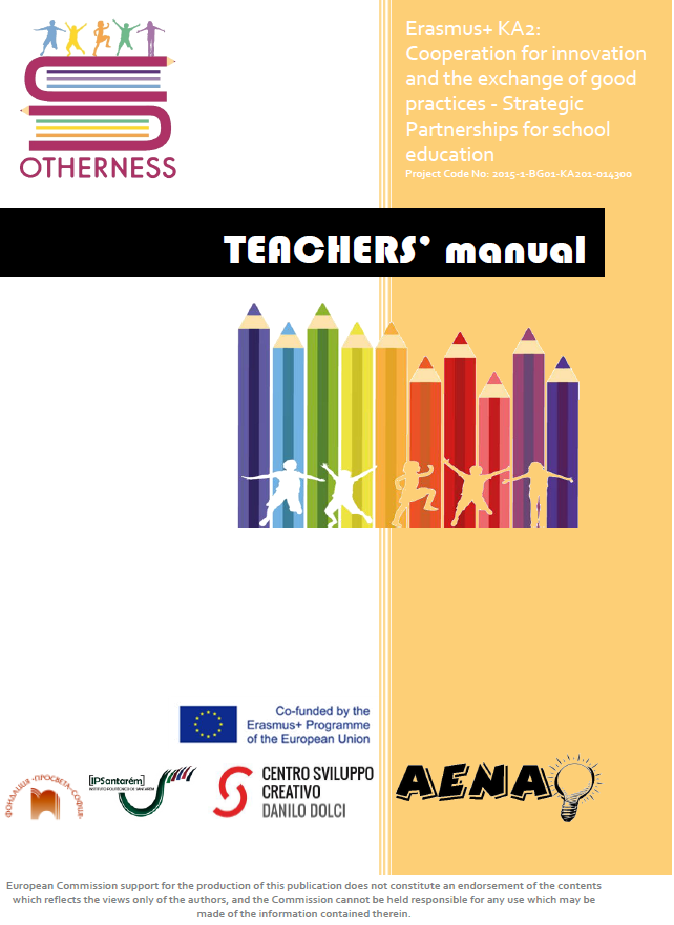 |
| 3 | ||
 | ||
| Teachers’ Manual in Civic Education – secondary school The publication is created within the European project "My Europe – Your Europe – Your Say" (ME-YOU-US), which includes six organizations: Prosveta-Sofia Foundation, Instituto Politecnico de Santarém (Portugal), Center for non-formal education AENAO (Greece), Społeczna Akademia Nauk (Lodz, Poland), Inspectoratul Scolar Jud.Dolj (Craiova, Romania), Altius Francisco De Vitoria Foundation (Spain) The project is implemented within the Erasmus program, according to Grant Agreement No. 2018-1-BG01-KA201-047913 with Human Resources Development Center, the Erasmus National Agency for in Bulgaria. Authors: © Elena Lazarova. (Prosveta-Sofia Foundation) © Ana Da Silva, Ana Torres, Jose Maurício Dias(Instituto Politecnico de Santarém) © Anastasia Timologou (Center for non-formal education AENAO) © Adam Cogacz, Bozena Zajac (Spolezna Akademia Nauk) © Asya Rafaelova (Altius Francisco De Vitoria Foundation) © Florin Marius Baloi, Ani Draghici (Inspectoratul Scolar Jud.Dolj) The publication is available at http://me-you-us.eu/en/o1/ The images and graphics used are open and premium licensed by Shutterstock and original images of the partners. Reproduction is authorized provided the source is acknowledged. Publisher: © Prosveta-Sofia Foundation, Sofia, 2021 ISBN 978-954-01-4243-2 (pdf) This publication reflects the views only of the author, and the Commission cannot be held responsible for any use which may be made of the information contained therein.
| ||
| 4 | ||
 | ||
|
Acknowledgements The world we live in differs quite a lot from the place we lived in even a couple of decades ago. The ethnic and religious backgrounds of the people populating the European countries are drastically more diverse compared to any period in the history of the continent. So, we have to learn how to live together and how to benefit from one another. Schools can play a vital role in making students more open to otherness. The mission of education is to counteract prejudices and discrimination, and to boost mutual respect and tolerance among groups of people with different lifestyles. To support teachers in in their task, we created a Teacher’s Manual and a Digital Tools pack comprising ready-to-use resources for extracurricular trainings in schools.
Elena Lazarova
Researcher and project manager
My Europe – Your Europe – Your Say project
Prosveta – Sofia Foundation
Bulgaria
| ||
| 5 | ||
 | ||
| | ||
| 6 | ||
 | ||
| Introduction Every individual is unique, equally worthy and has the right to live according to their beliefs, customs, practices and established behavior rules. But what is the meaning of all these?
Nelson Mandela.
| ||
| 7 | ||
 | ||
|
| ||
| 8 | ||
 | ||
| Instruction to teachers
The project “My Europe – Your Europe – Your Say” was developed as an effort to support values and attitudes to students so that they could respect the different, the diverse and the unique. It is addressed to students aged from 12 to 16 years old, since this is considered as an appropriate age range where interventions such as this one can have an actual impact. Closing, your main objective must be to enhance the development of the teenagers’ skills and self-esteem, which originates from their own personal skills. In this way you shall help students to develop a positive attitude and behavior towards Otherness. Introducing new teaching methods may become stressful at the beginning. The following advice could significantly help you in order to properly implement the project.
| ||
| 9 | ||
 | ||
Class preparation
| ||
| 10 | |||||||||||||||||||||||||
 | |||||||||||||||||||||||||
Hopes & fears / Group Contract
| |||||||||||||||||||||||||
| 12 | ||
 | ||
| NON FORMAL EDUCATION Teaching methods
| ||
| 13 | ||
 | ||
| 3. Role-playing games In role-playing games a certain situation is carried over from the real world into the frame of the role-playing game. Role-playing games are useful when we wish to analyze certain behaviors or to test new or alternative behaviors within a controlled and safe framework. In order to use the role-playing games it is necessary to have a warm and open-minded atmosphere in the class. It is important that all participants are aware of the meaning of the role-playing games and that they agree on certain basic rules in order to work together in a structured manner. Therefore, the educator has to explain in brief the methodology of the role-playing games and further on, the class has to set some rules for the students, playing the roles, and for the students, watching the game, before the game starts. Then, the topic is defined as a certain situation and is described with every detail in order to help all participants to understand it. Every scene chosen should not last longer than a few minutes. Students, not participating actively in the role-playing game, function as the observers and they are the audience. The educator acts as the coordinator or “director” and is responsible for planning, carrying out and evaluating the activity.
A mind map (Wikipedia) is a diagram used to visually organize information. A mind map is often created around a single concept, drawn as an image in the center of a blank page, to which associated representations of ideas such as images, words and parts of words are added. Major ideas are connected directly to the central concept, and other ideas branch out from those. Mind maps can be drawn by hand, either as "rough notes" during a lecture, meeting or planning session, for example, or as higher quality pictures when more time is available.
| ||
| 14 | ||
 | ||
|
9. Reciprocal Maieutic Approach
| ||
| 15 | ||
 | ||
|
11. Blue skies thinking 12. Snowballing Snowballing enables participants to think about their own responses and gradually reach out to those around them to consider the thoughts of others on an issue. | ||
| 16 | ||
 | ||
USE OF DIGITAL TOOLS
| ||
| 17 | ||
 | ||
EVALUATION
What is to be evaluated?
Within the "My Europe - Your Europe - Your Say" project evaluation will be carried out to examine the Teacher’s Manual (TM) and the Digital Tools Resource Pack (DT). | ||
| 18 | ||
 | ||
Evaluation methods and strategies
| ||
| 19 | ||
 | ||
| Teachers' feedback Analyzing the feedback it turned out that a diversity of answers apply to the activities, and their evaluation appears to be very positive. Role playing (stepping in someone’s shoes), discussions of everyday issues like grownups and the energizers and relaxation activities are definitely what teachers report to be the most liked activities in all trainings. Another trend is that both teachers and students rate very high the videos and presentations. The teachers found the resources very challenging and their comments are encouraging, such as:
The directions are clear and understandable. There is enough guidance and explanation of procedures for the teacher. The instructions couldn’t have been better!
Quite naturally, not all teachers (and students) liked all the activities due to individual/ local community/ country specifics, e.g. Sexual orientation is reported not to be acceptable for Greek schools; discussing homosexuality with 11-year olds in a relatively closed community in a small town in Bulgaria proved to be a bit embarrassing for everybody, etc. | ||
| 20 | ||
 | ||
|
The teachers suggested numerous modifications of the training resources related to distance learning. The authors of the resources and the partners’ teams discussed the suggested changes and issues and made the changes they consider relevant based on the teachers’ feedback. All technical issues have been resolved. | ||
| 21 | |||||
 | |||||
| Energizers
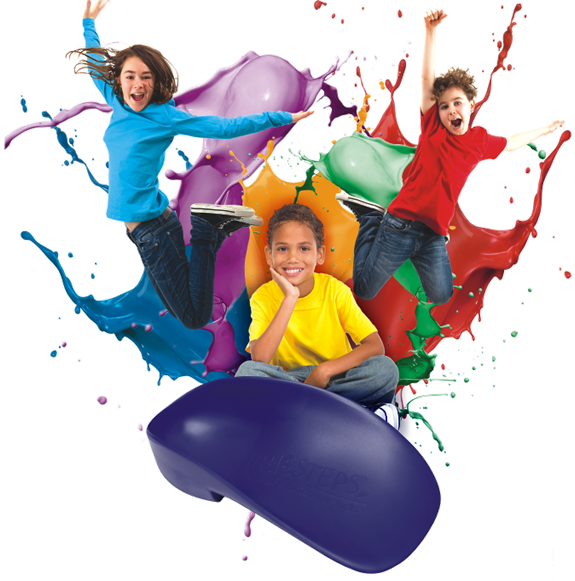 | |||||
| 22 | ||
 | ||
| Energizers | 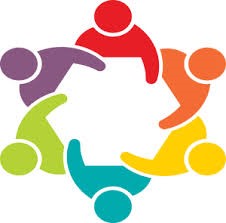 1 - Break the Circle 1 - Break the Circle The teacher assigns randomly a number to each student, depending on the group size, i.e. for 20 students, numbers 1-4 are ok, so each group has 5 people (groups could be synthesized by the students with the same number, i.e. all having been assigned number ‘1’ or by students where each one has his/her own unique number 1-4; similarly and more fun is grouping by ingredient for a Greek salad, where every student is i.e. ‘tomato’, ‘cucumber’, ‘onion’, ‘oregano’, etc.) Once the groups have been formed, they make circles and the teacher randomly picks a number (or an ingredient) to step out of the circle and try to break in, while the others remaining are instructed to not let go of their hands no matter what. This can be repeated once more with another number stepping out. | |
| Energizers |  2 - Moo!!! 2 - Moo!!! The teacher assigns randomly in a piece of paper (turned upside down on their desks) each student with farm animal, i.e. ‘cow’, ‘horse’, ‘sheep’, ‘rooster’, etc. Once the students are informed of their animal role, they are instructed to walk around the room acting like the animal they are assigned (i.e. making its sound), in order to find their kind. | |
| Energizers | 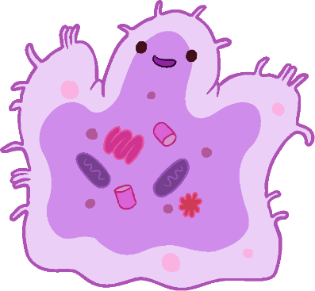 3 - Amoeba 3 - Amoeba An evolution game! Everyone starts off as an amoeba, with the purpose of evolving to a human. All students walk around acting like an amoeba and when they meet with another amoeba, they play one round of rock/paper/scissors. Whoever wins evolves into a worm. When two worms meet they play again rock/paper/scissors and whoever wins turns into a wasp, but whoever loses goes back to becoming an amoeba. This continues until one becomes human. The evolution stages are: amoeba à worm à wasp à chicken à monkey à human. | |
| Energizers |  4 - Human chain 4 - Human chain Everybody stands up in a circle. They close their eyes and start moving towards the middle of the circle, holding their hands up. Whoever they touch with their hands, they hold and do not let go, so they make a knot. Then the facilitator asks the students to open their eyes and try to untangle themselves (make a circle) without letting go of their hands. | |
| Energizers |  5 - Good morning or evening 5 - Good morning or evening Everybody walks around the room greeting each other (as if everybody was their close friends) using words and gestures (shake hand, kiss, hug). Then they repeat the greeting in silence using only their eyes. When the exercise is over, the teacher asks students how did they feel with the two different ways of greeting (eg was it difficult, how did they manage to communicate, etc). | |
| 23 | |||||||||||
 | |||||||||||
| Energizers | 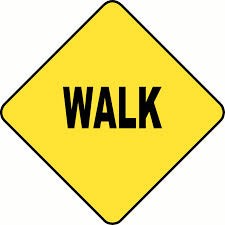 6 - Keep walking 6 - Keep walking The teacher instructs the students to walk in different manners covering the whole rook, i.e. walk like you are very happy, walk like a very heavy elephant, walk like you are 80 years old, walk like it’s raining cats and dogs, walk like a toddler, etc. | |
| Energizers | 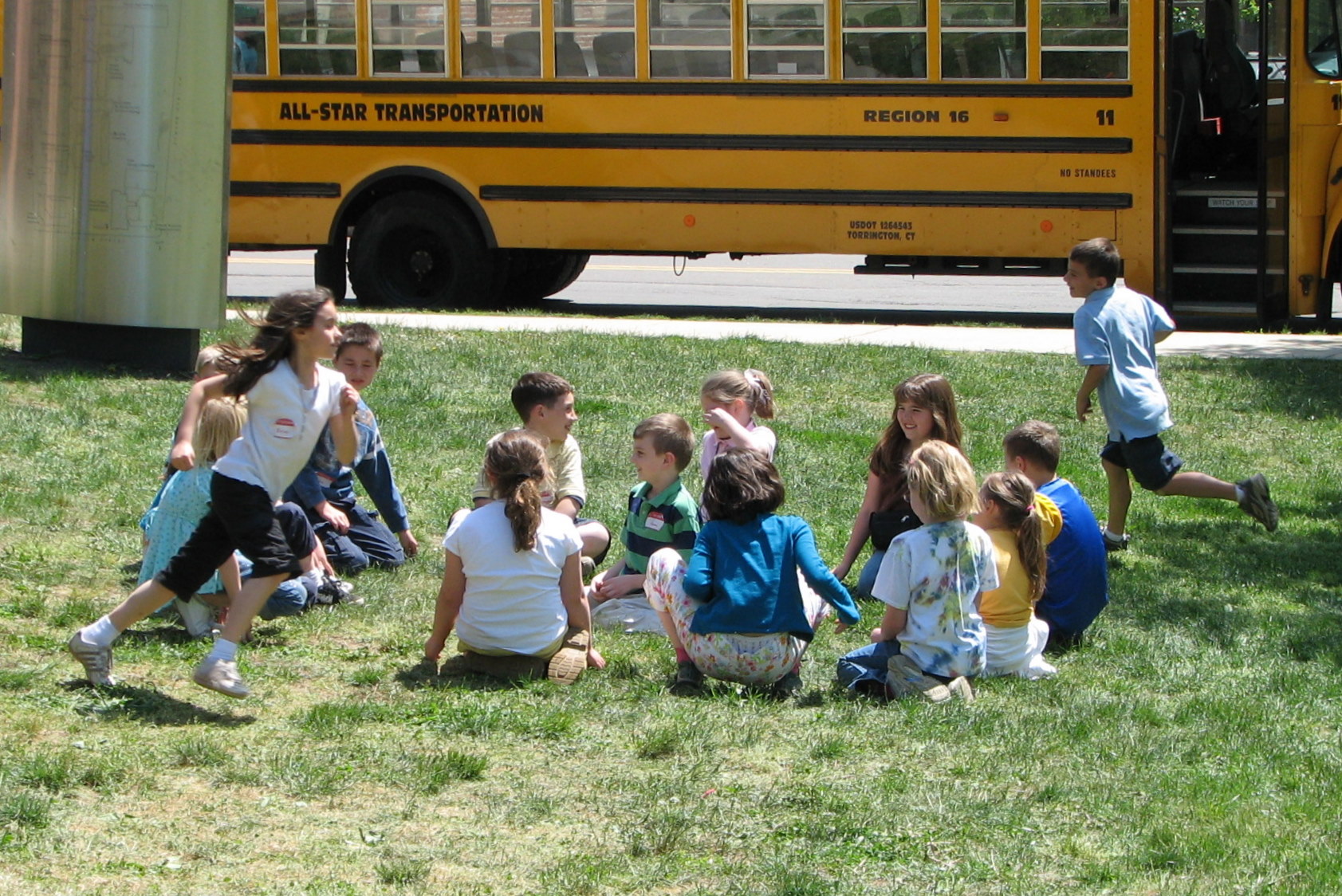 7 - Connecting eyes 7 - Connecting eyes Participants stand in a circle. Each person makes eye contact with another person across the circle. The two walk across the circle and exchange positions, while maintaining eye contact. Many pairs can exchange at the same time, and the group should try to make sure that everyone in the circle is included in the exchange. Tip: Begin by trying this in silence and then exchange greetings in the middle of the circle. Variations: If the teacher considers, knowing the class atmosphere, that some students might be left not participating, i.e. they try to make eye contact but nobody responds to them and they have no chance to move from their initial position, the moderator could divide the class in 2 groups and introduce a competitive element – after the activity each group will be marked on the ‘team spirit thermometer’ (which could be printed on a A4 paper and the teacher marks the degrees with a marker). The more people you have left not participating in the ‘eye contact’ activity – the lower the degrees to be marked on the thermometer. | |
| Energizers | 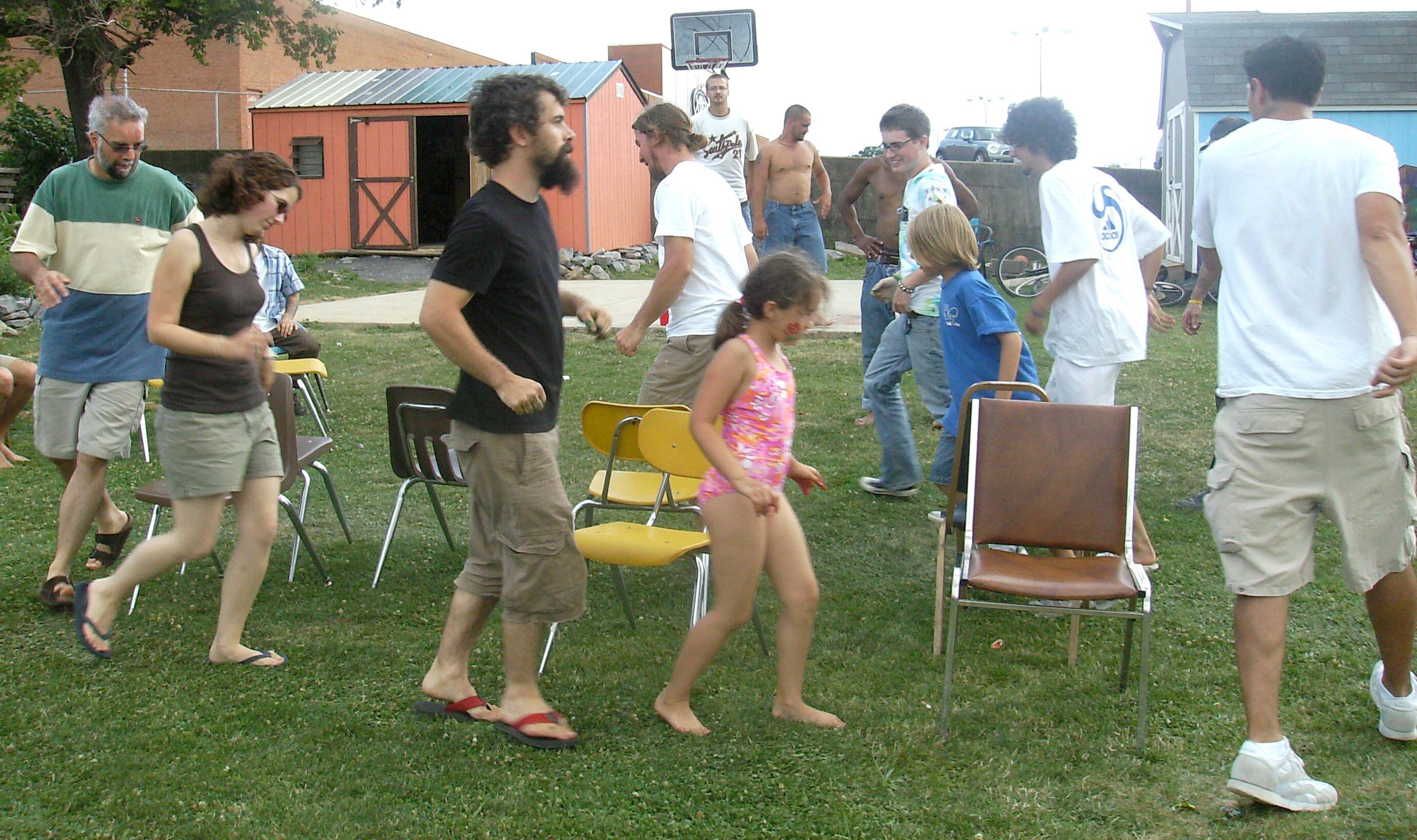 8 - Find another seat: 8 - Find another seat: Have the students sit on chairs in a circle, with the number of chairs being one less than the number of students. The student without a chair stands in the middle and tells their name. Then the student calls out a characteristic or a colour, or type of clothing, e.g. “Everyone wearing orange!”. All participants who are wearing orange must get up and find another seat, but not the one immediately to their right or left. The student in the middle races to find a seat and the person left standing becomes the next caller in the middle. | |
| Energizers |  9 - Balloon pop 9 - Balloon pop Have everyone form a circle. Instruct the participants to put one piece of information about themselves, e.g. I have 2 sisters, or my mother is called Samy, on a small slip of paper, fold it, and put it in a blown up balloon. Throw the balloons in the middle of the circle and then have people take turns popping a balloon, reading the piece of paper, and guessing to whom the information applies. Participants could wander round the room asking ‘yes/ no’ questions to the other participants but not exactly the statement from the paper slip, e.g. they cannot ask “Have you got 2 sisters? But could ask “Have you got sisters?” and then “Have you got more than 1 sister?’, “Have got less than 3 sisters?”, etc. Game finishes when all participants have identified the author of the paper slip they have. *Note: this exercise should be used if there is enough time. | |
| 24 | ||||||||||||||
 | ||||||||||||||
| Energizers |  10 - Rope game 10 - Rope game Have the participants stand on the middle of a space cleared of desks, chairs, etc. Divide the room in a way that allows them easily to move from one half of the room to the other, e.g. by placing a long piece of rope on the floor. The teacher stands at one of the ends of the rope and calls out a characteristic, or a colour or a letter, e.g. “Everyone having blue eyes!”; “Everyone having 3 brothers”, “Everyone whose name begins with B”, etc. and points to the part of the room where the participants wearing orange/ having 3 brothers/ having B names have to move to. All participants who are wearing orange/ having 3 brothers/ having B names move to the respective part of the room; the ones who are not , have to go to the other part. Questions have to be constructed so that the class does not divide in groups having comparatively equal number of students, i.e. one of the groups should consist (in most cases) of one, two or few students. Debriefing: Participants are asked to share how they felt when they were part of a big group; and when they were standing alone (or were part of a very small group); what did they feel of themselves (as part of a small/ big group), and what their feelings were towards the group they were not part of. | |
| Energizers | 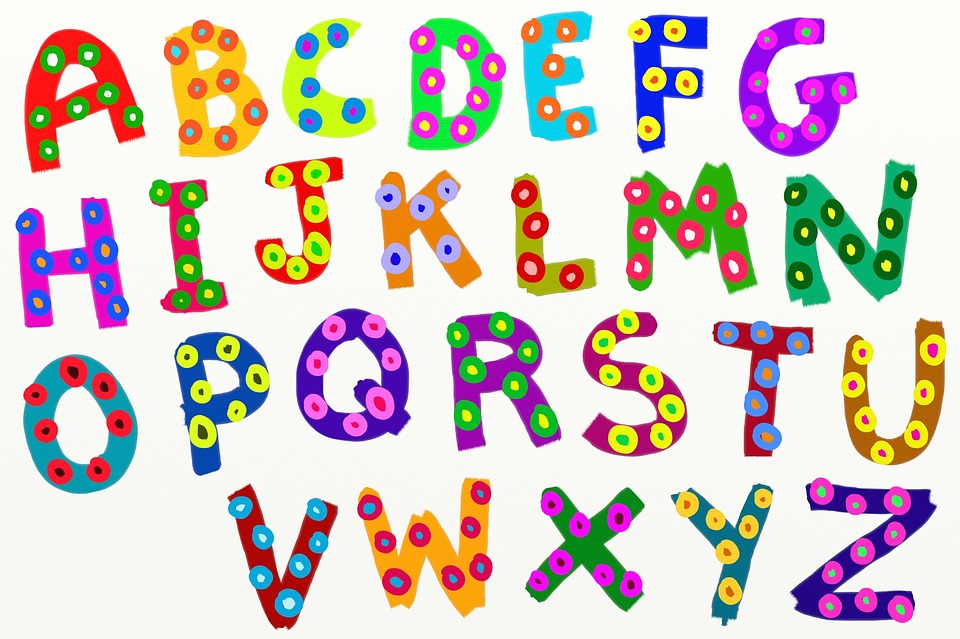 11 - Alphabetical order 11 - Alphabetical order Students make a circle with the chairs, take off their shoes and get on the chairs (one per person - the circle needs to be as close as possible). Standing on the chairs and just moving from one to another one without getting off, students have to arrange themselves in alphabetical order according to their name. As soon as they are ready, teacher will check if they are right; if not they continue until they are right. | |
| Energizers | 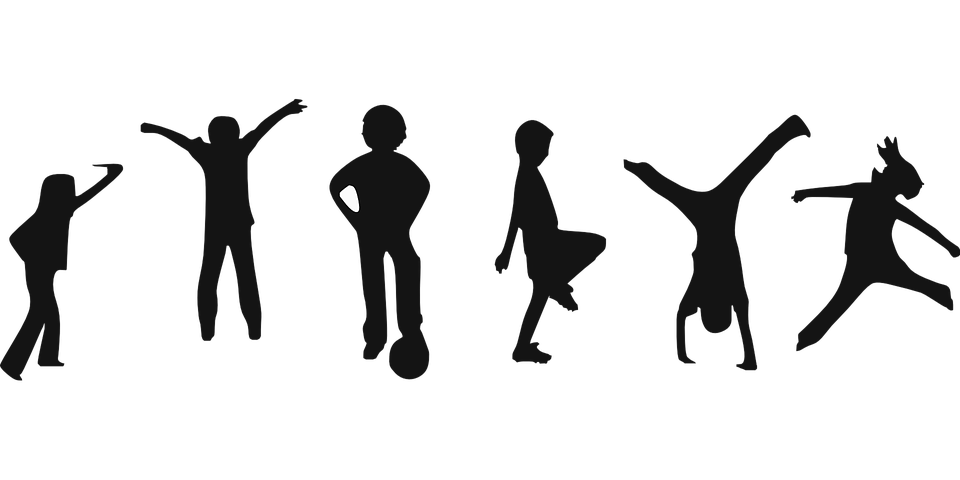 12 - Body spelling 12 - Body spelling Teacher asks students to write their name in the air using different parts of their body, for example with the hand/leg/elbow/nose. Optional: If time allows teacher asks to the class to spell out some words reproducing the letters with their bodies. Students can collaborate all together or can create different groups. | |
| Energizers | 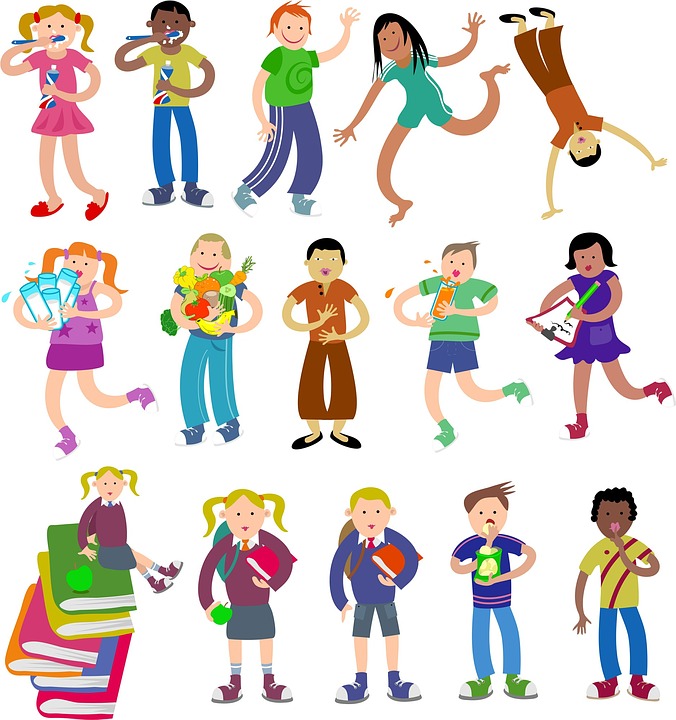 13 - Simon says 13 - Simon says Teacher tells the group that they should follow instructions when he/she starts the instruction by saying “Simon says...”. If the teacher does not begin the instructions with the words “Simon says”, then the group should not follow the instructions! The teacher begins by saying something like “Simon says clap your hands” while clapping their hands. The participants follow. The teacher speeds up the actions, always saying “Simon says” first. After a short while, the “Simon says” is omitted. Those participants who do follow the instructions anyway are ‘out’ of the game. The game can be continued for as long as it remains fun. | |
| Energizers | 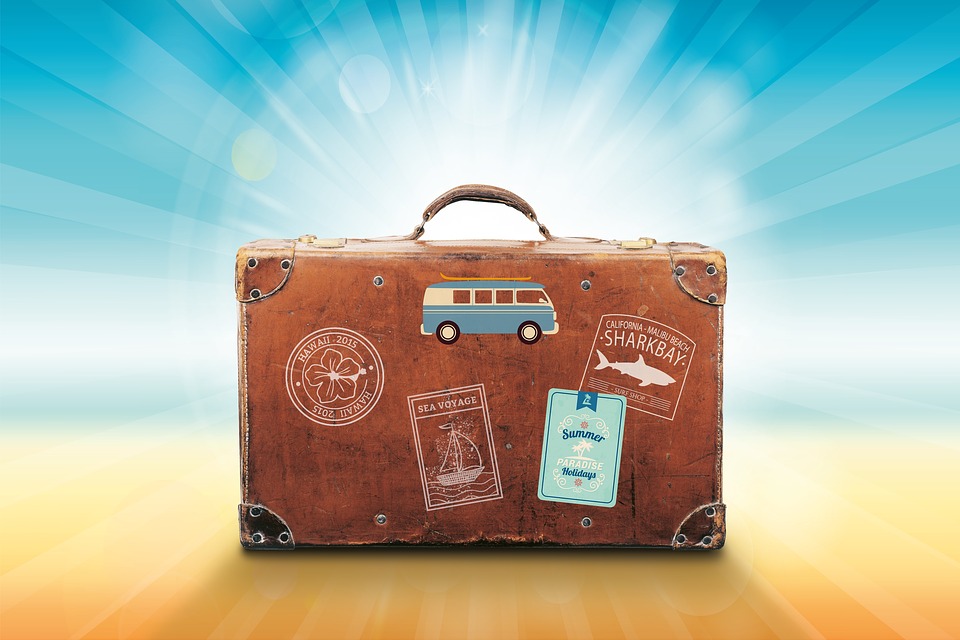 14 - I am going on a trip 14 - I am going on a trip Everyone sits in a circle. Start by saying “I’m going on a trip and I’m taking a hug”, and hug the person to your right. That person then has to say “I’m going on a trip and I’m taking a hug and a pat on the back”, and then give the person on their right a hug and a pat on the back. Each person repeats what has been said and adds a new action to the list. Go round the circle until everyone has had a turn. | |
| 25 | ||||||||||||||
 | ||||||||||||||
| Energizers | 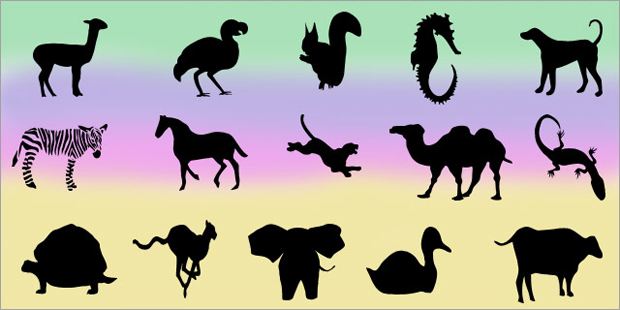 15 - Animal roundup 15 - Animal roundup The teacher tells to the class to silently think of an animal. Then he/she tells to the group that without talking, they need to arrange themselves on a line from largest to smallest animals. Group members can only make gestures and the noise of their animal. After they have finished, teacher ask to the students to say the animal they were supposed to be to see if the order is correct. | |
| Energizers | 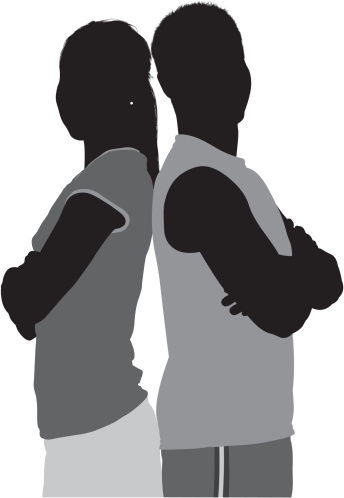 16 - Back to back 16 - Back to back Participants find a pair of similar size and weight. They sit on the floor, back to back with their pair. They hold their arms. They have to get up, while keeping the arms and backs together. After trying once-twice with their pair they switch pairs. They can repeat this process with other pairs for a few times. | |
| Energizers | 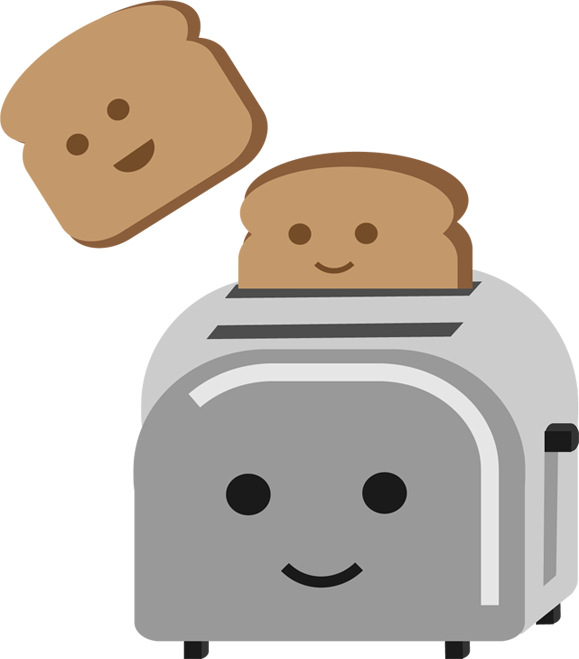 17 - Toaster or Rock Star 17 - Toaster or Rock Star The group starts in a circle with one person in the center. The person in the center points at someone in the circle and says “Toaster” or “Rock star”.
| |
| Energizers | 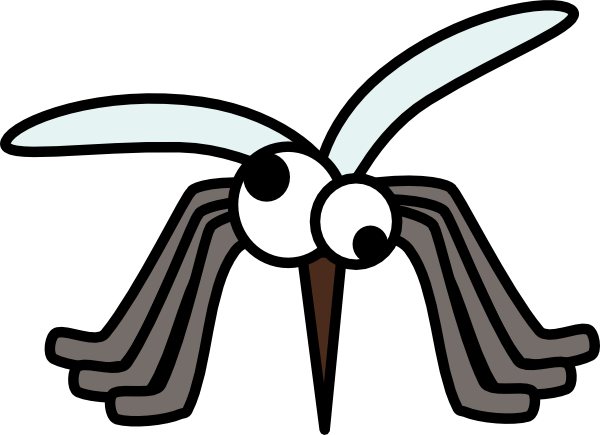 18 - Mosquito game 18 - Mosquito game The group stands in a circle and the facilitator tells a story about a plague of mosquitoes and that everybody has to kill the mosquitoes so as they don’t get malaria. The facilitator puts up a mosquito on the head of a person who must lower in order to avoid the mosquito. The two persons next to that person must clap their hands above his/her head to kill the mosquito, but the mosquito escapes and it goes on. When the group is already doing the game well and quickly, the facilitator will add more mosquitoes until it is almost impossible for the group to catch as many mosquitoes. | |
| Energizers |  19 - Grab the finger 19 - Grab the finger In a circle, place right finger on next person s left palm. Try to grab a finger before yours gets grabbed. After doing several times switch; place left finger on next person s right palm and repeat the process for a few times. | |
| 26 | |||||||||||||||||||||||||||||||||||||||||||||||||||||||||||||||||||||||||||||||||||||||||||||||||||||||||||||||||||||||||||||||||||||||||||||||||||||||||||||||||||||||||||||||||||||||||||||||||||||||||||||||||||||||||||||||||||||||||||||||||||||||||||||||||||||||||||||||||||||||||||||||||||||||||||||||||||||||||||||||||||||||||||||||||||||||||||||||||||||||||||||||||||||||||||||||||||||||||||||||||||||||||||||||||||||||||||||||||||||||||||||||||||||||||||||||||||||||||||||||||||||||||||||||||||||||||||||||||||||||||||||||||||||||||||||||||||||||||||||||||||||||||||||||||||||||||||||||||||||||||||||||||||||||||||||||||||||||||||||||||||||||||||||||||||||||||||||||||||||||||||||||||||||||||||||||||||||||||||||||||||||||||||||||||||||||||||||||||||||||||||||||||||||||||||||||||||||||||||||||||||||||||||||||||||||||||||||||||||||||||||||||||||||||||||||||||||||||||||||||||||||||||||||||||||||||||||||||||||||||||||||||||||||||||||||||||||||||||||||||||||||||||||||||||||||||||||||||||||||||
 | |||||||||||||||||||||||||||||||||||||||||||||||||||||||||||||||||||||||||||||||||||||||||||||||||||||||||||||||||||||||||||||||||||||||||||||||||||||||||||||||||||||||||||||||||||||||||||||||||||||||||||||||||||||||||||||||||||||||||||||||||||||||||||||||||||||||||||||||||||||||||||||||||||||||||||||||||||||||||||||||||||||||||||||||||||||||||||||||||||||||||||||||||||||||||||||||||||||||||||||||||||||||||||||||||||||||||||||||||||||||||||||||||||||||||||||||||||||||||||||||||||||||||||||||||||||||||||||||||||||||||||||||||||||||||||||||||||||||||||||||||||||||||||||||||||||||||||||||||||||||||||||||||||||||||||||||||||||||||||||||||||||||||||||||||||||||||||||||||||||||||||||||||||||||||||||||||||||||||||||||||||||||||||||||||||||||||||||||||||||||||||||||||||||||||||||||||||||||||||||||||||||||||||||||||||||||||||||||||||||||||||||||||||||||||||||||||||||||||||||||||||||||||||||||||||||||||||||||||||||||||||||||||||||||||||||||||||||||||||||||||||||||||||||||||||||||||||||||||||||||
| Energizers |  20 - Chief of clan 20 - Chief of clan Everyone stands in a circle. One participant closes his/her eyes or steps out of the room. He/She will have to guess who is the chief of the clan. One participant volunteers to be the secret Chief (quietly, so the "guesser" can't hear anything). The chief begins an action such as snapping fingers, patting the tummy, or slapping knees, and everyone in the circle imitates him/her. The guesser returns to the room and tries to figure out who the chief is. As the guesser looks around, the chief changes the action avoiding being detected. | |
| Energizers |  21 - Name game with balls 21 - Name game with balls Students stand in a circle. The teacher gives a ball to one of the students. He/she holds the ball, then says the name of another participant and passes them the ball. After a few passes, the teacher adds one more ball in the game, and then – another one. This way there will be 2/3/4 balls in the air at a time and all participants will be calling each other’s names | |
| Energizers | 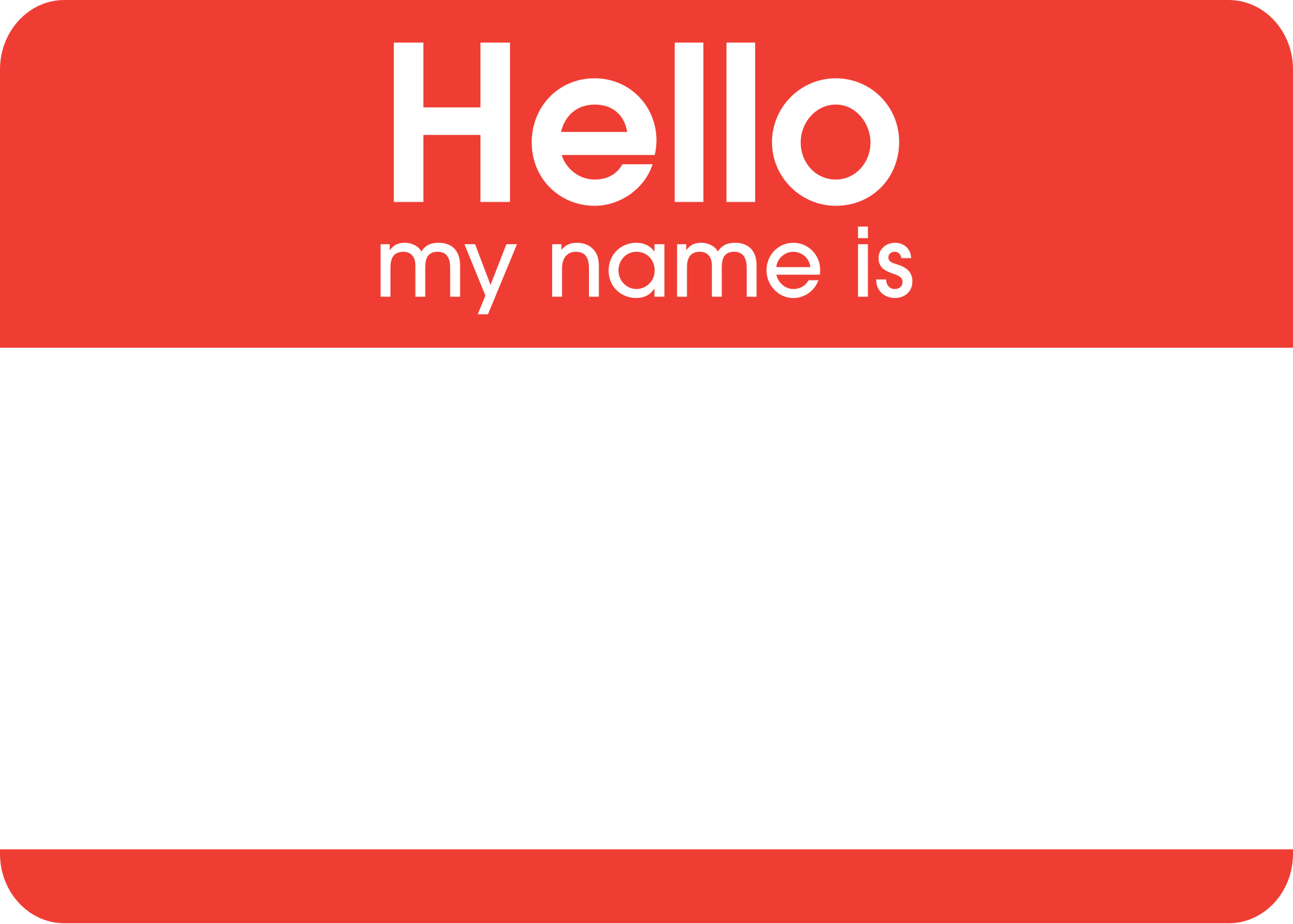 22 - Names and adjectives 22 - Names and adjectives Participants stand in a circle; they think of an adjective to describe character or how they are feeling. The adjective must start with the same letter as their name, for instance, “I’m Maria and I’m merry”. Or, “I’m Alexander and I’m amazing.” As they say this, they can also mime an action that presents the adjective in a meaningful way. (N.B. In the national language versions of the TM there should be used popular names for the country and relevant adjectives in the respective language). Variation (use if time allows): The game could also be used a memory game (concentration game) to check if the rest of the group has remembered the ‘name-adjective’ pairs. After several rounds (each participant repeating his name and adjective, the teacher/ a game master, checks if the group remembers the ‘names-adjectives’ fixed pairs by saying the name of one of the students, e.g. ‘Maria’; Maria steps forward to the middle of the circle and the rest of the group are expected to come up with the adjective previously linked to the name by saying “Maria is merry”. If they cannot guess, the participant in the circle (Maria) might mime again the adjective as a tip. | |
| 27 | |||
 | |||
| Relaxing Exercises
|  | ||
| 28 | ||
 | ||
| Relaxing Exercises | 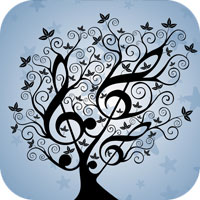 1 - Guided fantasy 1 - Guided fantasy Students are asked to close their eyes (if comfortable) and, with the guidance of the facilitator, slowly imagine a scene of the past or future event. More and more details are used to describe the event with all senses and thoughts. A suggested brief script could be à Begin by breathing slowly and deeply… Think of yourself in a place where you feel relaxed and at ease… Create all the details in your mind, what do you see… what the sounds are like, the smells and colors of this special place… Are there any people …? Rossman, 2016 | |
| Relaxing Exercises | 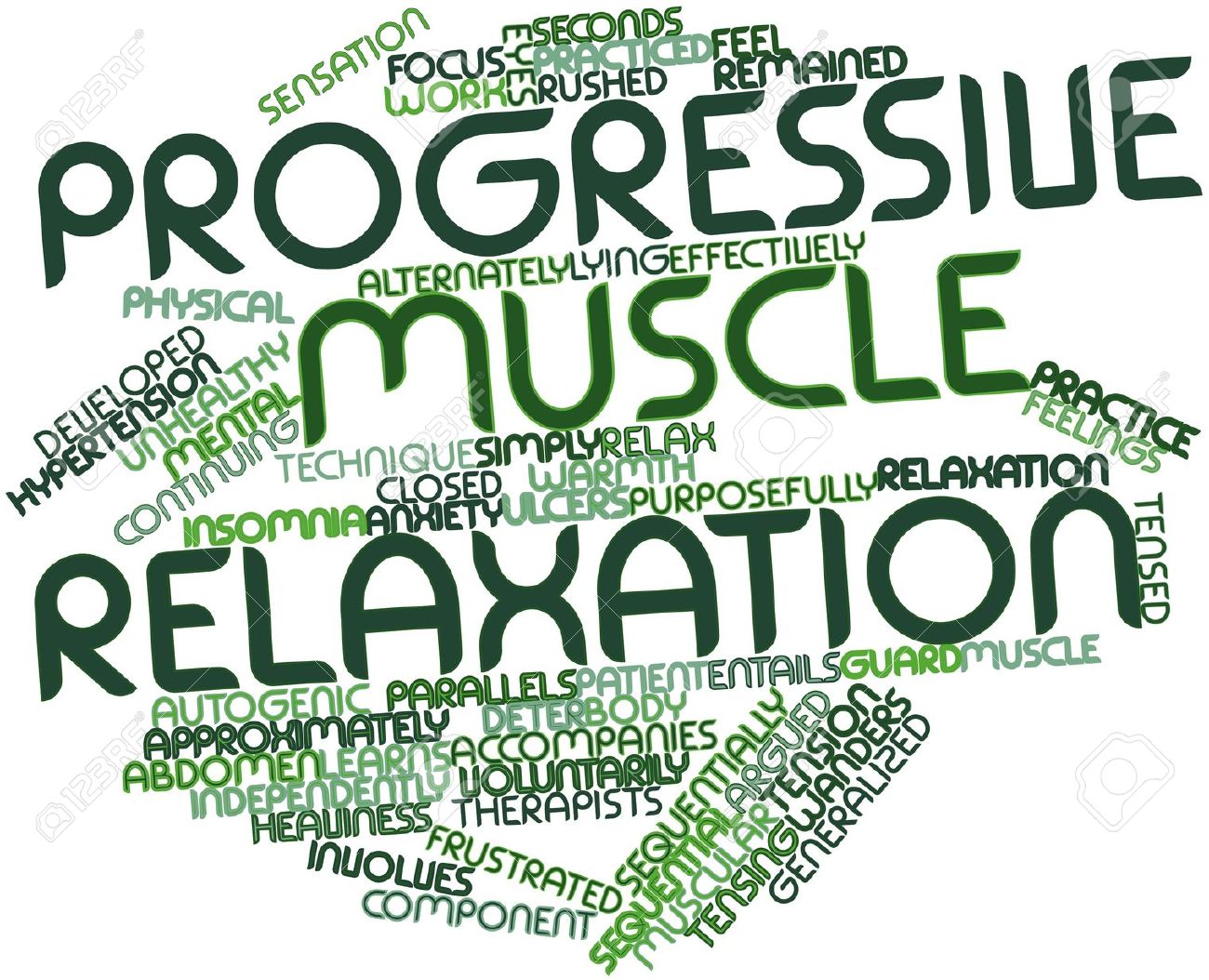 2 - Progressive muscle relaxation 2 - Progressive muscle relaxation To release tension from head to toe, students are asked to close their eyes (if comfortable) and focus on tensing and relaxing each muscle group for two to three seconds each. The teacher guides the students; he/she asks them to start with the feet and toes, then move up to the knees, thighs, rumps, chest, arms, hands, neck, jaw, and eyes—all while maintaining deep, slow breaths. Kelly Roper | |
| Relaxing Exercises | 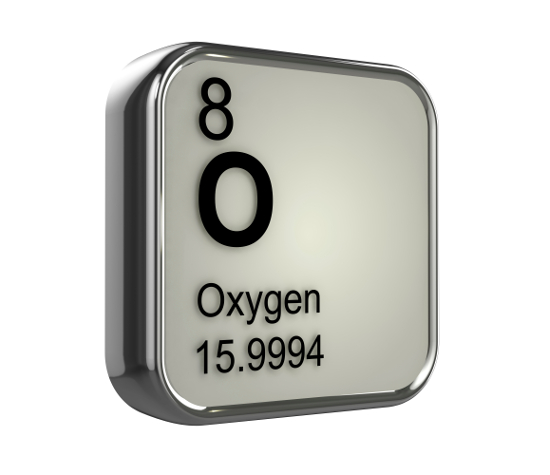 3 - Guided breathing 3 - Guided breathing Teacher asks the students to close their eyes (if comfortable), inhale for a count of four, then exhale for a count of four (all through the nose, which adds a natural resistance to the breath). Then, with one hand on the chest and the other on the belly, the students can take a deep breath in through the nose and exhale through the mouth, ensuring this way that the diaphragm (not the chest) inflates with enough air to create a stretch in the lungs Jordan Shakeshaft | |
| Relaxing Exercises |  4 - Visualization using color/soothing sound 4 - Visualization using color/soothing sound Facilitator asks the students to imagine a favorite color that makes them feel peaceful and safe. They keep their imagine taking in that color with each breath and sending it throughout their entire body as they exhale. They continue until they visualize being filled with their special, relaxing color. The same exercise can be performed using soothing sound or aroma. Also, it is more effective if relaxing music is used. Kelly Roper | |
| Relaxing Exercises | 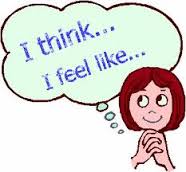 5 - Use a word that describes their feelings/thoughts 5 - Use a word that describes their feelings/thoughts Students are asked to close their eyes (if comfortable) for a minute and think of a word that describes their feelings/thoughts after finishing the resource. Then the students open their eyes and one by one say their word to the classroom | |
| 29 | ||||||||
 | ||||||||
| Relaxing Exercises | 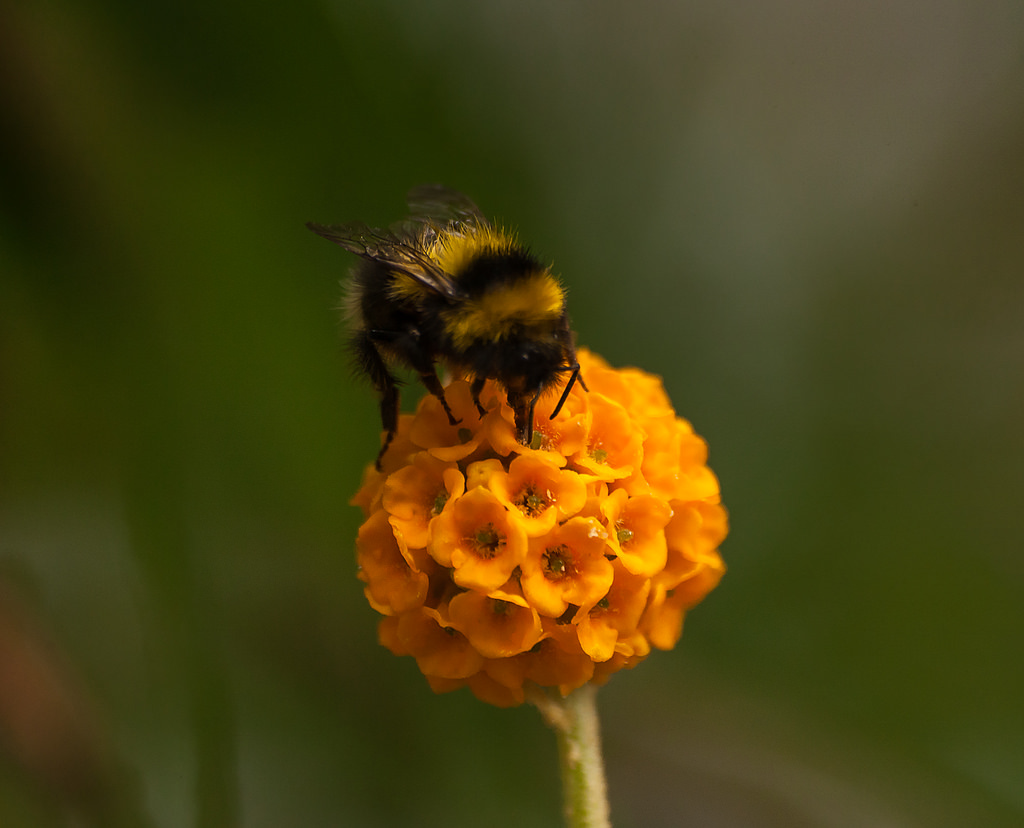 6 - Bee breathing 6 - Bee breathing The teacher instructs the students to get in a comfortable position to practice bee breathing. They have to imagine that they are sitting on a leaf or a flower petal, to sit straight and allow the leaf or petal to gently support them. The teacher gives students the following instructions: Breathe in, allowing the air to just gently come in through your nose, filling up your lungs. As you breathe out, buzz like a bee. See how long your buzz can last. See how far your bee is going to fly before sitting down and resting again. Buzz. Buzz. Buzz. On the next breath, see if your bee can fly with a loud, strong buzz. On the next breath, see if your bee can fly with a soft buzz. When the exercise is finished, the teacher gives time for a short discussion: Does it feel different with a strong or a soft buzz? How does your body feel? Optional (use if time allows): After breathing practice, draw a picture of a bumblebee and the leaf or flower that you were “sitting on” in your imagination. This picture can be used as a relaxation practice reminder. When you see the picture, practice being like a Bee on a leaf and practice a Bee breath. | |
| Relaxing Exercises |  7 - Strong as a tree 7 - Strong as a tree All students spread out in the room. With their feet firmly planted on the ground, they pretend they are trees that are slowly swaying back and forth with a breeze. The movements become stronger as a storm approaches. The students try to make their movements as strong as possible, but remember to keep their feet on the ground. Slowly the wind dies down and the trees can rest. | |
| Relaxing Exercises | 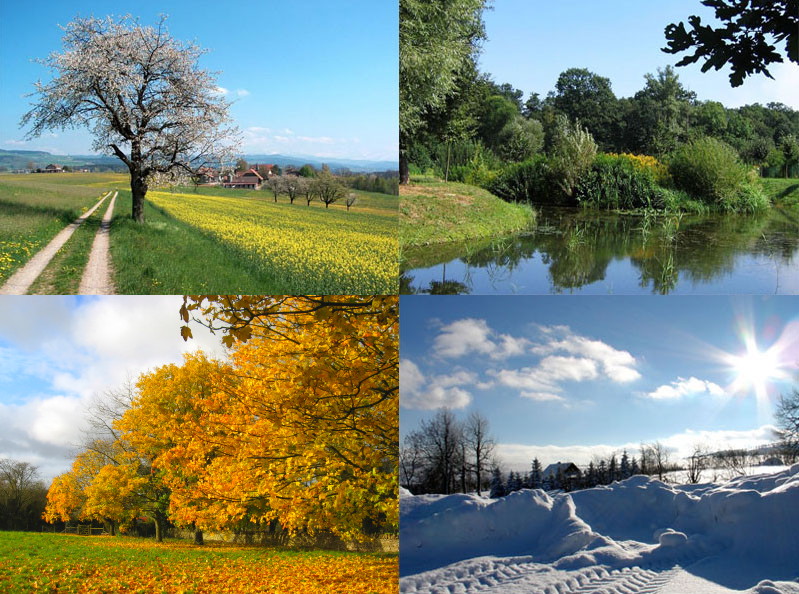 8 - Seasons of the year 8 - Seasons of the year All players sit in a circle, but not too close to one another. The teacher moves like a plant during the seasons of the year. Winter: the plants are small, weak and are crunched together on the ground. Spring: through the stronger sunshine, the plants grow slowly and slowly rise. Summer: through the warm sun, the plants slowly open their arms, the flowers open their blooms are stand up straight. Autumn: the sun rays become weaker. The plants begin to slowly shrivel, the blooms and leaves begin to fall away. | |
| 30 | |||||||||||
 | |||||||||||
| Relaxing Exercises | 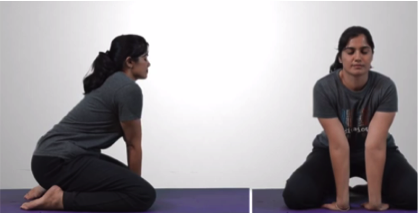 9 - Lion's breath 9 - Lion's breath Lion’s breath is a playful way to release and relax into more peaceful feelings. The trainer tells students that they are going to do a breath called the lion’s breath in order to let go of feelings or thoughts we no longer want. This breath is very helpful in getting those ideas out of us and pushing them far away. Instructions
| |
| Relaxing Exercises |  10 - Mountain range 10 - Mountain range Stand side by side in a line, in mountain pose, your feet hip-width apart. Each foot must touch the foot of the person on each side. Walk (as a group) across the room without separating their feet from your partner’s. Variation: Ask the students to walk on their toes. | |
| Relaxing Exercises | 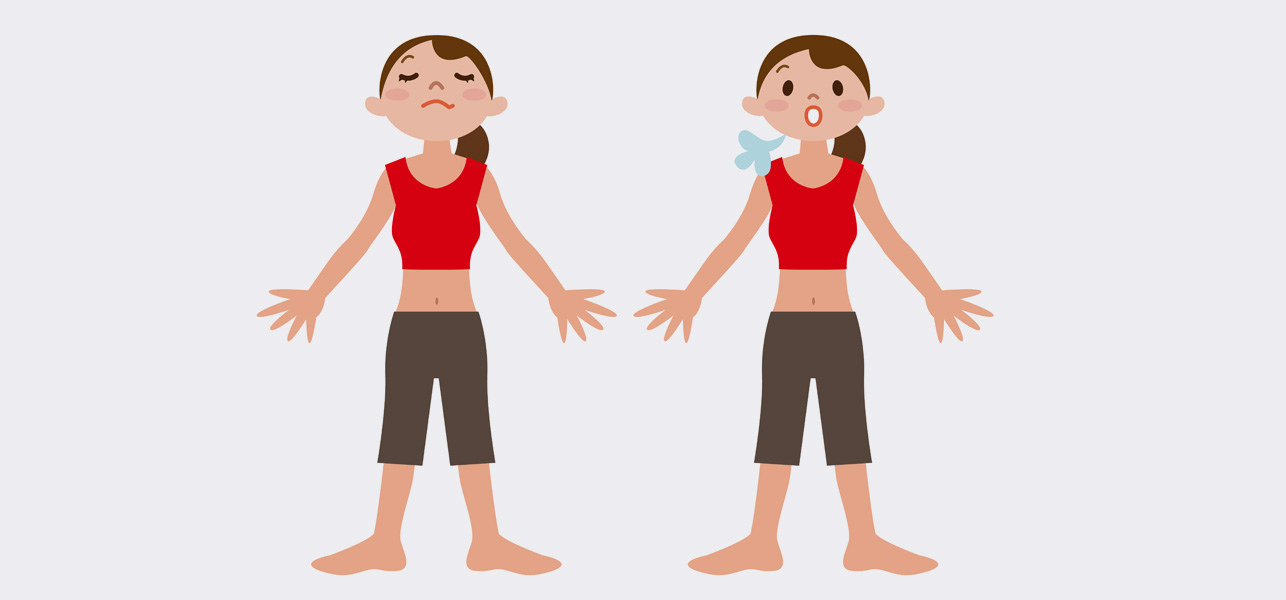 11 - Breathing exercise 11 - Breathing exercise Teacher asks students to make a circle and do the following exercises, repeating each one few times and alternate them. Teacher can also add new ones. Breathing in raise your arms above your head and say “Elevator Up!” Breathing out, float your arms back down to your sides, saying “Elevator Down.” Repeat. Take three quick breaths in while wiggling your nose. Wiggle your nose on each breath in. Then wiggle your nose on each breath out. Hold your hand in front of your nose and hiss hiss hiss while breathing out. | |
| Relaxing Exercises |  12 - Warm back 12 - Warm back A piece of paper is stuck to each student’s back and they are given a pen. The paper is already prepared. Each piece of paper says: “I like………..”. Slow music is played and the students walk around and write characteristics about the person whom they like on the paper. Each child is allowed to look at the paper at the end and take it home. | |
| 31 | ||||||||||||||
 | ||||||||||||||
| Relaxing Exercises | 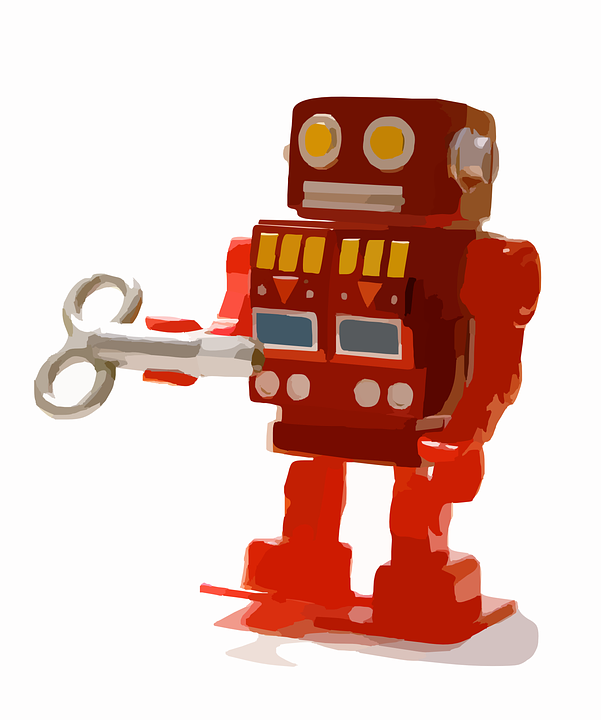 13 - Body massage 13 - Body massage The students stand in a circle: they need to follow all the movement the teacher does and massage themselves. The teacher starts to massage different parts of his/her body, starting from the head till the feet (it’s better if they take off their shoes). The teacher explains how the massage needs to be done, if delicate or more energetic. Optional: The teacher can also ask to the students to massage another classmate. | |
| Relaxing Exercises | 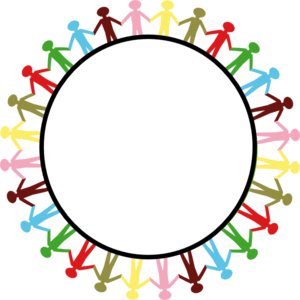 14 - Give me your energy 14 - Give me your energy The students stand in a circle. The teacher starts, pretending he/she is holding a ball on the hands and passing it to the student on his/her right; this one do the same, until the ball comes back to the teacher. The ball needs to be passed in a gentle way, as it is very precious. At the second round, the teacher passes the ball to students in another side of the circle, making a gesture and a noise. The students will do the same until everyone will have touched the ball at least once. The ball can be passed in any way (in form of kick, kiss…), pretending it becomes bigger or smaller depending on the will of the students. | |
| Relaxing Exercises | 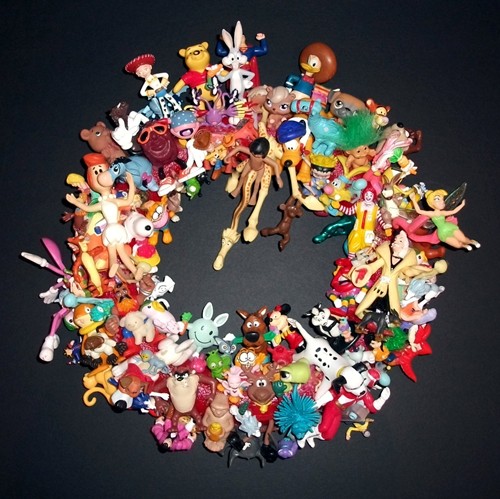 15 - Moving like a toy 15 - Moving like a toy The teacher uses a magic word to change the students into many string-loaded (wind-up) toys. At the teacher’s signal, the toys start to move across the class, as many robots, to get their sits. They have to move more quickly at the beginning and then gradually more and more slowly, because their charge is finishing. Some of them will be frozen in the middle of the room, and the teacher has to give their cranks one more turn to help them reach their seats | |
| Relaxing Exercises | 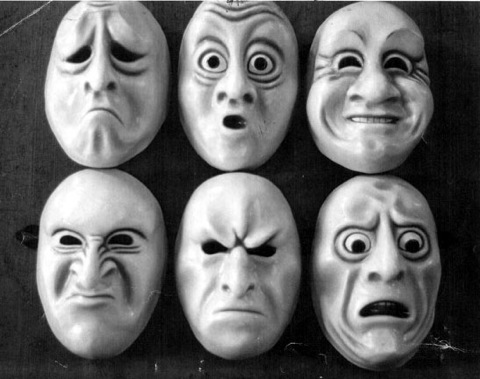 16 - Press the face 16 - Press the face It is like the game "telephone" but instead of passing a word or sentence around the group, participants pass a facial expression. | |
| Relaxing Exercises | 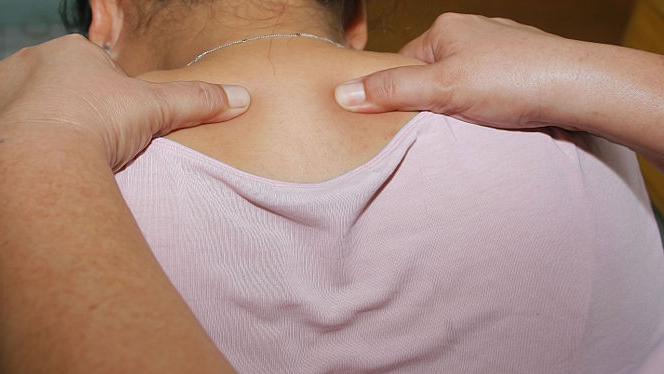 17 - Circle massage 17 - Circle massage The group forms a circle and faces one direction. Each participant places his/her hands on the shoulders of the person in front of her/him. Each person then gives the person who is in front a shoulder massage. The person being massaged can give a feedback. After a few minutes, the group turns the other way so that the person who has been making the massage is then receiving it in return. | |
| 32 | |||||||||||||||||||||||||||||||||||||||||||||||||||||||||||||||||||||||||||||||||||||||||||||||||||||||||||||||||||||||||||||||||||||||||||||||||||||||||||||||||||||||||||||||||||||||||||||||||||||||||||||||||||||||||||||||||||||||||||||||||||||||||||||||||||||||||||||||||||||||||||||||||||||||||||||||||||||||||||||||||||||||||||||||||||||||||||||||||||||||||||||||||||||||||||||||||||||||||||||||||||||||||||||||||||||||||||||||||||||||||||||||||||||||||||||||||||||||||||||||||||||||||||||||||||||||||||||||||||||||||||||||||||||||||||||||||||||||||||||||||||||||||||||||||||||||||||||||||||||||||||||||||||||||||||||||||||||||||||||||||||||||||||||||||||||||||||||||||||||||||||||||||||||||||||||||||||||||||||||||||||||||||||||||||||||||||||||||||||||||||||||||||||||||||||||||||||||||||||||||||||||||||||||||||||||||||||||||||||||||||||||||||||||||||||||||||||||||||||||||||||||||||||||||||||||||||||||||||||||||||||||||||||||||||||||||||||||||||||||||||||||||||||||||||||||||||||||||||||||||
 | |||||||||||||||||||||||||||||||||||||||||||||||||||||||||||||||||||||||||||||||||||||||||||||||||||||||||||||||||||||||||||||||||||||||||||||||||||||||||||||||||||||||||||||||||||||||||||||||||||||||||||||||||||||||||||||||||||||||||||||||||||||||||||||||||||||||||||||||||||||||||||||||||||||||||||||||||||||||||||||||||||||||||||||||||||||||||||||||||||||||||||||||||||||||||||||||||||||||||||||||||||||||||||||||||||||||||||||||||||||||||||||||||||||||||||||||||||||||||||||||||||||||||||||||||||||||||||||||||||||||||||||||||||||||||||||||||||||||||||||||||||||||||||||||||||||||||||||||||||||||||||||||||||||||||||||||||||||||||||||||||||||||||||||||||||||||||||||||||||||||||||||||||||||||||||||||||||||||||||||||||||||||||||||||||||||||||||||||||||||||||||||||||||||||||||||||||||||||||||||||||||||||||||||||||||||||||||||||||||||||||||||||||||||||||||||||||||||||||||||||||||||||||||||||||||||||||||||||||||||||||||||||||||||||||||||||||||||||||||||||||||||||||||||||||||||||||||||||||||||||
| Relaxing Exercises |  18 - Making room 18 - Making room Participants are asked to raise their arms with palms facing up, imagining that they are pushing up the ceiling and are asked do a lot of strength in that direction to increase the space of the room where they are. Then they are asked to turn the arms down with palms facing down thinking that they are pushing down the floor. They are asked to push away the walls turning their left arm and palm to the wall on their left and their right arm and palm to the wall that’s on their right. | |
| Relaxing Exercises | 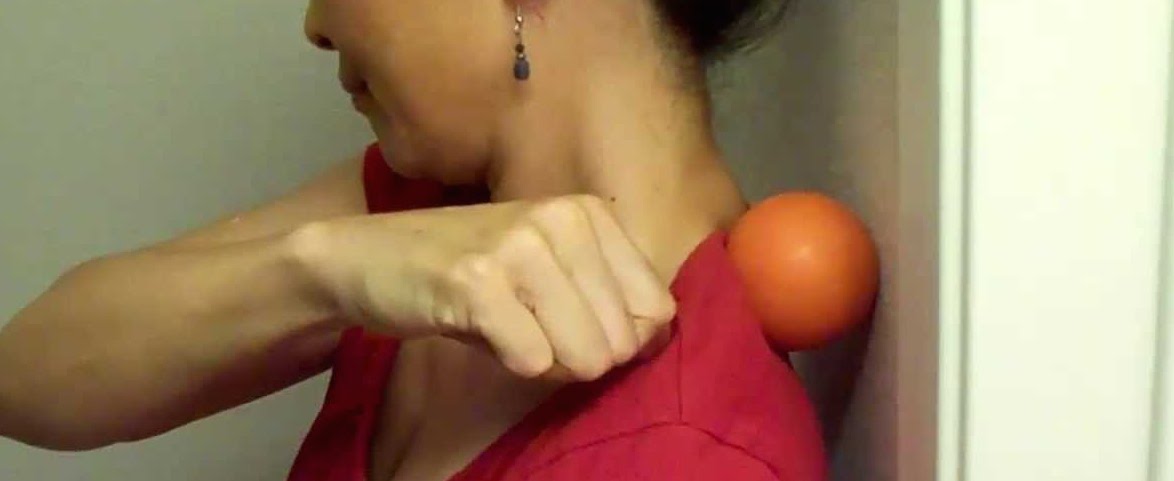 19 - Massage ball 19 - Massage ball One ball is given to each participant and, following the rhythm of a soft music, they place the ball between their back and a wall. They bend their knees slightly to relax the legs and better place their back. Then they move their body from top to bottom and from right to left and vice versa, moving the ball around their back. When making movements of their body, they will notice some more tense (and sometimes painful) spots. When they notice this they should stop and stay quiet keeping their back against the wall, making the desired pressure and holding for a while. Variation: Do not use the wall. Participants work in pairs and one holds 1 or 2 balls in their hands and makes the massage to the other and then they switch. | |
| Relaxing Exercises | 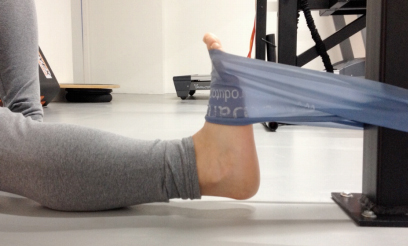 20 - Holding legs 20 - Holding legs Participants work in pairs. And you can put a quiet and relaxing music (or sounds like water falling down, sea waves, etc.). Half of the participants are asked to lie down face up, eyes closed, with their left leg extended on the floor and their right leg elevated. Another participant stands up and loops a towel around the heel of the other’s right foot and holds the ends of the towel in his/her hands, and makes soft and gentle movements (upwards and downwards, and sidewards) while the other totally relaxes his/her leg. Then they repeat the same process with the left leg. Then the participants switch roles. | |
| 33 | |||
 | |||
| Activities
|  | ||
| 34 | ||
 | ||
| Human Rights
| ||
| 35 | ||||||||||||||||||||||||||
 | ||||||||||||||||||||||||||
| 1 | 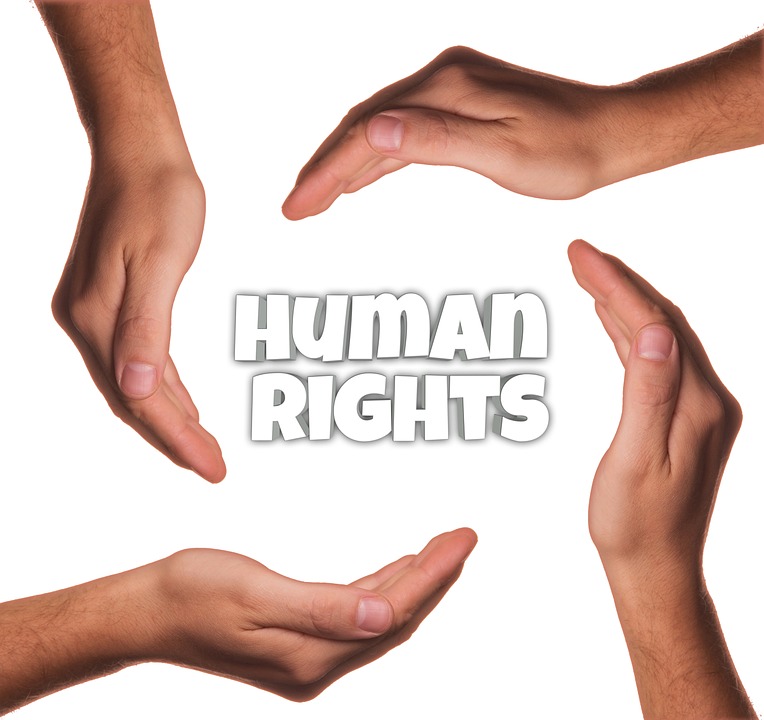 Human rights / My human rights are 30! Human rights / My human rights are 30! | |||||||||||||||||||||||||
| Developed by | AENAO | |||||||||||||||||||||||||
| Duration | 90 | |||||||||||||||||||||||||
| Energizers |  4 - Human chain 4 - Human chain Everybody stands up in a circle. They close their eyes and start moving towards the middle of the circle, holding their hands up. Whoever they touch with their hands, they hold and do not let go, so they make a knot. Then the facilitator asks the students to open their eyes and try to untangle themselves (make a circle) without letting go of their hands. | |||||||||||||||||||||||||
| Relaxing Exercises |  1 - Guided fantasy 1 - Guided fantasy Students are asked to close their eyes (if comfortable) and, with the guidance of the facilitator, slowly imagine a scene of the past or future event. More and more details are used to describe the event with all senses and thoughts. A suggested brief script could be à Begin by breathing slowly and deeply… Think of yourself in a place where you feel relaxed and at ease… Create all the details in your mind, what do you see… what the sounds are like, the smells and colors of this special place… Are there any people …? Rossman, 2016 | |||||||||||||||||||||||||
| Objectives |
| |||||||||||||||||||||||||
| Preparation | Suggested reading (United Nations, 2016) http://www.ohchr.org/EN/UDHR/Documents/UDHR_Translations/eng.pdf Materials
| |||||||||||||||||||||||||
| Introduction | "Human rights are like a jigsaw; if one piece is missing, the jigsaw is incomplete. This is the same for people living in poverty; take one of our rights away and you threaten them all. You can not give people their rights bit by bit and expect them to improve things for themselves bit by bit too." - Young member of ATD Fourth World | |||||||||||||||||||||||||
| 36 | ||
 | ||
| Methodology | NFE Tool Jigsaw of Human Rights
| |
| Reflection | Reflection (from the teacher to students) in the plenary using the questions below:
| |
| Notes | ||
| Digital Resource | ||
| 37 | |||||||||||||||||||||||||||||
 | |||||||||||||||||||||||||||||
| 2 | 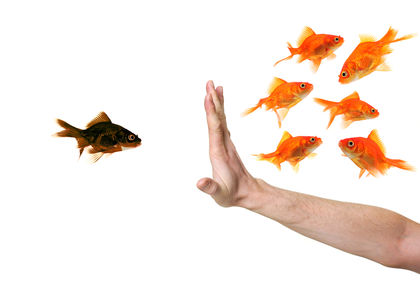 Human rights / My right to anti-discrimination Human rights / My right to anti-discrimination | ||||||||||||||||||||||||||||
| Developed by | AENAO | ||||||||||||||||||||||||||||
| Duration | 70 | ||||||||||||||||||||||||||||
| Energizers |  5 - Good morning or evening 5 - Good morning or evening Everybody walks around the room greeting each other (as if everybody was their close friends) using words and gestures (shake hand, kiss, hug). Then they repeat the greeting in silence using only their eyes. When the exercise is over, the teacher asks students how did they feel with the two different ways of greeting (eg was it difficult, how did they manage to communicate, etc). | ||||||||||||||||||||||||||||
| Relaxing Exercises |  4 - Visualization using color/soothing sound 4 - Visualization using color/soothing sound Facilitator asks the students to imagine a favorite color that makes them feel peaceful and safe. They keep their imagine taking in that color with each breath and sending it throughout their entire body as they exhale. They continue until they visualize being filled with their special, relaxing color. The same exercise can be performed using soothing sound or aroma. Also, it is more effective if relaxing music is used. Kelly Roper | ||||||||||||||||||||||||||||
| Objectives |
| ||||||||||||||||||||||||||||
| Preparation |
| ||||||||||||||||||||||||||||
| Introduction | “No one is born hating another person because of the color of his skin, or his background or his religion. People learn to hate, and if they can learn to hate, they can be taught to love, for love comes more naturally to the human heart than its opposite.” Nelson Mandela | ||||||||||||||||||||||||||||
| Methodology | NFE Tool Team Work
This procedure is repeated until all groups have presented their hierarchy to the class. (10’ for each group) | ||||||||||||||||||||||||||||
| 38 | ||
 | ||
| Reflection | When all groups are finished, facilitator presents to students some of the photos (eg Mother Teresa, John Young etc) whose descriptions are given in the Images HR2 Description.pdf file and ask the students:
| |
| Notes | ||
| Digital Resource |
https://amara.org/el/videos/EYiqXhx2J640/info/anti-racist-short-film-jafar/ | |
| 39 | |||||||||||||||||||||||
 | |||||||||||||||||||||||
| 3 |  Human rights / My right to privacy Human rights / My right to privacy | ||||||||||||||||||||||
| Developed by | AENAO | ||||||||||||||||||||||
| Duration | 80 | ||||||||||||||||||||||
| Energizers |  1 - Break the Circle 1 - Break the Circle The teacher assigns randomly a number to each student, depending on the group size, i.e. for 20 students, numbers 1-4 are ok, so each group has 5 people (groups could be synthesized by the students with the same number, i.e. all having been assigned number ‘1’ or by students where each one has his/her own unique number 1-4; similarly and more fun is grouping by ingredient for a Greek salad, where every student is i.e. ‘tomato’, ‘cucumber’, ‘onion’, ‘oregano’, etc.) Once the groups have been formed, they make circles and the teacher randomly picks a number (or an ingredient) to step out of the circle and try to break in, while the others remaining are instructed to not let go of their hands no matter what. This can be repeated once more with another number stepping out. | ||||||||||||||||||||||
| Relaxing Exercises |  5 - Use a word that describes their feelings/thoughts 5 - Use a word that describes their feelings/thoughts Students are asked to close their eyes (if comfortable) for a minute and think of a word that describes their feelings/thoughts after finishing the resource. Then the students open their eyes and one by one say their word to the classroom | ||||||||||||||||||||||
| Objectives |
| ||||||||||||||||||||||
| Preparation |
Watch TED video (subtitles can be uploaded) about privacy: https://www.ted.com/talks/glenn_greenwald_why_privacy_matters
Teacher assigns the groups (without telling what each group is) a few days before the utilization of the exercise (this could be done when the previous section is over – if there is one). He/she asks the students to bring personal belongings when they implement the exercise: Group 1. Photos, phones/tablets, keys, wallets. Group 2. Favorite items kept in their bedrooms (eg a gift from someone, a piece of clothing that they really like, a photo). Group 3. Favorite items brought in school (eg school bag, stationary, even a piece of clothing that they prefer to wear when they are at school). Group 4. Each student brings one item to one of the members of the group (teacher assigns who brings an item to whom) as a gift. Each student that brings something must think what the other person would like (eg Mary gives John a hat, because John really likes hats). | ||||||||||||||||||||||
| 40 | ||
 | ||
| Introduction | Are we living in a world where privacy doesn't matter? One where our right to do what we want within legal boundaries is stymied by the incorrigible desire to spy on us and know exactly what we are doing at all times? Privacy matters and it is Valuable! Do not give away your life! | |
| Methodology | NFE Tool Team Work Students are divided into 4 groups of 5-6. Each group is assigned with a name related to personal daily issues/habits/errands. The groups are named according to what the students have brought: Group 1. Facebook/Internet Group 2. House Group 3. School Group 4. Friends
| |
| Reflection | Questions asked from the teacher to students in the plenary: How did you feel (a) when trying to take things, (b) when trying to protect things, (c) when accomplished to take things, (d) when lost things? (20’) | |
| Notes | ||
| Digital Resource |
https://vimeo.com/170397733 | |
| 41 | ||||||||||||||||||||||||||
 | ||||||||||||||||||||||||||
| 4 |  Human rights / Take a step! (My right to equity) Human rights / Take a step! (My right to equity) | |||||||||||||||||||||||||
| Developed by | CSC DANILO DOLCI | |||||||||||||||||||||||||
| Duration | 80 min | |||||||||||||||||||||||||
| Energizers |  10 - Rope game 10 - Rope game Have the participants stand on the middle of a space cleared of desks, chairs, etc. Divide the room in a way that allows them easily to move from one half of the room to the other, e.g. by placing a long piece of rope on the floor. The teacher stands at one of the ends of the rope and calls out a characteristic, or a colour or a letter, e.g. “Everyone having blue eyes!”; “Everyone having 3 brothers”, “Everyone whose name begins with B”, etc. and points to the part of the room where the participants wearing orange/ having 3 brothers/ having B names have to move to. All participants who are wearing orange/ having 3 brothers/ having B names move to the respective part of the room; the ones who are not , have to go to the other part. Questions have to be constructed so that the class does not divide in groups having comparatively equal number of students, i.e. one of the groups should consist (in most cases) of one, two or few students. Debriefing: Participants are asked to share how they felt when they were part of a big group; and when they were standing alone (or were part of a very small group); what did they feel of themselves (as part of a small/ big group), and what their feelings were towards the group they were not part of. | |||||||||||||||||||||||||
| Relaxing Exercises |  14 - Give me your energy 14 - Give me your energy The students stand in a circle. The teacher starts, pretending he/she is holding a ball on the hands and passing it to the student on his/her right; this one do the same, until the ball comes back to the teacher. The ball needs to be passed in a gentle way, as it is very precious. At the second round, the teacher passes the ball to students in another side of the circle, making a gesture and a noise. The students will do the same until everyone will have touched the ball at least once. The ball can be passed in any way (in form of kick, kiss…), pretending it becomes bigger or smaller depending on the will of the students. | |||||||||||||||||||||||||
| Objectives |
| |||||||||||||||||||||||||
| Preparation | Materials
Tips
| |||||||||||||||||||||||||
| Introduction | Article 1 (United Nations, 2016) All human beings are born free and equal in dignity and rights. They are endowed with reason and conscience and should act towards one another in a spirit of brotherhood. Despite what stated on the first article of the UN Human Rights Declaration, in reality the different situations in which everyone is born or live affect the opportunities we have access to, creating inequalities. This activity is based on “Take a step forward” – COMPASS, Manual for human rights education with young people | |||||||||||||||||||||||||
| 42 | ||
 | ||
| Methodology | NFE Tool Role Playing game. The activity is based on “Take a step forward” from “COMPASS” (Patricia Brander; Laure De Witte; Nazila Ghanea; Rui Gomes; Ellie Keen; Anastasia Nikitina; Justina Pinkeviciute, 2012)
| |
| Reflection | Teacher will stimulate the reflection in the plenary using the questions below (15’):
Teacher will make students reflect about situation of inequality they live or they observe in their context and about possibilities to help people with fewer opportunities to make a step forward! What we can do to overcome situation of inequality in our everyday life? (15’) | |
| Notes | DT – video "If the world were 100 people" Produced and Written by Gabriel Reilich ; Animation by Jake Infusino http://jakemotion.com for GOOD Magazine | |
| Digital Resource | ||
| 43 | ||||||||||||||||||||||||||
 | ||||||||||||||||||||||||||
| 5 |  Human rights / My right to gender equity Human rights / My right to gender equity | |||||||||||||||||||||||||
| Developed by | AENAO | |||||||||||||||||||||||||
| Duration | 70 | |||||||||||||||||||||||||
| Energizers |  16 - Back to back 16 - Back to back Participants find a pair of similar size and weight. They sit on the floor, back to back with their pair. They hold their arms. They have to get up, while keeping the arms and backs together. After trying once-twice with their pair they switch pairs. They can repeat this process with other pairs for a few times. | |||||||||||||||||||||||||
| Relaxing Exercises |  20 - Holding legs 20 - Holding legs Participants work in pairs. And you can put a quiet and relaxing music (or sounds like water falling down, sea waves, etc.). Half of the participants are asked to lie down face up, eyes closed, with their left leg extended on the floor and their right leg elevated. Another participant stands up and loops a towel around the heel of the other’s right foot and holds the ends of the towel in his/her hands, and makes soft and gentle movements (upwards and downwards, and sidewards) while the other totally relaxes his/her leg. Then they repeat the same process with the left leg. Then the participants switch roles. | |||||||||||||||||||||||||
| Objectives |
| |||||||||||||||||||||||||
| Preparation |
http://www.ohchr.org/EN/Issues/Women/WRGS/Pages/GenderStereotypes.aspx http://www.healthguidance.org/entry/15910/1/List-of-Gender-Stereotypes.html
| |||||||||||||||||||||||||
| Introduction | According to United Nations’ Sustainable Development Goals (SDG’s) http://www.un.org/sustainabledevelopment/gender-equality/, there are 17 SDG’s that can change our world during the following 15 years. Goal No 5 aims to Achieve gender equality and empower all women and girls. Even though European and developed countries are trying hard to apply gender equality, however there are many countries in the world where women are nowhere like men. | |||||||||||||||||||||||||
| 44 | ||
 | ||
| Methodology | NFE tool Brainstorming, team work
*Optional: Students’ poses could be uploaded in the website | |
| Reflection | Teacher asks students in the plenary:
(20’)
| |
| Notes | ||
| Digital Resource | ||
| 45 | ||||||||||||||||||||||||||
 | ||||||||||||||||||||||||||
| 6 |  Human rights / My right to equity and nationality Human rights / My right to equity and nationality | |||||||||||||||||||||||||
| Developed by | PROSVETA | |||||||||||||||||||||||||
| Duration | 70 | |||||||||||||||||||||||||
| Energizers |  6 - Keep walking 6 - Keep walking The teacher instructs the students to walk in different manners covering the whole rook, i.e. walk like you are very happy, walk like a very heavy elephant, walk like you are 80 years old, walk like it’s raining cats and dogs, walk like a toddler, etc. | |||||||||||||||||||||||||
| Relaxing Exercises |  4 - Visualization using color/soothing sound 4 - Visualization using color/soothing sound Facilitator asks the students to imagine a favorite color that makes them feel peaceful and safe. They keep their imagine taking in that color with each breath and sending it throughout their entire body as they exhale. They continue until they visualize being filled with their special, relaxing color. The same exercise can be performed using soothing sound or aroma. Also, it is more effective if relaxing music is used. Kelly Roper | |||||||||||||||||||||||||
| Objectives |
| |||||||||||||||||||||||||
| Preparation |
| |||||||||||||||||||||||||
| Introduction | The right to a nationality is one of the fundamental human rights. It ensures the equal opportunity for everyone to realize who he/she is, what his/her identity and citizenship is regardless of where he/she lives or his/her whereabouts at a particular moment of his/her life. Under no circumstances a person shall be deprived of his/her identity and nationality. Everyone’s nationality (citizenship) is very important for his/her identity. That is why it is recorded in the documents which prove he/she is a separate and unique personality (passport, ID card, etc.) | |||||||||||||||||||||||||
| 46 | ||
 | ||
| Methodology | NFE Tool Case study, Team work, Discussion
Do you know anyone who doesn’t have a name? Why is a name important? Why, when meeting someone for the first time and after learning his/her name, do we usually ask where he/she comes from and what his/her nationality is? On what other occasions is nationality very important? (For example, when travelling abroad, when documents are issued, acquisition of property, working abroad, etc.) (10’) The facilitator shows students the video and explains the essence of human right to a nationality, identity and citizenship. (10’) On a thick drawing paper, the students write down key words or draw symbols which reflect the essence of human right to nationality and identity.(10’) Individual work on case studies – each student is given the table containing case studies (situations) (10’) Discussion in 2 small groups - students based on the individual work – the facilitator directs the students to elicit the reasons for their choice – why they agree or disagree with the described situations; what exactly they agree with; what they would do if they witnessed a situation in which someone doesn’t recognize another person’s right to a name and citizenship. (25’) DT: video | |
| Reflection | Reflection (from the facilitator to students) in the plenary using the questions below:
| |
| Notes | ||
| Digital Resource |
Handout: http://othernessproject.eu/atividades/pdf/6_HR6 Handout.pdf Video: http://othernessproject.eu/atividades/digital/6/HR6-Nationality_video.wmv | |
| 47 | ||||||||||||||||||||||||||
 | ||||||||||||||||||||||||||
| 7 | 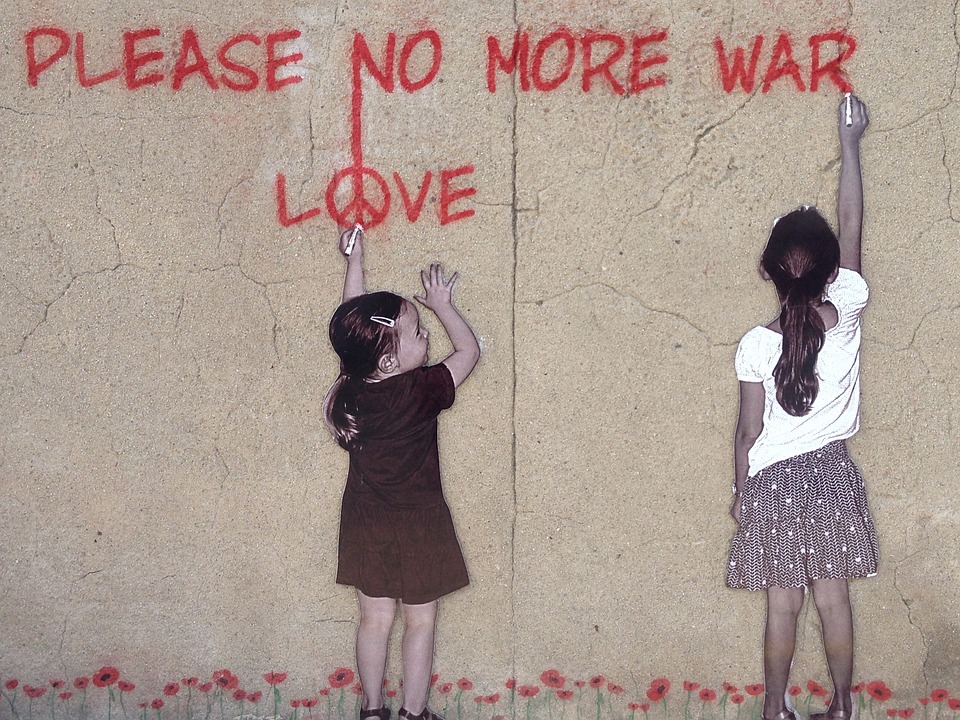 Human rights / I think, I believe (My right to conscience and religion) Human rights / I think, I believe (My right to conscience and religion) | |||||||||||||||||||||||||
| Developed by | CSC DANILO DOLCI | |||||||||||||||||||||||||
| Duration | 60 | |||||||||||||||||||||||||
| Energizers |  4 - Human chain 4 - Human chain Everybody stands up in a circle. They close their eyes and start moving towards the middle of the circle, holding their hands up. Whoever they touch with their hands, they hold and do not let go, so they make a knot. Then the facilitator asks the students to open their eyes and try to untangle themselves (make a circle) without letting go of their hands. | |||||||||||||||||||||||||
| Relaxing Exercises |  16 - Press the face 16 - Press the face It is like the game "telephone" but instead of passing a word or sentence around the group, participants pass a facial expression. | |||||||||||||||||||||||||
| Objectives |
| |||||||||||||||||||||||||
| Preparation | Materials
| |||||||||||||||||||||||||
| Introduction | This activity aims to raise students’ awareness on the existence of different religions, make them reflect about similarities and differences between them and to deconstruct stereotypes, discovering the message of peace religion originally want to send. | |||||||||||||||||||||||||
| 48 | ||
 | ||
| Methodology | NFE Tool – Association Game
The teacher will show the images and quotes which will be previously printed: the students will attach them on the flipchart in the column correspondent to the correct religion: Christianity, Islam, Judaism , Hinduism, Buddhism, others. 30’
DT – The five major world religions - John Bellaimey – TED-ED – available at: https://www.youtube.com/watch?v=m6dCxo7t_aE
| |
| Reflection | Teacher will stimulate the reflection in the plenary using the questions below (15’):
| |
| Notes | ||
| Digital Resource | ||
| 49 | ||||||||||||||||||||||||||
 | ||||||||||||||||||||||||||
| 8 |  Human rights / Plus or Minus (My right to opinion and expression) Human rights / Plus or Minus (My right to opinion and expression) | |||||||||||||||||||||||||
| Developed by | CSC DANILO DOLCI | |||||||||||||||||||||||||
| Duration | 80 | |||||||||||||||||||||||||
| Energizers |  5 - Good morning or evening 5 - Good morning or evening Everybody walks around the room greeting each other (as if everybody was their close friends) using words and gestures (shake hand, kiss, hug). Then they repeat the greeting in silence using only their eyes. When the exercise is over, the teacher asks students how did they feel with the two different ways of greeting (eg was it difficult, how did they manage to communicate, etc). | |||||||||||||||||||||||||
| Relaxing Exercises |  1 - Guided fantasy 1 - Guided fantasy Students are asked to close their eyes (if comfortable) and, with the guidance of the facilitator, slowly imagine a scene of the past or future event. More and more details are used to describe the event with all senses and thoughts. A suggested brief script could be à Begin by breathing slowly and deeply… Think of yourself in a place where you feel relaxed and at ease… Create all the details in your mind, what do you see… what the sounds are like, the smells and colors of this special place… Are there any people …? Rossman, 2016 | |||||||||||||||||||||||||
| Objectives |
| |||||||||||||||||||||||||
| Preparation | Materials
Tips The teacher can chose to change the statements proposed, focusing on a specific topic addressed by the class in that moment or more interesting for the class. | |||||||||||||||||||||||||
| Introduction | This activity aims to make students reflect on the existence of different perspective and pros and cons on the same topic, developing their critical thinking, considering different opinions and learning to respect them. Students will understand the value of expressing their own opinion, experiment the feeling of being denied of such right. | |||||||||||||||||||||||||
| 50 | ||
 | ||
| Methodology | NFE Tool : Plus or Minus Game
DT - Prezi with statements http://goo.gl/XhRgRu (or PDF) and video “Freedom of Expression” – Amnesty International - http://othernessproject.eu/atividades/digital/8/hrr8.html | |
| Reflection | Teacher will stimulate the reflection in the plenary, showing the video and using the questions below (20’):
Possible follow-up: If the students are particularly interested by the topic and into the debate, the teacher can introduce other stimulus to the discussion, focusing on the reasons why limiting freedom of expression may be needed to protect human rights. Suggested questions: What if our freedom interferes or limits the freedom of the others? Is it right? Which is the limit to our freedom in relation with others? Is it right to limit the freedom of expression? In which cases? | |
| Notes | ||
| Digital Resource | ||
| 51 | ||||||||||||||||||||||||||
 | ||||||||||||||||||||||||||
| 9 | 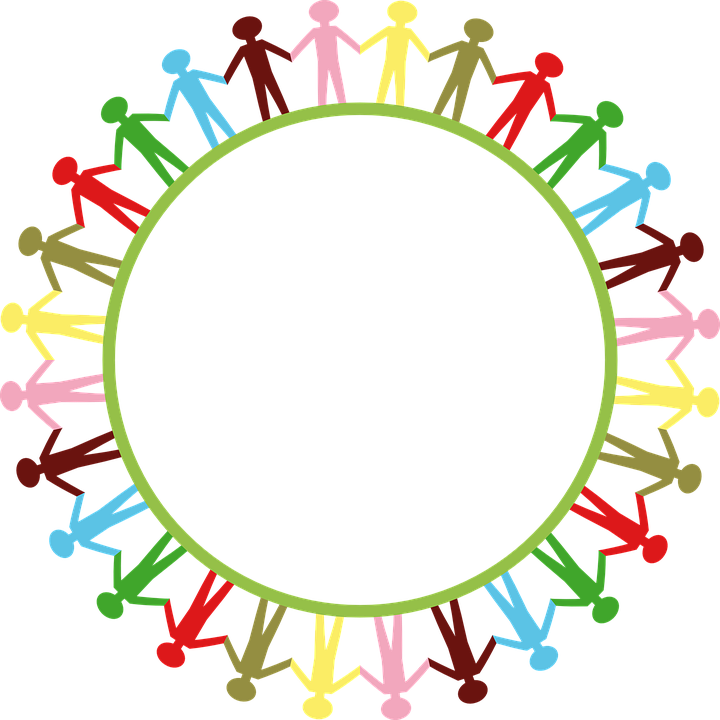 Human rights / My deepest dream (My right to freedom) Human rights / My deepest dream (My right to freedom) | |||||||||||||||||||||||||
| Developed by | CSC DANILO DOLCI | |||||||||||||||||||||||||
| Duration | 80 | |||||||||||||||||||||||||
| Energizers |  16 - Back to back 16 - Back to back Participants find a pair of similar size and weight. They sit on the floor, back to back with their pair. They hold their arms. They have to get up, while keeping the arms and backs together. After trying once-twice with their pair they switch pairs. They can repeat this process with other pairs for a few times. | |||||||||||||||||||||||||
| Relaxing Exercises |  5 - Use a word that describes their feelings/thoughts 5 - Use a word that describes their feelings/thoughts Students are asked to close their eyes (if comfortable) for a minute and think of a word that describes their feelings/thoughts after finishing the resource. Then the students open their eyes and one by one say their word to the classroom | |||||||||||||||||||||||||
| Objectives |
| |||||||||||||||||||||||||
| Preparation | Materials
Suggested Reading Reciprocal Maieutic Approach, pp. 19-28 (Dolci Amico; Amico Fausto) | |||||||||||||||||||||||||
| Introduction | This activity is based in part on the methodology of Danilo Dolci’s Reciprocal Maieutic Approach. The Reciprocal Maieutic Approach (RMA) is a dialectic method of inquiry and "popular self-analysis" for empowerment of communities and individuals and it can be defined as a “process of collective exploration that takes, as a departure point, the experience and the intuition of individuals”. The RMA was developed by Danilo Dolci from the Socratic concept of Maieutic. Socrates’ Maieutics was unidirectional, while for Danilo Dolci the concept of knowledge comes from experience and a reciprocal relationship is necessary. As the name says, RMA is a “reciprocal” process between at least two persons and it is normally done inside a group, with one person that asking questions and others giving answers. It is the reciprocal maieutic communication that brings out people’s knowledge, with all participants learning from each other. | |||||||||||||||||||||||||
| 52 | ||
 | ||
| Methodology | NFE Tool Reciprocal Maieutic Approach
| |
| Reflection | 1. Strips of paper are distributed to students, who are asked to write on separate pieces of paper their views on the topics below with regard to the activities they completed as part of the project. It is not necessary for them to write down their names. The topics for evaluation can be the following: • How I felt about our activities • What I found to be interesting about our activities • My positive views about our activities • My negative views about our activities • My recommendations 2. Students are asked to put their papers into a Box according to subject. (For example, starting with “I felt”…). The teacher can prepare previously different little boxes using packaging or colors boxes or similar or he/she can ask students to put the papers creating different little piles. 3. Students are asked to take turns picking a strip of paper from the box and reading out loud the statement written on it. If necessary, the viewpoint presented is discussed. The teacher can encourage discussion by asking questions. It is necessary to ensure that everyone’s opinions are read out. (15) | |
| Notes | If you find the video a bit ambitious for the student's age, we sugest you to find alternative videos that can suit better. | |
| Digital Resource | Dreams of Freedom: in children's words (5) http://othernessproject.eu/atividades/digital/9/DreamsFreedom.mp4 | |
| 53 | |||||||||||||||||||||||
 | |||||||||||||||||||||||
| 10 | 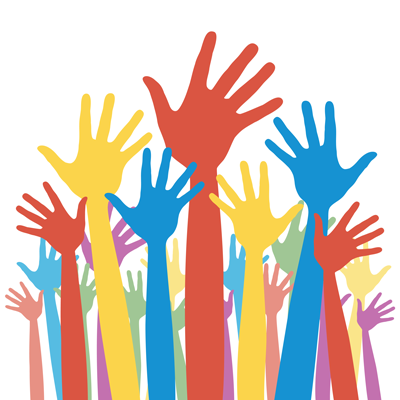 Human rights / My right to justice and law Human rights / My right to justice and law | ||||||||||||||||||||||
| Developed by | IP SANTAREM | ||||||||||||||||||||||
| Duration | 55 | ||||||||||||||||||||||
| Energizers |  12 - Body spelling 12 - Body spelling Teacher asks students to write their name in the air using different parts of their body, for example with the hand/leg/elbow/nose. Optional: If time allows teacher asks to the class to spell out some words reproducing the letters with their bodies. Students can collaborate all together or can create different groups. | ||||||||||||||||||||||
| Relaxing Exercises |  5 - Use a word that describes their feelings/thoughts 5 - Use a word that describes their feelings/thoughts Students are asked to close their eyes (if comfortable) for a minute and think of a word that describes their feelings/thoughts after finishing the resource. Then the students open their eyes and one by one say their word to the classroom | ||||||||||||||||||||||
| Objectives |
| ||||||||||||||||||||||
| Preparation | Suggested reading:
http://www.un.org/en/universal-declaration-human-rights/
http://www.echr.coe.int/Documents/Convention_ENG.pdf
http://legal-dictionary.thefreedictionary.com Tips:
Materials:
Digital tool:
| ||||||||||||||||||||||
| 54 | ||
 | ||
| Introduction | The law states the principles and regulations established by national or international authority and applicable to the peoples who live under the system which functions by the observance of these principles and regulations in the form of legislation, of custom and policies recognized and enforced by judicial decision. A tribunal is also called a court of justice because it is a place where justice is (supposed to be) administered. | |
| Methodology | NFE tool: team work, word game and quiz
| |
| Reflection | 10’
| |
| Notes | ||
| Digital Resource | Quiz - https://wordwall.net/resource/11388064 European Convention on Human Rights (Europe, 2016) - http://othernessproject.eu/atividades/pdf/10_HR10_Convention_ENG.pdf Paper Cards http://othernessproject.eu/atividades/digital/10/CARDSHR10.pdf | |
| 55 | |||||||||||||||||||||||
 | |||||||||||||||||||||||
| 11 | 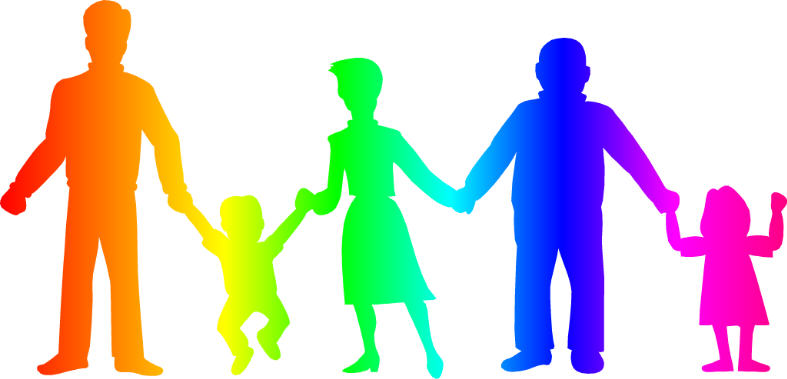 Human rights / My right to family Human rights / My right to family | ||||||||||||||||||||||
| Developed by | IP SANTAREM | ||||||||||||||||||||||
| Duration | 90 | ||||||||||||||||||||||
| Energizers |  2 - Moo!!! 2 - Moo!!! The teacher assigns randomly in a piece of paper (turned upside down on their desks) each student with farm animal, i.e. ‘cow’, ‘horse’, ‘sheep’, ‘rooster’, etc. Once the students are informed of their animal role, they are instructed to walk around the room acting like the animal they are assigned (i.e. making its sound), in order to find their kind. | ||||||||||||||||||||||
| Relaxing Exercises |  20 - Holding legs 20 - Holding legs Participants work in pairs. And you can put a quiet and relaxing music (or sounds like water falling down, sea waves, etc.). Half of the participants are asked to lie down face up, eyes closed, with their left leg extended on the floor and their right leg elevated. Another participant stands up and loops a towel around the heel of the other’s right foot and holds the ends of the towel in his/her hands, and makes soft and gentle movements (upwards and downwards, and sidewards) while the other totally relaxes his/her leg. Then they repeat the same process with the left leg. Then the participants switch roles. | ||||||||||||||||||||||
| Objectives |
| ||||||||||||||||||||||
| Preparation | Suggested reading: Tips:
Materials:
Digital tool:
| ||||||||||||||||||||||
| 56 | ||
 | ||
| Introduction | Families are usually a source of care and emotional support for all members of the family, although this is unfortunately not the case in situations of all kinds of abuse like domestic violence and sexual abuse, that should be reported to specific social and protection services, since the “family is entitled to protection by society and the State” according to the Universal Declaration of Human Rights. Children of same sex families may not have the same opportunities of enjoying education in formal and non formal education contexts because of the unsafe climate created by peers and teachers related to discrimination based on sexual orientation and different moral standards. | |
| Methodology | NFE Tool: Brainstorming, case analysis, role acting, artistic video production and presentation
Research families are then invited to put themselves in the shoes of a teenager who is a friend of a same sex family colleague who has just been mocked at school by a peer because he belongs to this type of non traditional family. Then they make a small and simple movie (maximum 2 minutes) representing the situation and the reaction of the same sex teenager’s friend. 20’
| |
| Reflection |
| |
| Notes | ||
| Digital Resource | Glossary of Terms Related to Sexuality and Gender (UCLA, 2016) - http://othernessproject.eu/atividades/pdf/11_HR11.pdf Free simple software for quickly editing a movie: Magisto https://www.magisto.com | |
| 57 | ||||||||||||||||||||
 | ||||||||||||||||||||
| 12 | 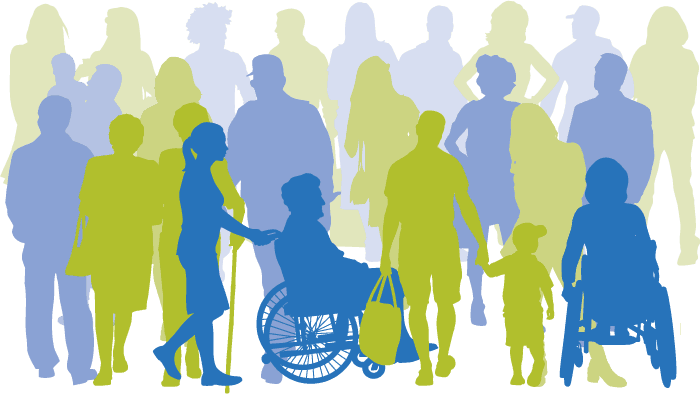 Human rights / My right to social care and health Human rights / My right to social care and health | |||||||||||||||||||
| Developed by | IP SANTAREM | |||||||||||||||||||
| Duration | 70 | |||||||||||||||||||
| Energizers |  18 - Mosquito game 18 - Mosquito game The group stands in a circle and the facilitator tells a story about a plague of mosquitoes and that everybody has to kill the mosquitoes so as they don’t get malaria. The facilitator puts up a mosquito on the head of a person who must lower in order to avoid the mosquito. The two persons next to that person must clap their hands above his/her head to kill the mosquito, but the mosquito escapes and it goes on. When the group is already doing the game well and quickly, the facilitator will add more mosquitoes until it is almost impossible for the group to catch as many mosquitoes. | |||||||||||||||||||
| Relaxing Exercises |  19 - Massage ball 19 - Massage ball One ball is given to each participant and, following the rhythm of a soft music, they place the ball between their back and a wall. They bend their knees slightly to relax the legs and better place their back. Then they move their body from top to bottom and from right to left and vice versa, moving the ball around their back. When making movements of their body, they will notice some more tense (and sometimes painful) spots. When they notice this they should stop and stay quiet keeping their back against the wall, making the desired pressure and holding for a while. Variation: Do not use the wall. Participants work in pairs and one holds 1 or 2 balls in their hands and makes the massage to the other and then they switch. | |||||||||||||||||||
| Objectives |
| |||||||||||||||||||
| 58 | ||
 | ||
| Preparation | Suggested pedagogical resources and tips:
http://www.un.org/en/universal-declaration-human-rights/
http://www.echr.coe.int/Documents/Convention_ENG.pdf Tips: It’s important that the teacher does the research of the European statistical data (EuroStat, 2016) before the activity, because if the students do not find data, he/she can help them finding it or handles the data for them to analyse. See “Live births by mother's age” (EuroStat, 2016) In schools, maths teachers can work with other subject teachers, using this activity to train the students competences to search and analyse statistical data. The role of teachers in this activity is to encourage the discussion and guides the reflexion of the students avoiding to defend a particular solution for an unwanted pregnancy. In step 5, if students don’t know any institution that provides social and health care, the teacher should provide it. These kind of institutions are different from country to country. Materials:
Digital tool:
| |
| Introduction | The word protection and derived words occurs 10 times in the Universal Declaration of Human Rights. This is one of the most basic needs of humankind, especially children, old persons who have not the means of supporting their existence, and also more vulnerable persons who are disabled or have no food, no clothing, no house, nor money for paying for education or for health assistance and medicine when they are sick. Social and health care services are very important for protecting persons in unemployment situations and other difficult situations like teenager pregnancy. Good physical and mental health is one of the most important factors of our well-being, like love. According to this human right, medicines, hospitals, and other health services must be available, accessible (in time and cost), equitable and of good quality for all persons who need them. | |
| 59 | ||
 | ||
| Methodology | NFE Tools: Data analysis and case discussion.
| |
| Reflection | Question to ask students at the end of the activity: 10’ Do you think it is important to talk about this subject at school? Why? | |
| Notes | ||
| Digital Resource | European Convention on Human Rights (Europe, 2016) - http://othernessproject.eu/atividades/pdf/12_EU_Convention_ENG.pdf Outreach Program: http://othernessproject.eu/atividades/digital/12/Healthy_Babies.mp4 | |
| 60 | |||||||||||||||||||||||
 | |||||||||||||||||||||||
| 13 | 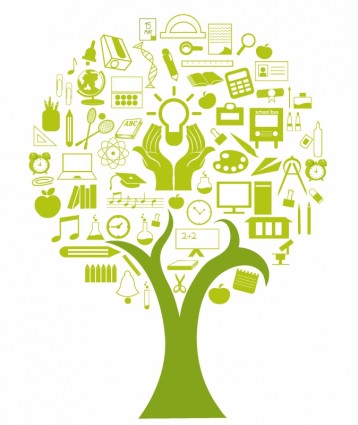 Human rights / My right to education Human rights / My right to education | ||||||||||||||||||||||
| Developed by | IP SANTAREM | ||||||||||||||||||||||
| Duration | 90 | ||||||||||||||||||||||
| Energizers |  4 - Human chain 4 - Human chain Everybody stands up in a circle. They close their eyes and start moving towards the middle of the circle, holding their hands up. Whoever they touch with their hands, they hold and do not let go, so they make a knot. Then the facilitator asks the students to open their eyes and try to untangle themselves (make a circle) without letting go of their hands. | ||||||||||||||||||||||
| Relaxing Exercises |  4 - Visualization using color/soothing sound 4 - Visualization using color/soothing sound Facilitator asks the students to imagine a favorite color that makes them feel peaceful and safe. They keep their imagine taking in that color with each breath and sending it throughout their entire body as they exhale. They continue until they visualize being filled with their special, relaxing color. The same exercise can be performed using soothing sound or aroma. Also, it is more effective if relaxing music is used. Kelly Roper | ||||||||||||||||||||||
| Objectives |
| ||||||||||||||||||||||
| Preparation | Suggested pedagogical resources and tips:
http://othernessproject.eu/atividades/video.html?lang=en&nid=24 http://othernessproject.eu/atividades/video.html?lang=en&nid=29
http://othernessproject.eu/atividades/video.html?lang=en&nid=32
http://othernessproject.eu/atividades/video.html?lang=en&nid=48 Materials White Wall paper or board, post-it, computer, video projector. | ||||||||||||||||||||||
| 61 | ||
 | ||
| Introduction | In the Universal Declaration of Human Rights, the word “education” and derived words occur 7 times. The word “teaching” occurs only twice. It is important to distinguish teaching and education because human beings can learn without being taught. In some articles of this Universal declaration, the term “education” means formal education like in the first statement of article 26: “Education shall be free, at least in the elementary and fundamental stages. Elementary education shall be compulsory. Technical and professional education shall be made generally available and higher education shall be equally accessible to all on the basis of merit”. In some articles, the same term refers both to formal and non formal education. The educative process is very complex and does not only depend on the teaching at school. There are powerful educative situations and experiences that don’t happen in school. | |
| Methodology | NFE tool: sharing life story/experience, team work game
| |
| Reflection | What do you think has the most powerful impact on you in this stage of your life: learning with friends, learning with family members, learning with teachers? Why? What can we do so as educators are a bit more like we would like them to be? What kind of qualities do you think you have similar to those of a good educator referred in the game you played? | |
| 62 | ||
 | ||
| Notes | ||
| Digital Resource |
http://othernessproject.eu/atividades/video.html?lang=en&nid=24 http://othernessproject.eu/atividades/video.html?lang=en&nid=29
http://othernessproject.eu/atividades/video.html?lang=en&nid=32
http://othernessproject.eu/atividades/video.html?lang=en&nid=48 | |
| 63 | ||||||||||||||||||||||||||
 | ||||||||||||||||||||||||||
| 14 |  Human rights / My right to work Human rights / My right to work | |||||||||||||||||||||||||
| Developed by | PROSVETA | |||||||||||||||||||||||||
| Duration | 90 | |||||||||||||||||||||||||
| Energizers |  20 - Chief of clan 20 - Chief of clan Everyone stands in a circle. One participant closes his/her eyes or steps out of the room. He/She will have to guess who is the chief of the clan. One participant volunteers to be the secret Chief (quietly, so the "guesser" can't hear anything). The chief begins an action such as snapping fingers, patting the tummy, or slapping knees, and everyone in the circle imitates him/her. The guesser returns to the room and tries to figure out who the chief is. As the guesser looks around, the chief changes the action avoiding being detected. | |||||||||||||||||||||||||
| Relaxing Exercises |  20 - Holding legs 20 - Holding legs Participants work in pairs. And you can put a quiet and relaxing music (or sounds like water falling down, sea waves, etc.). Half of the participants are asked to lie down face up, eyes closed, with their left leg extended on the floor and their right leg elevated. Another participant stands up and loops a towel around the heel of the other’s right foot and holds the ends of the towel in his/her hands, and makes soft and gentle movements (upwards and downwards, and sidewards) while the other totally relaxes his/her leg. Then they repeat the same process with the left leg. Then the participants switch roles. | |||||||||||||||||||||||||
| Objectives |
| |||||||||||||||||||||||||
| Preparation |
| |||||||||||||||||||||||||
| Introduction | The right to work is a fundamental human right. Everyone has the right to fair payment for his/her work. Everyone has the right to equal pay for equal work regardless of age, educational background, nationality or experience. | |||||||||||||||||||||||||
| 64 | ||
 | ||
| Methodology | NFE Tool Team work, Debate game
Students are divided into two teams:
A team of three students judge the debate and when it is over, they provide feedback on the teams’ performance according to the following criteria: - the number of arguments supporting each thesis - how convincing the arguments are - clearly expressed viewpoints - respect for the opposing team Preparing for debate (15’) – each team work on their own and try to put forward as many convincing arguments as possible to support their thesis. Meanwhile, the judges discuss how to evaluate the teams according to the judging criteria and draw up a special form to make notes. Actual debate (30’) – each team have three minutes to present a compelling oration on their thesis - each team ask three questions to the opposing team. Each question requires an answer. - Closing speech – (1’) for each team. DT: video (Youth for Human Rights) batch of cards | |
| Reflection | Questions to ask students at the end of the debate:
| |
| Notes | ||
| Digital Resource | Printed cards: http://othernessproject.eu/atividades/pdf/14_HR14 printed cards.pdf Video: http://othernessproject.eu/atividades/digital/14/HR14.mp4 | |
| 65 | ||||||||||||||||||||
 | ||||||||||||||||||||
| 15 | 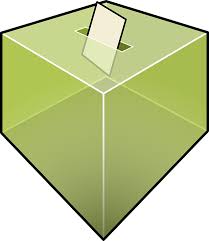 Human rights / Living Democracy Human rights / Living Democracy | |||||||||||||||||||
| Developed by | PROSVETA | |||||||||||||||||||
| Duration | 120 | |||||||||||||||||||
| Energizers |  7 - Connecting eyes 7 - Connecting eyes Participants stand in a circle. Each person makes eye contact with another person across the circle. The two walk across the circle and exchange positions, while maintaining eye contact. Many pairs can exchange at the same time, and the group should try to make sure that everyone in the circle is included in the exchange. Tip: Begin by trying this in silence and then exchange greetings in the middle of the circle. Variations: If the teacher considers, knowing the class atmosphere, that some students might be left not participating, i.e. they try to make eye contact but nobody responds to them and they have no chance to move from their initial position, the moderator could divide the class in 2 groups and introduce a competitive element – after the activity each group will be marked on the ‘team spirit thermometer’ (which could be printed on a A4 paper and the teacher marks the degrees with a marker). The more people you have left not participating in the ‘eye contact’ activity – the lower the degrees to be marked on the thermometer. | |||||||||||||||||||
| Relaxing Exercises |  8 - Seasons of the year 8 - Seasons of the year All players sit in a circle, but not too close to one another. The teacher moves like a plant during the seasons of the year. Winter: the plants are small, weak and are crunched together on the ground. Spring: through the stronger sunshine, the plants grow slowly and slowly rise. Summer: through the warm sun, the plants slowly open their arms, the flowers open their blooms are stand up straight. Autumn: the sun rays become weaker. The plants begin to slowly shrivel, the blooms and leaves begin to fall away. | |||||||||||||||||||
| Objectives |
| |||||||||||||||||||
| 66 | ||
 | ||
| Preparation | Suggested reading and tips
* the provided examples are to be used in case students need some tips or encouragement to think of situations from their everyday life. ** When trying to open HR15_3.swf file, there appears a message warning that the file might harm your computer. The reason for this message is that the settings of the most common browsers have been set not to open SWF files by default because they are not quite common. This is why users are asked to agree to open swf files, which you have to do by choosing the option KEEP. The file will cause no harm to you computer. | |
| Introduction | What is a democracy? A form of government, for sure, but it is much more than that. Democracy happens when citizens have a say in decisions and governance. Democracy could be observed in the ways citizens organize themselves in order to make decisions or accomplish goals. Democracy has manifestations in the organization of our everyday life – in families, schools and local communities. | |
| 67 | ||
 | ||
| Methodology | 1. Guided introduction (HR15_1) 15’
2. Democracy in everyday life; NFE tool – Role play, Interactive computer game. 50’ Students are divided in groups of 4 or 5 and are asked to think of an imaginary class/ school which applies or does not apply the right to democracy in its everyday life. Each group is to come up with a short plot which demonstrates that school/ class life is being organized/ managed in a democratic way (or is not – depending on the assigned task HR15_2).
3. Election experience (preparation for school elections simulation);NFE tool -Team work, Simulation. 30’
| |
| Reflection | Guided reflection: 15’
| |
| Notes | Suggestions for organizing the training activities in case of distance learning: Activity 2 Democracy in everyday life: Students are divided in groups and each group is assigned a room in ZOOM where they can discuss the plot separately from the other groups. You can watch the video tutorial how to create different rooms in a ZOOM session and to assign the rooms to the groups. Activity 3: Election experience 1. Create shared Google docs for each group copying the topics each group needs to discuss and come up with their election programme (support doc HR15_4.1). OR 2. Create rooms in ZOOM, where the students could discuss their election programmes and put their ideas in the document (support doc HR15_4.1) - one representative puts down the shared ideas. | |
| Digital Resource | Human Rights: http://othernessproject.eu/atividades/digital/15/HR15_1_RI/index.html Support documents HR15_2, HR15_4.1 and HR_4.2: http://othernessproject.eu/atividades/pdf/15_HR15_2-HR15_4.1-HR15_4.2.pdf Jumbled pictures Activities HR15_3: http://othernessproject.eu/atividades/digital/15/HR15_3.swf | |
| 68 | |||||||||||||||||||||||
 | |||||||||||||||||||||||
| 16 |  Human rights / Globetrotters - My right to move within and out of the borders of each country Human rights / Globetrotters - My right to move within and out of the borders of each country | ||||||||||||||||||||||
| Developed by | PROSVETA | ||||||||||||||||||||||
| Duration | 100 | ||||||||||||||||||||||
| Energizers |  14 - I am going on a trip 14 - I am going on a trip Everyone sits in a circle. Start by saying “I’m going on a trip and I’m taking a hug”, and hug the person to your right. That person then has to say “I’m going on a trip and I’m taking a hug and a pat on the back”, and then give the person on their right a hug and a pat on the back. Each person repeats what has been said and adds a new action to the list. Go round the circle until everyone has had a turn. | ||||||||||||||||||||||
| Relaxing Exercises |  1 - Guided fantasy 1 - Guided fantasy Students are asked to close their eyes (if comfortable) and, with the guidance of the facilitator, slowly imagine a scene of the past or future event. More and more details are used to describe the event with all senses and thoughts. A suggested brief script could be à Begin by breathing slowly and deeply… Think of yourself in a place where you feel relaxed and at ease… Create all the details in your mind, what do you see… what the sounds are like, the smells and colors of this special place… Are there any people …? Rossman, 2016 | ||||||||||||||||||||||
| Objectives | Students will learn:
| ||||||||||||||||||||||
| Preparation | Preparation
Suggested reading: http://www.claiminghumanrights.org/freedom_movement_definition.html http://www.youthforhumanrights.org/what-are-human-rights/videos/freedom-to-move.html Digital tool: HR16_1, HR16_2 (map), HR16_3 (messages), HR16_4 (emblems for the different lands Globetrotters visit in activity 3), HR16_5 (video - the treasure) The project team kindly requests the teachers participating in piloting HR16 to record the artistic works of the students (dances, songs, paintings, sketches, etc.). The recordings could be used in the national dissemination events and the future version of the teacher’s manual as models/ tips to the students in other countries or towns when they do the same training. | ||||||||||||||||||||||
| 69 | ||
 | ||
| Introduction | Freedom of movement plays a vital role on promoting peace and establishing a world which shares the common values of equality, democracy and respect for all human beings. It encourages tolerance and understanding among people of different cultures. It can help to break down harmful stereotypes and prejudices and to build solidarity between people and governments of different countries. | |
| Methodology | Introduction in the topic - NFE tool: Discussion. 15‘
Globetrotters - NFE tool: Role play game. Students play a game similar to ‘Treasure hunt’ in which they present their ideas of how traveling and free movement contribute to building a world of peace and understanding through artistic means. 65'
| |
| 70 | ||
 | ||
| Reflection | Guided reflection: 10’
| |
| Notes | References: The following CC videos were used to create HR16_1 resource:
For HR16_5: https://www.youtube.com/watch?v=KIN6Y9m_37Q https://www.youtube.com/watch?v=zb08YFnLYTU https://www.youtube.com/watch?v=XgYAhTTG684 https://www.youtube.com/watch?v=ecXai7zVQ4o https://www.youtube.com/watch?v=GfIDykYC9Go | |
| Digital Resource | HR16_1 http://othernessproject.eu/atividades/digital/16/HR16_1.mp4 HR16_2 (map), HR16_3 (messages), HR16_4 (emblems for the different lands Globetrotters visit in activity 3): http://othernessproject.eu/atividades/pdf/16_HR16_2-HR16_3-HR16_4.pdf HR16_5 (video - the treasure): http://othernessproject.eu/atividades/digital/16/HR16_5_Hidden_gems.mp4 | |
| 71 | ||||||||||||||||||||||||||||||||||||||
 | ||||||||||||||||||||||||||||||||||||||
| 17 |  Human rights / Welcome, refugees! Human rights / Welcome, refugees! | |||||||||||||||||||||||||||||||||||||
| Developed by | ISJ Dolj | |||||||||||||||||||||||||||||||||||||
| Duration | 80’ | |||||||||||||||||||||||||||||||||||||
| Energizers |  20 - Chief of clan 20 - Chief of clan Everyone stands in a circle. One participant closes his/her eyes or steps out of the room. He/She will have to guess who is the chief of the clan. One participant volunteers to be the secret Chief (quietly, so the "guesser" can't hear anything). The chief begins an action such as snapping fingers, patting the tummy, or slapping knees, and everyone in the circle imitates him/her. The guesser returns to the room and tries to figure out who the chief is. As the guesser looks around, the chief changes the action avoiding being detected. | |||||||||||||||||||||||||||||||||||||
| Relaxing Exercises |  5 - Use a word that describes their feelings/thoughts 5 - Use a word that describes their feelings/thoughts Students are asked to close their eyes (if comfortable) for a minute and think of a word that describes their feelings/thoughts after finishing the resource. Then the students open their eyes and one by one say their word to the classroom | |||||||||||||||||||||||||||||||||||||
| Objectives |
| |||||||||||||||||||||||||||||||||||||
| Preparation | Required materials: computer/laptop, projector, sheets, pens, markers or colored pencils NFE methods: debate, team work, arts creations | |||||||||||||||||||||||||||||||||||||
| Introduction | Armed conflicts that exist in different parts of the world are a constant danger to the civilian population, which often has no means of defense against the combatants. Moreover, there is a risk that civilians may be subjected to various abuses and persecution by combatants for various reasons. As a result of these situations, many people, sometimes millions, choose to leave their home and even the country in search of a better, safer life. | |||||||||||||||||||||||||||||||||||||
| Methodology | NFE methods: debate, team work, arts creations
| |||||||||||||||||||||||||||||||||||||
| Reflection | After the pupils have completed their activity, the teacher discusses with them the following questions:
| |||||||||||||||||||||||||||||||||||||
| Notes | In case of delivering a distance learning training session, activity 4 could be modified as follows. 1. The teacher organizes an extra training session in which students watch the video tutorial how to work jointly on a presentation making use of Google slides 2. Activity 4, in which students have to plan a campaign and design a poster on the topic, can be completed with each group creating their presentation (in case this is a poster, the presentation will comprise only 1 slide with all the students from the group working jointly to create it. | |||||||||||||||||||||||||||||||||||||
| Digital Resource | Video: „Welcome, refugees !” https://youtu.be/dF371sx4xUY Presentation: „Refugees, immigrants, tourists” https://youtu.be/E7SytRZPmd4 Video tutorial how to work jointly making use of Google shared slides | |||||||||||||||||||||||||||||||||||||
| 72 | ||||||||||||||||||||||||||||||||||||||
 | ||||||||||||||||||||||||||||||||||||||
| 18 |  Human rights / My right to say no to hate speech Human rights / My right to say no to hate speech | |||||||||||||||||||||||||||||||||||||
| Developed by | IPSantarém: Ana Da Silva | Ana Torres | Maurício D | |||||||||||||||||||||||||||||||||||||
| Duration | 2 x 45m | |||||||||||||||||||||||||||||||||||||
| Energizers |  16 - Back to back 16 - Back to back Participants find a pair of similar size and weight. They sit on the floor, back to back with their pair. They hold their arms. They have to get up, while keeping the arms and backs together. After trying once-twice with their pair they switch pairs. They can repeat this process with other pairs for a few times. | |||||||||||||||||||||||||||||||||||||
| Relaxing Exercises |  7 - Strong as a tree 7 - Strong as a tree All students spread out in the room. With their feet firmly planted on the ground, they pretend they are trees that are slowly swaying back and forth with a breeze. The movements become stronger as a storm approaches. The students try to make their movements as strong as possible, but remember to keep their feet on the ground. Slowly the wind dies down and the trees can rest. | |||||||||||||||||||||||||||||||||||||
| Objectives | To know the Movement Against Hate Speech; Identify and analyze examples of hate speech in your country; Select one of the identified hate speeches, reflecting on how to counter this specific discourse; Produce posters of the Movement Against Hate Speech, to be published in the newspaper / school website or in local social media, and send them to the European Campaign Against Hate Speech platform (https://www.coe.int / en / web / no-hate-campaign). | |||||||||||||||||||||||||||||||||||||
| Preparation | Preparation: Search for and read recent letters and / or recommendations on human rights. Read information available on the European Platform Against Hate Speech (https://www.coe.int/en/web/no-hate-campaign). Tips: the activity will greatly benefit from the organization of an interdisciplinary articulation with teachers in the areas of education for citizenship, visual education and languages. Materials: Computer, internet, video projector. Digital Tool: PowToon film explaining what is the Movement Against Hate Speech, disseminating the idea of how important it is to be involved in the defense of human rights, as a way to support people and groups suffering from hate speech, but also to promote reflection on why the people utter and disseminate such discourses: https://www.powtoon.com/c/e7ZuEHM8KZl/1/m | |||||||||||||||||||||||||||||||||||||
| Introduction | Hate speech is a form of intolerance and xenophobia, widespread on the internet, to reach groups or individuals because they are different and more vulnerable in all sorts of ways. It is important to educate and mobilise youngsters to observe human rights, identify and expose prejudice, dismantle hateful narratives and propose alternatives that challenge them critically, and deepen understanding between humans. This activity offers the possibility to get to know the No Hate Speech Movement, a Council of Europe youth campaign for human rights. | |||||||||||||||||||||||||||||||||||||
| Methodology | FIRST SESSION (45 minutes) The facilitator presents the Council of Europe's official definition of hate speech as well as the essential information to characterize the Movement Against Hate Speech (15 minutes), based on the website https://www.coe.int/en/web/no-hate-campaign After showing the film (3 minutes), the facilitator divides the big group in pairs (two person groups), stating that each pair member should respond individually to a different challenge in the first session but work together in the second session. The facilitator gives a small paper to each element of the working pair with the following tasks: Task for 1 person of the pair: search, on the internet, posters on human rights, reflecting on the characteristics of a publicity poster, having as reference the following questions: What human rights are involved?; ii) What ideas suggest the illustration and the text; iii) What is the key idea of the poster?; iv) How does the image articulate with the text? Task for 1 person of the pair: search, on the Internet, examples of hate speech in your country, and reflect on them by answering the following questions : i) What is said in the hate speech?; ii) What human rights are involved?; iii) Who is the author of the speech? iv) What people or groups do you think the speech wants to reach? v) What problems does this discourse pose for democracy and peaceful coexistence among people? The facilitator supports the research process, if possible with the collaboration of a librarian and/or other teachers. (25 minutes) The facilitator proposes to the participants in this activity (2 minutes) that, by the next session, each pair will jointly develop an idea to create a poster for the Movement Against Hate Speech, based on an example of their country's hate speech and one (or more) ways to combat it, reflecting on the following issues: i) what slogan could describe the Movement?; what is the hate speech selected for the poster?; what are the key ideas to combat it?; what other elements might the poster include? SECOND SESSION (45 minutes) The participants create the poster in digital format (35 minutes) using the program https://crello.com/en/create/posters/ If, for some reason, they are not able to use this program, they can opt for another one or even make the poster in paper format, but in all cases taking into account the following aspects: Use verbal and pictorial language (text and image); Create a very short and suggestive text to explain what the Movement is (suitable to the target audience); Create a slogan for the Movement; Watch over the harmony between sizes and types of letters and images, spacings, colors; Use a text color that contrasts strongly with the background color(s) to make it easier to read the poster; Try to use metaphors; Sign the poster. The Facilitator does what must be done to have the posters published in the school newspaper/website and/or in local social media, and to have the posters sent to the European Campaign Against Hate Speech (https://www.coe.int/en / web / no-hate-campaign). You can also arrange with the group an exhibition of the posters in the School or another institution of the community where the school is located. Depending on the contents to work or skills that interest most to develop, it is possible to substitute the elaboration of poster by the making of a film, using the mobile phones; or a cartoon, using the programhttps://www.storyboardthat.com/, with the possibility of publishing them in the same media mentioned above. | |||||||||||||||||||||||||||||||||||||
| Reflection | The facilitator talks with the students about what they learned, using some of the following questions (10 minutes): Did you know the Movement? Can everyone be involved in the defense of human rights? Has this activity changed your perspective on human rights? What are the target audiences of your posters? Why is it important to reach these audiences? Do you think that the publication/dissemination of the posters could be a form of action and mobilization in favor of human rights? | |||||||||||||||||||||||||||||||||||||
| Notes | Depending on the contents to work or skills that interest most to develop, it is possible to substitute the elaboration of poster by the making of a film, using the mobile phones; or a cartoon, using the program https://www.storyboardthat.com/, with the possibility of publishing them in the same media mentioned above. | |||||||||||||||||||||||||||||||||||||
| Digital Resource | Digital Tool: PowToon film explaining what is the Movement Against Hate Speech, disseminating the idea of how important it is to be involved in the defense of human rights, as a way to support people and groups suffering from hate speech, but also to promote reflection on why the people utter and disseminate such discourses: https://www.powtoon.com/c/e7ZuEHM8KZl/1/m | |||||||||||||||||||||||||||||||||||||
| 73 | ||||||||||||||||||||||||||||||||||||||
 | ||||||||||||||||||||||||||||||||||||||
| 19 |  Human rights / The Right to Public Assembly Human rights / The Right to Public Assembly | |||||||||||||||||||||||||||||||||||||
| Developed by | University of Social Sciences | |||||||||||||||||||||||||||||||||||||
| Duration | 90 min. | |||||||||||||||||||||||||||||||||||||
| Energizers |  17 - Toaster or Rock Star 17 - Toaster or Rock Star The group starts in a circle with one person in the center. The person in the center points at someone in the circle and says “Toaster” or “Rock star”.
| |||||||||||||||||||||||||||||||||||||
| Relaxing Exercises |  4 - Visualization using color/soothing sound 4 - Visualization using color/soothing sound Facilitator asks the students to imagine a favorite color that makes them feel peaceful and safe. They keep their imagine taking in that color with each breath and sending it throughout their entire body as they exhale. They continue until they visualize being filled with their special, relaxing color. The same exercise can be performed using soothing sound or aroma. Also, it is more effective if relaxing music is used. Kelly Roper | |||||||||||||||||||||||||||||||||||||
| Objectives |
| |||||||||||||||||||||||||||||||||||||
| Preparation | Tip: It is important to let the students have their own ideas, but to moderate any activities and discussion towards social activities, not individual ones. It is important to emphasize, that people are social human beings that require others for successful and effective acting. Materials: Papers, post-it notes, projector connected to computer. Digital tools: Presentation about the right to assembly (HR19_RTA) | |||||||||||||||||||||||||||||||||||||
| Introduction | We all have the right to meet our friends and to work together in peace to defend our rights. Nobody can make us join a group if we don’t want to. But sometimes we need to make concessions in order to work together, as being together can help us to achieve our common goals. | |||||||||||||||||||||||||||||||||||||
| Methodology | NFE tools: brainstorming, role-playing game, simulation, team working, problem-based method.
It is important for the teacher to suggest, that the wishes should be possible to be fulfilled and if the wishes are similar it is easier to stand as a group with one common wish than to have a lot of people wishing different things. And explain that if we wish something in the group, we should take into consideration if the group want the same as we do, or we shall stand against the group with our wish. This is the meaning of assembly. 15’
Group 1, the group of “Cat-lovers”: they want to express their love for cats and propose laws to empower cat owners. They informed the municipality about the demonstration they plan at noon at the front of the town hall. But the group was refused by the municipality as they can frighten the tourists, so they were proposed to gather at the suburbs in a park 10 km east from the center of the town. The task for the group is to write a complaint to the municipality and give as much arguments as possible supporting their wish to organize the demonstration in a planned place. Group 2, the group of “Dog-lovers”: they want to express their love for dogs and propose laws to empower dog owners. They informed the municipality about the demonstration they plan at noon at the front of the town hall. But the group was refused by the municipality as they can frighten the tourists. They were proposed to gather at the suburbs in the park 10 km west from the center of the town. The task for the group is to write a complaint to the municipality and give as much arguments as it is possible to support their wish to organize the demonstration in the planned place. Group 3, the Municipality is informed that there are two groups of people: “Cat-lovers” and “Dog-lovers” who want to organize demonstrations to promote their pets and demand empowerment of law for them. The “Cat-lovers” were first, however the application of “Dog-lovers” was sent only two minutes later. Moreover, no matter: cat- or dog-lovers can frighten the tourists who are massive visiting the center of the town. Try to solve the situation and propose something for both sides with as much arguments as you can. 15’ Reflection and discussion: What are the rules of organizing a public assembly? What are the possible obstacles in organizing assemblies? What are the major difficulties? What conditions must be met to organize a public assembly? Who should be responsible for what? 10’
| |||||||||||||||||||||||||||||||||||||
| Reflection | Try to ask and find together with your students answers for the questions:
| |||||||||||||||||||||||||||||||||||||
| Notes | Presentation HR19_RTA: Explanation for the slides (as a teaching methodology): Slide 5: Slide 6: Slide 7: Slide 8: The state has the right to be informed about the assembly but has no right to approve it. Slide 9: | |||||||||||||||||||||||||||||||||||||
| Digital Resource | Presentation HR19_RTA | |||||||||||||||||||||||||||||||||||||
| 74 | ||||||||||||||||||||||||||||||||||||||
 | ||||||||||||||||||||||||||||||||||||||
| 20 |  Human rights / My right to play - Traditional games Human rights / My right to play - Traditional games | |||||||||||||||||||||||||||||||||||||
| Developed by | IPSantarém: Ana Da Silva | Ana Torres | Maurício | |||||||||||||||||||||||||||||||||||||
| Duration | 90 minutes | |||||||||||||||||||||||||||||||||||||
| Energizers |  17 - Toaster or Rock Star 17 - Toaster or Rock Star The group starts in a circle with one person in the center. The person in the center points at someone in the circle and says “Toaster” or “Rock star”.
| |||||||||||||||||||||||||||||||||||||
| Relaxing Exercises |  15 - Moving like a toy 15 - Moving like a toy The teacher uses a magic word to change the students into many string-loaded (wind-up) toys. At the teacher’s signal, the toys start to move across the class, as many robots, to get their sits. They have to move more quickly at the beginning and then gradually more and more slowly, because their charge is finishing. Some of them will be frozen in the middle of the room, and the teacher has to give their cranks one more turn to help them reach their seats | |||||||||||||||||||||||||||||||||||||
| Objectives | Reflect on the cultural traditions and effects of globalization; Know more about traditional games; Try several traditional games. | |||||||||||||||||||||||||||||||||||||
| Preparation | Preparation: The Facilitator can use sites likehttps://www.tradgames.org.uk/ Suggested reading: The Convention on the Rights of the Child adopted in 1989 and then signed by 20 countries and subsequently signed by many other countries: https://www.ohchr.org/en/professionalinterest/pages/crc.aspx In addition to this international convention, it is important for each country to analyze its own legislation on the right to leisure, not only for children and young people but for people of all ages. Tips: The activity will greatly benefit from the organization of an interdisciplinary articulation with teachers in the areas of Physical Education and History. It is possible to create all the tools to play the proposed games with recyclable materials. In this case, it is convenient to articulate with a teacher of education and visual arts. To be able to perform the game experimentation activity in the proposed time, it is necessary that the tools for the games are already available and organized by stations from the beginning. After implementing this activity, if you want to give some continuity to the games, the participants can be invited to perform other challenges, such as: i) Search for other traditional games and websites on this subject; ii) Interview older family members by asking them to describe the games they played when they were children and young people; iii) Build tools for traditional games with recyclable materials, etc.; iv) Play the games and make a similar movie to the digital resource shown, etc. Materials: indispensable tools to play the games and materials to delimit the perimeter in which the games will be held. Digital tool: movie showing 4 traditional games, the tools of the games and how they work. https://www.youtube.com/watch?v=7OFmi0ZYafM&feature=youtu.be PowerPoint with the description of the materials and rules of the 4 games. | |||||||||||||||||||||||||||||||||||||
| Introduction | Children and youngsters have little time to play, given the demands of school schedules and tasks, and all kinds of after-school activities. However, the importance of play in their social, emotional and cognitive development is undeniable. Playing can be fun and enjoyable in many ways, but they are also a privileged means of knowing and reflecting on different cultural forms, exploring the world and better getting to know oneself. Traditional games represent and are associated with local cultures. However, there are universal playful patterns, the same traditional games being found in various regions, countries and corners of the world, although there may be differences in designations, rules and ways of playing. | |||||||||||||||||||||||||||||||||||||
| Methodology | The facilitator organizes groups of 3 or 5 elements and delivers each sheet of white A4 paper with 2 columns, asking each group to brainstorm (5 minutes) on the nature of play and of leisure activities, and write what it means to "play" in the left column and what "leisure" means in the right column. From group feedback, write a definition of play and a definition of leisure. (5 minutes). Then the facilitator asks whether participants know the right to play and introduces Article 31 of the Convention on the Rights of the Child, adopted and opened for signature, ratification and accession by General Assembly resolution 44/25 of 20 November 1989, entry into force 2 September 1990, in accordance with article 49: "1. States Parties recognize the right of the child to rest and leisure, to engage in play and recreational activities appropriate to the age of the child and to participate freely in cultural life and the arts. 2. States Parties shall respect and promote the right of the child to participate fully in cultural and artistic life and shall encourage the provision of appropriate and equal opportunities for cultural, artistic, recreational and leisure activity."(3 minutes) Then the facilitator asks if the participants know traditional games and registers on the board (or large paper sheet) the names of the games that they refer to. Ask if everyone knows these games and if they are all traditional games and what “cultural tradition” means. Then it is important to explain the meaning of knowledge and practices handed down from generation to generation. (10 minutes) Then the facilitator projects the movie showing the 4 games, the tools of the games and how they work (see above digital resource). The facilitator explains that they will try to play the games and should pay close attention to the movie. (5 minutes). The facilitator gives each group a tool for one of the 4 proposed games (Cup Game, Pineapple Game, Wooden Spoon Game, Donkey Game), as well as a small paper with a description of how the game works and explains that they should try to play the game as they saw it in the movie. If they have any questions or difficulties, they must ask for help. (5 minutes). Then the facilitator asks 1 person from each small group to explain to the whole group how to play the game while the members of his/her small group exemplify (5 minutes). Then each group will go, in turn, to the space dedicated to each game and experiment playing it. (about 45 minutes). | |||||||||||||||||||||||||||||||||||||
| Reflection | 10 minutes: The Facilitator asks the group some questions like: “Did you know all the games?”, “Did you have fun?”. Then asks each one to write a sentence (on a small paper) about one reason why it is so important to have the right to play and asks that the small papers are put in a small basket (or other object) that later can be put in a public place so that people in the school or local community can see what they think about this right after the activity. | |||||||||||||||||||||||||||||||||||||
| Notes | If you want to continue this activity, the participants can perform other challenges, such as: Search for other traditional games and websites on this subject; Interview older family members by asking them to describe the games they played when they were children and young people. Build tools for traditional games with recyclable materials, etc. Play the games and make a similar movie to the digital resource shown, etc. | |||||||||||||||||||||||||||||||||||||
| Digital Resource |
Digital tool: movie showing 4 traditional games, the tools of the games and how they work. https://www.youtube.com/watch?v=7OFmi0ZYafM&feature=youtu.be PowerPoint with the description of the materials and rules of the 4 games: http://me-you-us.eu/atividades/digital/611/611_My Right to Play.pptx | |||||||||||||||||||||||||||||||||||||
| 75 | ||||||||||||||||||||||||||||||||||||||
 | ||||||||||||||||||||||||||||||||||||||
| 21 |  Human rights / Copyright Human rights / Copyright | |||||||||||||||||||||||||||||||||||||
| Developed by | AENAO | |||||||||||||||||||||||||||||||||||||
| Duration | 80 min | |||||||||||||||||||||||||||||||||||||
| Energizers |  20 - Chief of clan 20 - Chief of clan Everyone stands in a circle. One participant closes his/her eyes or steps out of the room. He/She will have to guess who is the chief of the clan. One participant volunteers to be the secret Chief (quietly, so the "guesser" can't hear anything). The chief begins an action such as snapping fingers, patting the tummy, or slapping knees, and everyone in the circle imitates him/her. The guesser returns to the room and tries to figure out who the chief is. As the guesser looks around, the chief changes the action avoiding being detected. | |||||||||||||||||||||||||||||||||||||
| Relaxing Exercises |  15 - Moving like a toy 15 - Moving like a toy The teacher uses a magic word to change the students into many string-loaded (wind-up) toys. At the teacher’s signal, the toys start to move across the class, as many robots, to get their sits. They have to move more quickly at the beginning and then gradually more and more slowly, because their charge is finishing. Some of them will be frozen in the middle of the room, and the teacher has to give their cranks one more turn to help them reach their seats | |||||||||||||||||||||||||||||||||||||
| Objectives |
| |||||||||||||||||||||||||||||||||||||
| Preparation |
https://www.internationalpublishers.org/images/Copyright.pdf https://www.copyrightservice.co.uk/protect/ https://www.humanrights.com/what-are-human-rights/videos/copyright.htm For website design: www.wix.com or https://sites.google.com or www.wordpress.com For online publications:
| |||||||||||||||||||||||||||||||||||||
| Introduction | According to article #27 of The Universal Declaration of Human Rights:
Copyright protection is not considered as a human right, but it is a tool which protects the human rights of authors and publishers. Copyright impacts on freedom of expression, both of the author and of members of the public who wish to distribute the author's works as part of their own freedom of expression. | |||||||||||||||||||||||||||||||||||||
| Methodology | NFE tool digital creation of a website or digital publication (an intellectual output in general), team work
| |||||||||||||||||||||||||||||||||||||
| Reflection | Teacher asks students in the plenary:
| |||||||||||||||||||||||||||||||||||||
| Notes | ||||||||||||||||||||||||||||||||||||||
| Digital Resource | http://me-you-us.eu/atividades/digital/619/619_Copyright.mp4 | |||||||||||||||||||||||||||||||||||||
| 76 | ||||||||||||||||||||||||||||||||||||||
 | ||||||||||||||||||||||||||||||||||||||
| 22 |  Human rights / Duties and Limitations Human rights / Duties and Limitations | |||||||||||||||||||||||||||||||||||||
| Developed by | Prosveta | |||||||||||||||||||||||||||||||||||||
| Duration | 60 | |||||||||||||||||||||||||||||||||||||
| Energizers |  4 - Human chain 4 - Human chain Everybody stands up in a circle. They close their eyes and start moving towards the middle of the circle, holding their hands up. Whoever they touch with their hands, they hold and do not let go, so they make a knot. Then the facilitator asks the students to open their eyes and try to untangle themselves (make a circle) without letting go of their hands. | |||||||||||||||||||||||||||||||||||||
| Relaxing Exercises |  1 - Guided fantasy 1 - Guided fantasy Students are asked to close their eyes (if comfortable) and, with the guidance of the facilitator, slowly imagine a scene of the past or future event. More and more details are used to describe the event with all senses and thoughts. A suggested brief script could be à Begin by breathing slowly and deeply… Think of yourself in a place where you feel relaxed and at ease… Create all the details in your mind, what do you see… what the sounds are like, the smells and colors of this special place… Are there any people …? Rossman, 2016 | |||||||||||||||||||||||||||||||||||||
| Objectives | Students will:
| |||||||||||||||||||||||||||||||||||||
| Preparation |
2. Digital tool: Flashcards, interactive presentation, case study, pack of cards. | |||||||||||||||||||||||||||||||||||||
| Introduction | “One of the ultimate goals of human rights education is the creation of a genuine human rights culture... Students must learn to evaluate real-life experience in human rights terms, starting with their own behaviour and the immediate community in which they live. They need to make an honest assessment about how the reality they experience every day conforms to human rights principles and then to take active responsibility for improving their community.” ABC: Teaching Human Rights, Practical Activities for Primary and Secondary Schools UN, Geneva, p96, 2004. | |||||||||||||||||||||||||||||||||||||
| Methodology |
NFE tool: brainstorming, play charades 10’
The team who matches all the 60 cards correctly is the winner. 15’ | |||||||||||||||||||||||||||||||||||||
| Reflection | Guided reflection – suggested activities and questions: 10’
| |||||||||||||||||||||||||||||||||||||
| Notes | Suggestions for organizing the training activities in case of distance learning: Activity 1: Divide the students in 2 teams and have each team choose a representative who will explain the human right. You use the ZOOM Breakout rooms option and create a room only for you, as a teacher, and the representative of Team 1(T1). The rest of the students are assigned to Room 2. You and the representative of T1 enter Room 1, and the T1 representative gets the link https://wordwall.net/resource/4774756 - this is a random wheel with the human rights. He/ she spins the wheel and when it stops - this is the HR that has to be explained to his team. Then, you close the Breakout rooms and the representative of T1 starts explaining the human right form the random wheel by giving silent cues (miming and body language). His team mates might refer to randome wheel as well, so that they know the list of the human rights they can choose from (you share the Random Wheel link in the common room after closing the Breakout rooms). Team 1 members can make 3 guesses. In case the 3 guesses are wrong, it is the turn of Team 2 to guess the human right of T1 representative. After that it is the turn of Team 2 following the same procedure. The first team that gets 5 points wins. This is a tutorial how to activate and use the ZOOM Breakout rooms feature. 2. Activity 4 game could be played individually by students - link to the game. | |||||||||||||||||||||||||||||||||||||
| Digital Resource | Flashcards (activity 1) Human Rights random wheel (activity 1) Interactive presentation (activity 2) Narrated video (activity 2) Case study: Limitations to our human rights (activity 3) Case study (narrated) - activity 3 Pack of cards (activity 4) Game - Human Rights Match Up (activity 4 - in case of distant learning) Flashcards with emotions (reflection) Tutorial - how to activate and make use of the ZOOM Breakout rooms feature | |||||||||||||||||||||||||||||||||||||
| 77 | ||
 | ||
| Diversity
| ||
| 78 | ||||||||||||||||||||
 | ||||||||||||||||||||
| 1 | 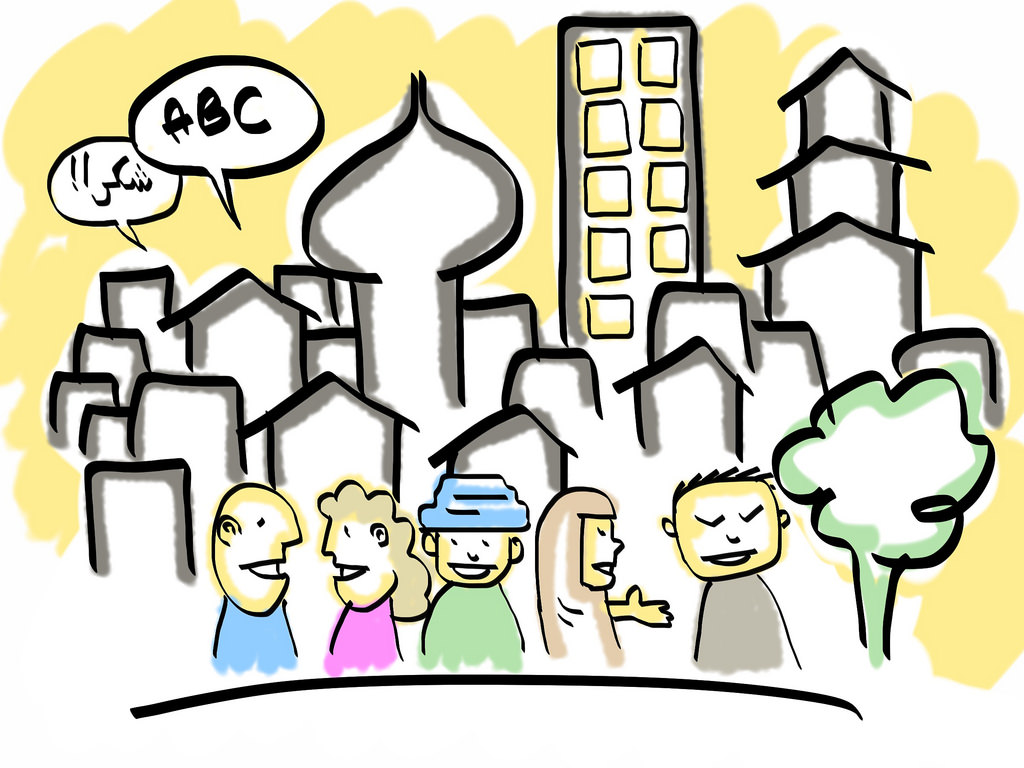 Diversity and Social Inclusion / What’s diversity? (All different all equal) Diversity and Social Inclusion / What’s diversity? (All different all equal) | |||||||||||||||||||
| Developed by | PROSVETA | |||||||||||||||||||
| Duration | 70 | |||||||||||||||||||
| Energizers |  10 - Rope game 10 - Rope game Have the participants stand on the middle of a space cleared of desks, chairs, etc. Divide the room in a way that allows them easily to move from one half of the room to the other, e.g. by placing a long piece of rope on the floor. The teacher stands at one of the ends of the rope and calls out a characteristic, or a colour or a letter, e.g. “Everyone having blue eyes!”; “Everyone having 3 brothers”, “Everyone whose name begins with B”, etc. and points to the part of the room where the participants wearing orange/ having 3 brothers/ having B names have to move to. All participants who are wearing orange/ having 3 brothers/ having B names move to the respective part of the room; the ones who are not , have to go to the other part. Questions have to be constructed so that the class does not divide in groups having comparatively equal number of students, i.e. one of the groups should consist (in most cases) of one, two or few students. Debriefing: Participants are asked to share how they felt when they were part of a big group; and when they were standing alone (or were part of a very small group); what did they feel of themselves (as part of a small/ big group), and what their feelings were towards the group they were not part of. | |||||||||||||||||||
| Relaxing Exercises |  7 - Strong as a tree 7 - Strong as a tree All students spread out in the room. With their feet firmly planted on the ground, they pretend they are trees that are slowly swaying back and forth with a breeze. The movements become stronger as a storm approaches. The students try to make their movements as strong as possible, but remember to keep their feet on the ground. Slowly the wind dies down and the trees can rest. | |||||||||||||||||||
| Objectives |
| |||||||||||||||||||
| 79 | ||
 | ||
| Preparation |
In Getting into the topic activity (D1_1) students are encouraged to talk about their personal encounters with the previously presented aspects of diversity in their local context. Different aspect of diversity are suggested by the different photo collages: - 3:48’- ethnic diversity/ racial diversity - 4:16’- racial diversity - 4:46 – ethnic diversity/ nationality/ social status However the teacher could accept other answers; the point is to have students present their opinion and start a discussion. *Request to the teacher (activity 2) Please collect and scan (or directly send the hard copies) of the picture cards/ sheets with students’ first impressions. They could be used in the upgraded version of the Teacher’s Manual (after Pilot 1) so that students will have information about the differences and similarities in the reactions to the same visual material at international level. | |
| Introduction | We are all different, even within our own cultures. Quite often, we reject and are suspicious of people who are different. We feel safer when communicating with people who physically and mentally look like us. But this is the easy way. We are missing a lot – life would be much more colourful and interesting if we embrace diversity and value it as an asset. | |
| 80 | ||
 | ||
| Methodology | Getting into the topic - presentation: Diversity – introduction to various aspects of differences between people (D1_1) 5‘
Students are split in groups of 8 to 10 people. Each group receives a pack of 8 to 10 pictures as a hard copy (option A) or a laptop computer with the pictures (option B) – D1_2. Each group member gets one of the pictures (option A). Part 1: Students are asked to look at the picture they have received and put down their first impressions at the bottom of the page. The first person writes in box 1, folds the paper backward and passes the picture card to their neighbor on the right who writes their impressions in box 2, folds the paper and passes it to their right neighbor, etc. When all students in the group have seen the all pictures and have written their impressions, part 1 is over. 10’ Part 2: Each student keeps the last sheet of paper he/she has worked with, unfolds the bottom part of the paper card and reads all the 8-10 impressions to the whole group. 5’ Reflection 1 10’ Debriefing within the group: if possible, provide some support teachers to moderate this activity (one teacher per group: if this is not possible, the reflection could be done as a whole class activity. Questions to be discussed:
Part 3: comparing first impressions of the different groups – representatives of the groups come to the front and share the outcomes of the debriefing activity (supported by examples) 5’ Option B: students can look at the pictures on a computer screen, provided that there is a laptop/ computer for each group. They write their first impressions from the pictures on strips of coloured paper (different colour for each picture). Impressions are collected considering colour and glued together.
Students are split in 2 groups (A and B). Group A: imagine you are living in a homogeneous (monoculture society/ community) and you like it. Think of creative ways to promote the idea that being a member of a monoculture community is an advantage (outlining its strong sides or disadvantages of the opposite); you have 5‘ to discuss and agree on the plot, 10’ for rehearsal and 5’- to present your work to the other group. Group B: Imagine you are living in a multicultural society/ community) and you like it (watch the video to get into the topic D1_3). Think of how to promote the idea that being a member of a multicultural community is a great advantage (outlining its strong sides or disadvantages of the opposite); you have 5 ‘ to discuss and agree on the plot, 10’ for rehearsal and 5’- to present your work and convince group A you are right. Reflection 2 5’ Imagine you could live in a dream community. What would it look like? | |
| 81 | ||
 | ||
| Reflection | Reflections 1 & 2 are part of the main body of the activities as they are closely related to them. As a close up, student could be encouraged to share the most valuable aspects of the activity; the most interesting ones; most surprising part of the activity, etc. | |
| Notes | ||
| Digital Resource | D1_1 inspired from (Cross - Cultural Communication: Many Faces of Diversity) - http://othernessproject.eu/atividades/digital/17/D1_1.mp4 D1_2 - http://othernessproject.eu/atividades/pdf/17_D1_2.pdf D1_3 - http://othernessproject.eu/atividades/digital/17/Diversity1_3.mp4 | |
| 82 | ||||||||||||||||||||
 | ||||||||||||||||||||
| 2 | 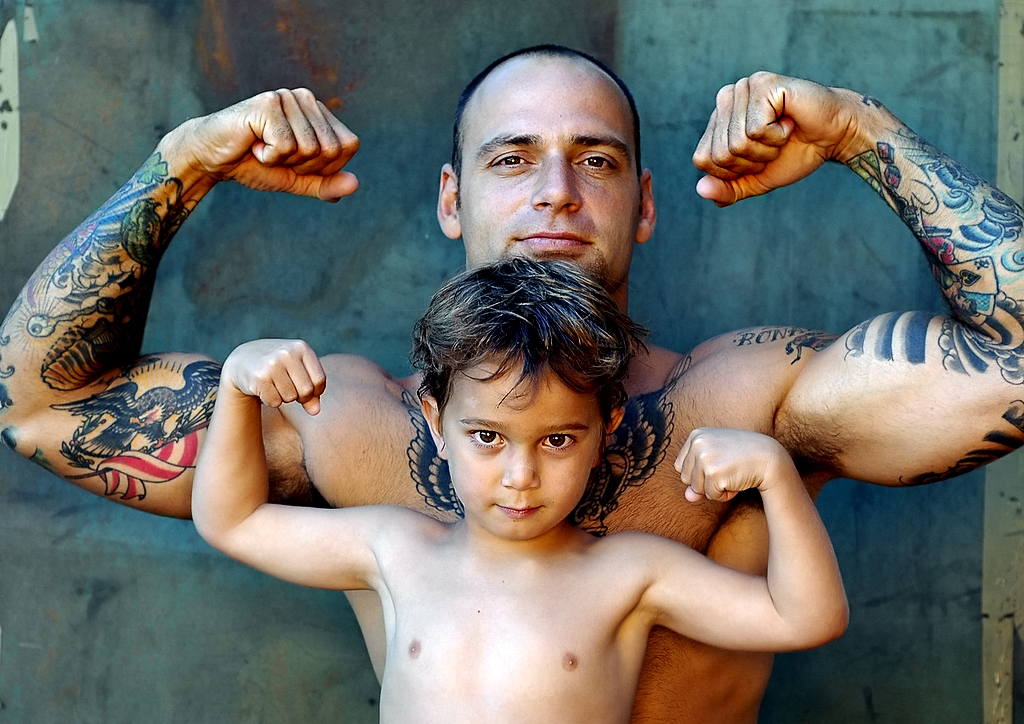 Diversity and Social Inclusion / Prejudges and stereotypes Diversity and Social Inclusion / Prejudges and stereotypes | |||||||||||||||||||
| Developed by | PROSVETA | |||||||||||||||||||
| Duration | 75 | |||||||||||||||||||
| Energizers |  22 - Names and adjectives 22 - Names and adjectives Participants stand in a circle; they think of an adjective to describe character or how they are feeling. The adjective must start with the same letter as their name, for instance, “I’m Maria and I’m merry”. Or, “I’m Alexander and I’m amazing.” As they say this, they can also mime an action that presents the adjective in a meaningful way. (N.B. In the national language versions of the TM there should be used popular names for the country and relevant adjectives in the respective language). Variation (use if time allows): The game could also be used a memory game (concentration game) to check if the rest of the group has remembered the ‘name-adjective’ pairs. After several rounds (each participant repeating his name and adjective, the teacher/ a game master, checks if the group remembers the ‘names-adjectives’ fixed pairs by saying the name of one of the students, e.g. ‘Maria’; Maria steps forward to the middle of the circle and the rest of the group are expected to come up with the adjective previously linked to the name by saying “Maria is merry”. If they cannot guess, the participant in the circle (Maria) might mime again the adjective as a tip. | |||||||||||||||||||
| Relaxing Exercises |  9 - Lion's breath 9 - Lion's breath Lion’s breath is a playful way to release and relax into more peaceful feelings. The trainer tells students that they are going to do a breath called the lion’s breath in order to let go of feelings or thoughts we no longer want. This breath is very helpful in getting those ideas out of us and pushing them far away. Instructions
| |||||||||||||||||||
| Objectives |
| |||||||||||||||||||
| 83 | ||
 | ||
| Preparation |
| |
| Introduction | “Stereotypes lose their power when the world is found to be more complex than the stereotype would suggest. When we learn that individuals do not fit the group stereotype, then it begins to fall apart. “ Ed Koch | |
| Methodology | Getting into the topic – interactive video: Stereotypes and prejudices – definitions and examples (D2_1). 5’ The New Students – guided drama activity inspired by the “HOWGH! A Simulation for Youth and Adult Education on Stereotypes and Discriminations” (Millenium Training and Development Institute).
| |
| 84 | ||
 | ||
| Reflection | Six thinking hats (Eduard de Bono)D2_6 – NFE tool: guided discussion: Thinking about past and future events and decisions can be very frustrating. Life is a complex thing and everything might seem to be mixed up and complicated. It is usually a good idea to distinguish between the different aspects of an event or a decision in order to see the real picture. Here is how we can do it. Imagine that when you put on a hat of specific colour, you consider only one aspect of a case or a decision. 10’
The YELLOW hat is the hat of creativity. Put it on and think (and share) how you could use what you experienced today in real. | |
| Notes | ||
| Digital Resource | D2_1 (video lesson): http://othernessproject.eu/atividades/digital/18/D2_1.mp4 D2_2 (participants), D2_3 (meetings), D2_4 (messages): http://othernessproject.eu/atividades/pdf/18_D2_2-D2_3-D2_4.pdf D2_5 – video; http://othernessproject.eu/atividades/digital/18/D2_5.mp4 D2_6 – interactive video for the reflection: http://othernessproject.eu/atividades/digital/18/D2_6.ppsx | |
| 85 | ||||||||||||||||||||||||||
 | ||||||||||||||||||||||||||
| 3 | 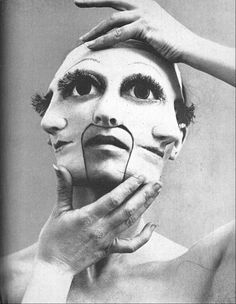 Diversity and Social Inclusion / Identity and diversity (ME-Others) Diversity and Social Inclusion / Identity and diversity (ME-Others) | |||||||||||||||||||||||||
| Developed by | PROSVETA | |||||||||||||||||||||||||
| Duration | 70 | |||||||||||||||||||||||||
| Energizers |  6 - Keep walking 6 - Keep walking The teacher instructs the students to walk in different manners covering the whole rook, i.e. walk like you are very happy, walk like a very heavy elephant, walk like you are 80 years old, walk like it’s raining cats and dogs, walk like a toddler, etc. | |||||||||||||||||||||||||
| Relaxing Exercises |  10 - Mountain range 10 - Mountain range Stand side by side in a line, in mountain pose, your feet hip-width apart. Each foot must touch the foot of the person on each side. Walk (as a group) across the room without separating their feet from your partner’s. Variation: Ask the students to walk on their toes. | |||||||||||||||||||||||||
| Objectives | Students will learn:
| |||||||||||||||||||||||||
| Preparation |
| |||||||||||||||||||||||||
| Introduction | Identity is who you are, your unique characteristics. “Diversity is the magic. It is the first manifestation, the first beginning of the differentiation of a thing and of a simple identity. The greater the diversity, the greater the perfection.” Thomas Berry | |||||||||||||||||||||||||
| 86 | ||
 | ||
| Methodology |
| |
| Reflection | Guided reflection: 10’
| |
| Notes | ||
| Digital Resource | D3_1 - http://othernessproject.eu/atividades/digital/19/D3_1_Identity.pptx D3_2 - http://othernessproject.eu/atividades/pdf/19_D3_2-D3_4.pdf D3_3 - http://othernessproject.eu/atividades/digital/19/D3_3.mp4 D3_4 - http://othernessproject.eu/atividades/pdf/19_D3_2-D3_4.pdf | |
| 87 | |||||||||||||||||||||||
 | |||||||||||||||||||||||
| 4 | 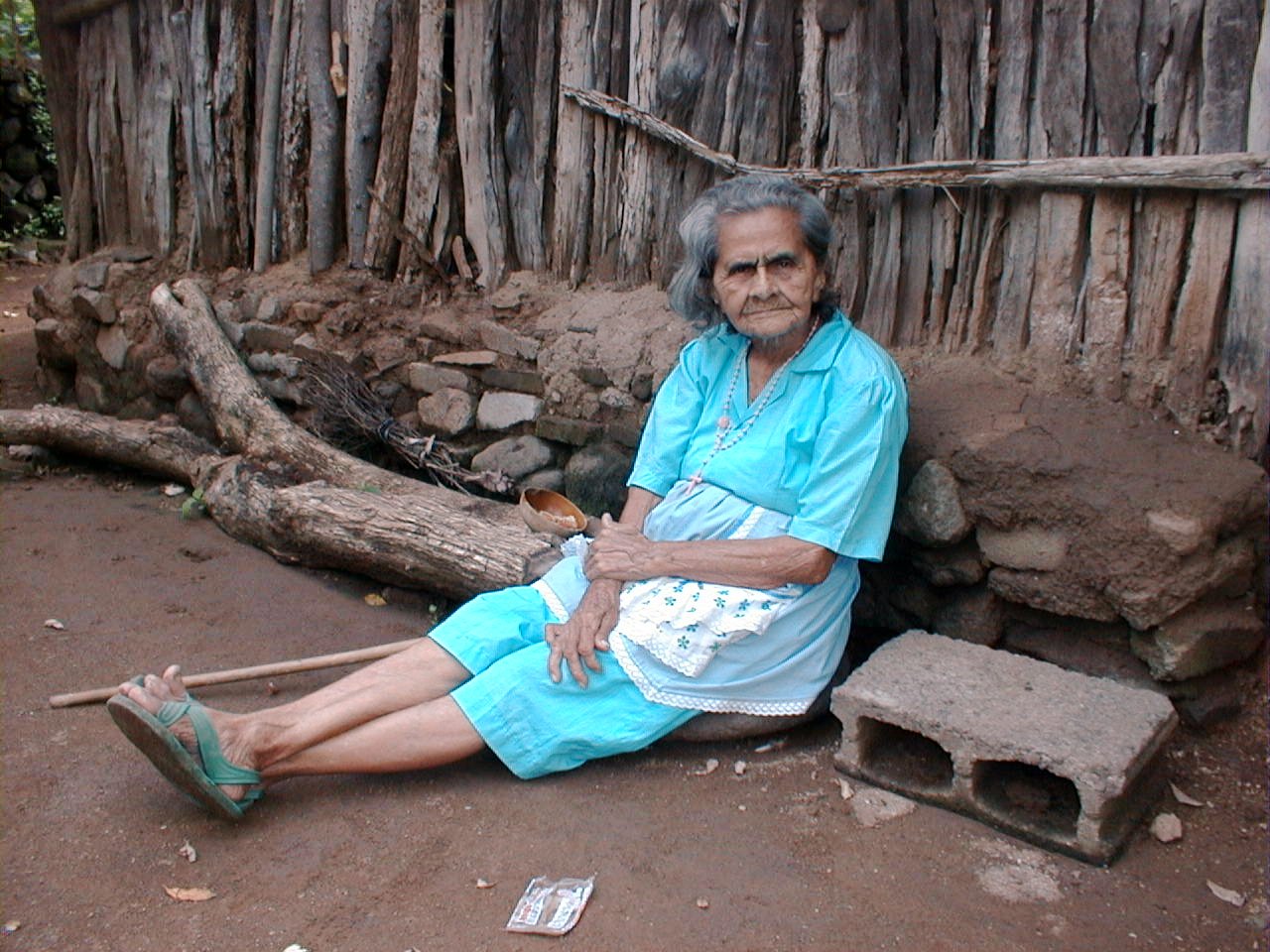 Diversity and Social Inclusion / Social Inclusion/Exclusion Diversity and Social Inclusion / Social Inclusion/Exclusion | ||||||||||||||||||||||
| Developed by | PROSVETA | ||||||||||||||||||||||
| Duration | 70 | ||||||||||||||||||||||
| Energizers |  7 - Connecting eyes 7 - Connecting eyes Participants stand in a circle. Each person makes eye contact with another person across the circle. The two walk across the circle and exchange positions, while maintaining eye contact. Many pairs can exchange at the same time, and the group should try to make sure that everyone in the circle is included in the exchange. Tip: Begin by trying this in silence and then exchange greetings in the middle of the circle. Variations: If the teacher considers, knowing the class atmosphere, that some students might be left not participating, i.e. they try to make eye contact but nobody responds to them and they have no chance to move from their initial position, the moderator could divide the class in 2 groups and introduce a competitive element – after the activity each group will be marked on the ‘team spirit thermometer’ (which could be printed on a A4 paper and the teacher marks the degrees with a marker). The more people you have left not participating in the ‘eye contact’ activity – the lower the degrees to be marked on the thermometer. | ||||||||||||||||||||||
| Relaxing Exercises |  9 - Lion's breath 9 - Lion's breath Lion’s breath is a playful way to release and relax into more peaceful feelings. The trainer tells students that they are going to do a breath called the lion’s breath in order to let go of feelings or thoughts we no longer want. This breath is very helpful in getting those ideas out of us and pushing them far away. Instructions
| ||||||||||||||||||||||
| Objectives |
| ||||||||||||||||||||||
| Preparation |
| ||||||||||||||||||||||
| 88 | ||
 | ||
| Introduction | “We can either emphasize those aspects of our traditions, religious or secular, that speak of hatred, exclusion, and suspicion or work with those that stress the interdependence and equality of all human beings. The choice is yours.” Karen Armstrong | |
| Methodology |
| |
| Reflection | Six thinking hats (Eduard de Bono) – guided discussion: Thinking about past and future events and decisions can be very frustrating. Life is a complex thing and everything might seem to be mixed up and complicated. It is usually a good idea to distinguish between the different aspects of an event or a decision in order to see the real picture. Here is how we can do it. Imagine that when you put on a hat of specific colour, you consider only one aspect of a case or a decision. 10’
| |
| 89 | ||
 | ||
| Notes | ||
| Digital Resource | D4_1 (video as a brain teaser) - http://othernessproject.eu/atividades/digital/20/D4_1.avi D4_2 - interactive game - http://othernessproject.eu/atividades/digital/20/D4_2_Can_I_Join_You.swf When trying to open D4_2.swf file, there appears a message warning that the file might harm your computer. The reason for this message is that the settings of the most common browsers have been set not to open SWF files by default because they are not quite common. This is why users are asked to agree to open swf files, which you have to do by choosing the option KEEP. The file will cause no harm to you computer. | |
| 90 | |||||||||||||||||||||||
 | |||||||||||||||||||||||
| 5 |  Diversity and Social Inclusion / Racism: Stop and Play! (How to combat Racism) Diversity and Social Inclusion / Racism: Stop and Play! (How to combat Racism) | ||||||||||||||||||||||
| Developed by | CSC DANILO DOLCI | ||||||||||||||||||||||
| Duration | 90 min | ||||||||||||||||||||||
| Energizers |  1 - Break the Circle 1 - Break the Circle The teacher assigns randomly a number to each student, depending on the group size, i.e. for 20 students, numbers 1-4 are ok, so each group has 5 people (groups could be synthesized by the students with the same number, i.e. all having been assigned number ‘1’ or by students where each one has his/her own unique number 1-4; similarly and more fun is grouping by ingredient for a Greek salad, where every student is i.e. ‘tomato’, ‘cucumber’, ‘onion’, ‘oregano’, etc.) Once the groups have been formed, they make circles and the teacher randomly picks a number (or an ingredient) to step out of the circle and try to break in, while the others remaining are instructed to not let go of their hands no matter what. This can be repeated once more with another number stepping out. | ||||||||||||||||||||||
| Relaxing Exercises |  17 - Circle massage 17 - Circle massage The group forms a circle and faces one direction. Each participant places his/her hands on the shoulders of the person in front of her/him. Each person then gives the person who is in front a shoulder massage. The person being massaged can give a feedback. After a few minutes, the group turns the other way so that the person who has been making the massage is then receiving it in return. | ||||||||||||||||||||||
| Objectives |
| ||||||||||||||||||||||
| Preparation |
Computer and projector (optional)
Augusto’s Boal FORUM THEATRE for teachers, pp. 2-4 (Susie MacDonald - Daniel Rachel) | ||||||||||||||||||||||
| 91 | ||
 | ||
| Introduction | This activity is based on the methodology of “Forum Theatre”, a technique pioneered by Brazilian radical Augusto Boal. A play or scene, usually indicating some kind of oppression, is shown twice. During the replay, any member of the audience (‘spect-actor’) is allowed to shout ‘Stop!’, step forward and take the place of one of the oppressed characters, showing how they could change the situation to enable a different outcome. Several alternatives may be explored by different spect-actors. The other actors remain in character, improvising their responses. A facilitator (Joker) is necessary to enable communication between the players and the audience. The strategy breaks through the barrier between performers and audience, putting them on an equal footing. It enables participants to try out courses of action which could be applicable to their everyday lives. Originally the technique was developed by Boal as a political tool for change (part of the Theatre of the Oppressed), but has been widely adapted for use in educational contexts. | |
| Methodology | NFE Tool Forum Theatre
DT – Children’s Educational Video: Explaining Racism and Discrimination – That’s Why TV | |
| 92 | ||
 | ||
| Reflection | Teacher will stimulate the reflection in the plenary, using the questions below (15’):
For the actors:
For the spect-actors:
For all:
Do you think is important? Why? | |
| Notes | For the Forum Theatre activity we suggest teachers to explain well the activity and to find suitable solutions to the role-play, stimulating their creative thinking in the solution of the problem and providing furthermore suggestions. Maybe it could be useful to provide "examples of interventions" in the activity. | |
| Digital Resource | Children’s Educational Video: Explaining Racism and Discrimination – That’s Why TV http://othernessproject.eu/atividades/digital/21/ChildrenDiscrimination.mp4 | |
| 93 | ||||||||||||||||||||||||||
 | ||||||||||||||||||||||||||
| 6 | 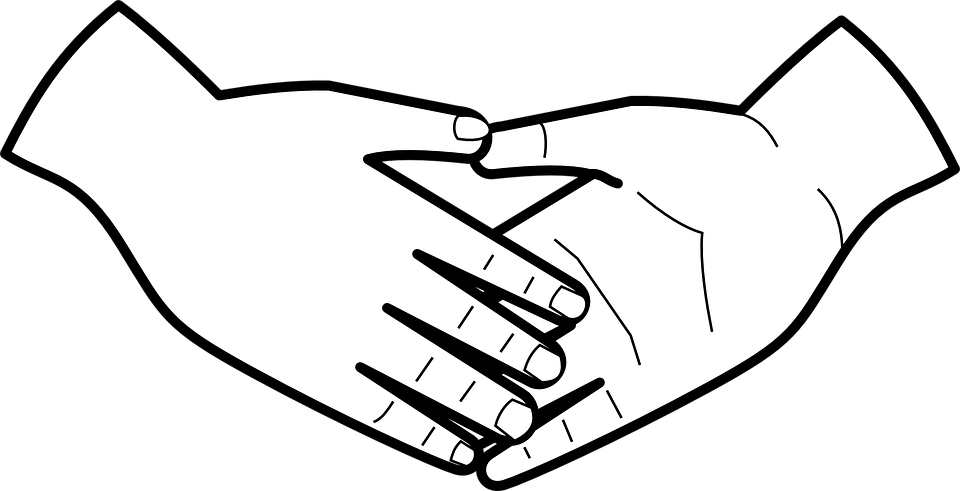 Diversity and Social Inclusion / I am able to do it! (Disability) Diversity and Social Inclusion / I am able to do it! (Disability) | |||||||||||||||||||||||||
| Developed by | CSC DANILO DOLCI | |||||||||||||||||||||||||
| Duration | 80 min | |||||||||||||||||||||||||
| Energizers |  14 - I am going on a trip 14 - I am going on a trip Everyone sits in a circle. Start by saying “I’m going on a trip and I’m taking a hug”, and hug the person to your right. That person then has to say “I’m going on a trip and I’m taking a hug and a pat on the back”, and then give the person on their right a hug and a pat on the back. Each person repeats what has been said and adds a new action to the list. Go round the circle until everyone has had a turn. | |||||||||||||||||||||||||
| Relaxing Exercises |  4 - Visualization using color/soothing sound 4 - Visualization using color/soothing sound Facilitator asks the students to imagine a favorite color that makes them feel peaceful and safe. They keep their imagine taking in that color with each breath and sending it throughout their entire body as they exhale. They continue until they visualize being filled with their special, relaxing color. The same exercise can be performed using soothing sound or aroma. Also, it is more effective if relaxing music is used. Kelly Roper | |||||||||||||||||||||||||
| Objectives |
| |||||||||||||||||||||||||
| Preparation | Materials
Tips The teacher can choose different objects which can be easily found on the class or at home. To make the game more interesting, some objects should be very hard to guess! As well for the second game, the teacher can choose different statements, the more and more harder | |||||||||||||||||||||||||
| Introduction | Students will experiment different forms of disability through some games, reflecting about the discrimination related to this topic. | |||||||||||||||||||||||||
| 94 | ||
 | ||
| Methodology | NFE Tool: Experiential games
At the end of the game, the teacher will check the papers and decide the team guessing more statements or approaching more to them. (10)
DT – video “Inclusion of people with disabilities” - ACT Alliance | |
| Reflection | Teacher will stimulate the reflection in the plenary, showing the video and using the questions below (15):
| |
| Notes | ||
| Digital Resource | video “Inclusion of people with disabilities” - ACT Alliance http://othernessproject.eu/atividades/digital/22/Inclusionofdisabilities.mp4 | |
| 95 | ||||||||||||||||||||||||||
 | ||||||||||||||||||||||||||
| 7 | 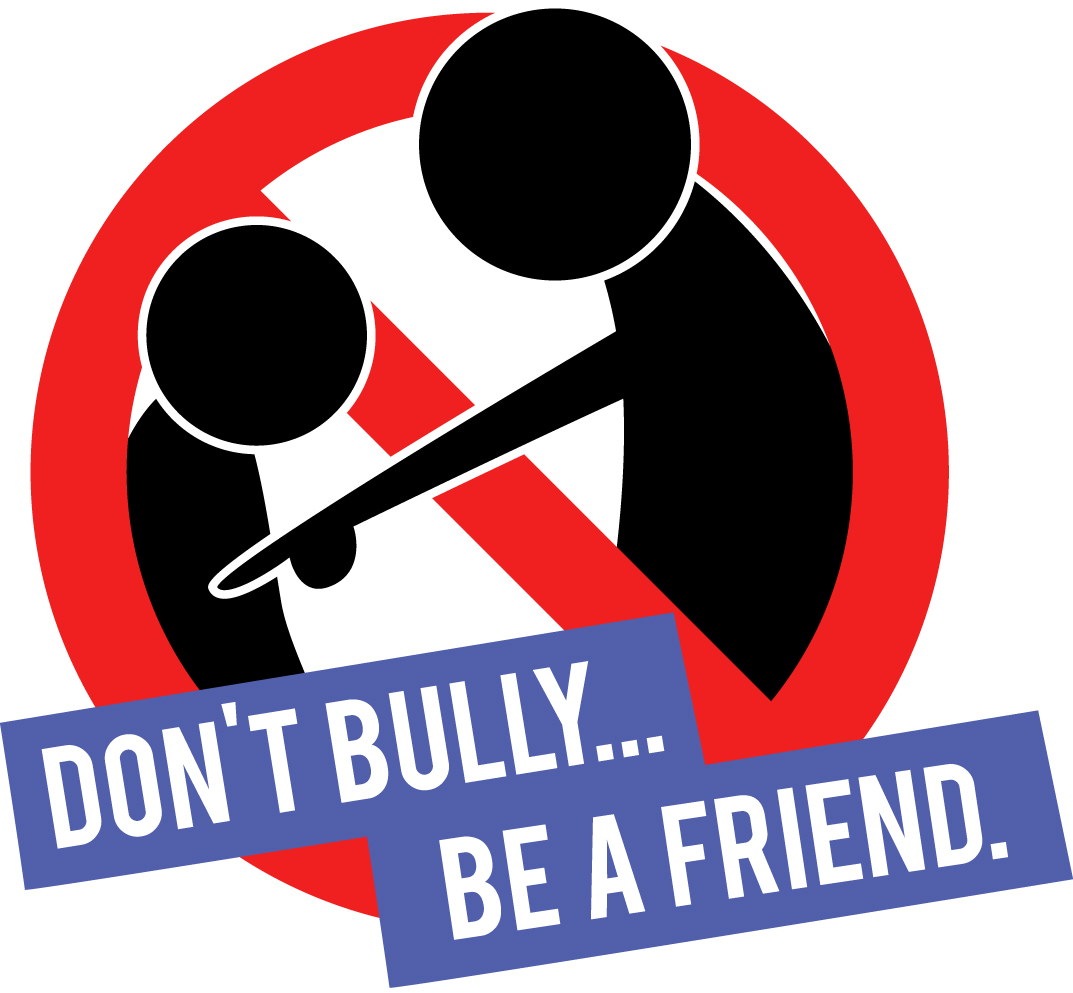 Diversity and Social Inclusion / Bullying: What should I do? (Diversity at school) Diversity and Social Inclusion / Bullying: What should I do? (Diversity at school) | |||||||||||||||||||||||||
| Developed by | CSC DANILO DOLCI | |||||||||||||||||||||||||
| Duration | 90 min | |||||||||||||||||||||||||
| Energizers |  11 - Alphabetical order 11 - Alphabetical order Students make a circle with the chairs, take off their shoes and get on the chairs (one per person - the circle needs to be as close as possible). Standing on the chairs and just moving from one to another one without getting off, students have to arrange themselves in alphabetical order according to their name. As soon as they are ready, teacher will check if they are right; if not they continue until they are right. | |||||||||||||||||||||||||
| Relaxing Exercises |  12 - Warm back 12 - Warm back A piece of paper is stuck to each student’s back and they are given a pen. The paper is already prepared. Each piece of paper says: “I like………..”. Slow music is played and the students walk around and write characteristics about the person whom they like on the paper. Each child is allowed to look at the paper at the end and take it home. | |||||||||||||||||||||||||
| Objectives |
| |||||||||||||||||||||||||
| Preparation | Materials
TIPS Write your own bullying scenes that the children in your group can relate to instead of using those that are provided. | |||||||||||||||||||||||||
| Introduction | Bullying is a phenomenon affecting more or less all schools. Often children don’t know how to react and face these situations. Through this activity students will reflect about bullying and decide how to position themselves and how to respond to different bullying scenarios, analyzing pros and cons of different possible reactions and commit themselves to react in a good way, combating bullying in their school. | |||||||||||||||||||||||||
| 96 | ||
 | ||
| Methodology | NFE Tool : Discussion, Game with movement, based on “Bullying Scenes” from COMPASITO (Nancy Flowers, 2009)
DT - video “Ways to Stop Bullying” | |
| Reflection | Teacher will stimulate the reflection in the plenary, showing the video and using the questions below (15’):
| |
| Notes | ||
| Digital Resource | Video “Ways to Stop Bullying” http://othernessproject.eu/atividades/digital/23/WaysStopBullying.mp4 | |
| 97 | ||||||||||||||||||||||||||
 | ||||||||||||||||||||||||||
| 8 | 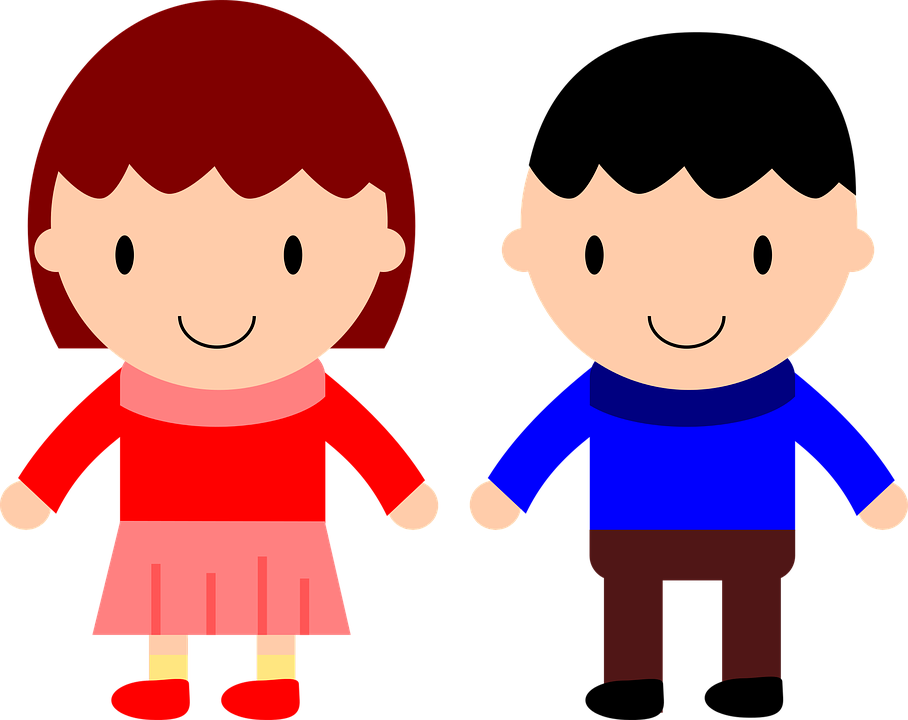 Diversity and Social Inclusion / Pink and Blue (Man and Woman) Diversity and Social Inclusion / Pink and Blue (Man and Woman) | |||||||||||||||||||||||||
| Developed by | CSC DANILO DOLCI | |||||||||||||||||||||||||
| Duration | 80 | |||||||||||||||||||||||||
| Energizers |  2 - Moo!!! 2 - Moo!!! The teacher assigns randomly in a piece of paper (turned upside down on their desks) each student with farm animal, i.e. ‘cow’, ‘horse’, ‘sheep’, ‘rooster’, etc. Once the students are informed of their animal role, they are instructed to walk around the room acting like the animal they are assigned (i.e. making its sound), in order to find their kind. | |||||||||||||||||||||||||
| Relaxing Exercises |  20 - Holding legs 20 - Holding legs Participants work in pairs. And you can put a quiet and relaxing music (or sounds like water falling down, sea waves, etc.). Half of the participants are asked to lie down face up, eyes closed, with their left leg extended on the floor and their right leg elevated. Another participant stands up and loops a towel around the heel of the other’s right foot and holds the ends of the towel in his/her hands, and makes soft and gentle movements (upwards and downwards, and sidewards) while the other totally relaxes his/her leg. Then they repeat the same process with the left leg. Then the participants switch roles. | |||||||||||||||||||||||||
| Objectives |
| |||||||||||||||||||||||||
| Preparation |
Suggested reading: Pink and blue: the color of gender - Paolo Frassanito & Benedetta Pettorini - https://www.researchgate.net/profile/Paolo_Frassanito/publication/5673081_Pink_and_blue_The_color_of_gender/links/5406edba0cf2c48563b27fd4.pdf | |||||||||||||||||||||||||
| Introduction | This activity aims to make students reflect about the stereotypes related to the image and roles related to woman and man, raise awareness about their origin and how media and society reinforce them. Through this “association game”, students will be asked to think to specific characteristic of woman and man and then reflect about which of them are stereotypes. | |||||||||||||||||||||||||
| 98 | ||
 | ||
| Methodology | NFE Tool : Group Game
The first one, about Male Gender Stereotypes: https://www.youtube.com/watch?v=QxYvhh1hQvk ; The second one about Female Gender Stereotypes: https://www.youtube.com/watch?v=sDDqW9KvvSQ (15) The teacher will ask students if they have ever thought before about why pink is the color of girls and blue of boys, as one of the main example of stereotyped characteristics related to gender. (10)
DT: - Video n. 1 - #HatchKids Discuss Male Gender Stereotypes – SheKnows – available at https://www.youtube.com/watch?v=QxYvhh1hQvk; Video n.2 - #HatchKids Discuss Gender Roles and the Rise of #Femvertising – SheKnows – available at https://www.youtube.com/watch?v=sDDqW9KvvSQ; Video n. 3 - Gender Bent | Pink for Girls, Blue for Boys | MTV – available at https://www.youtube.com/watch?v=xgJ4dro7B9I | |
| Reflection | Teacher will stimulate the reflection in the plenary:
| |
| Notes | ||
| Digital Resource | video 1 http://othernessproject.eu/atividades/digital/24/D8_1.mp4 video 2 http://othernessproject.eu/atividades/digital/24/D8_2.mp4 video 3 http://othernessproject.eu/atividades/digital/24/D8_3.mp4 video 4 http://othernessproject.eu/atividades/digital/24/D8_4.mp4 | |
| 99 | |||||||||||||||||||||||
 | |||||||||||||||||||||||
| 9 |  Diversity and Social Inclusion / Sexual Orientation Diversity and Social Inclusion / Sexual Orientation | ||||||||||||||||||||||
| Developed by | IP SANTAREM | ||||||||||||||||||||||
| Duration | 75 | ||||||||||||||||||||||
| Energizers |  16 - Back to back 16 - Back to back Participants find a pair of similar size and weight. They sit on the floor, back to back with their pair. They hold their arms. They have to get up, while keeping the arms and backs together. After trying once-twice with their pair they switch pairs. They can repeat this process with other pairs for a few times. | ||||||||||||||||||||||
| Relaxing Exercises |  17 - Circle massage 17 - Circle massage The group forms a circle and faces one direction. Each participant places his/her hands on the shoulders of the person in front of her/him. Each person then gives the person who is in front a shoulder massage. The person being massaged can give a feedback. After a few minutes, the group turns the other way so that the person who has been making the massage is then receiving it in return. | ||||||||||||||||||||||
| Objectives |
| ||||||||||||||||||||||
| Preparation | Suggested pedagogical resources and tips:
Tips: Teachers have to pass the idea of respect and tolerance towards all sexual orientations. It is very important to create an atmosphere of ease and trust between them and the students and between the students themselves, avoiding mocking attitudes or scorn and derision. If the activity takes place in the school library, teachers may use the books related to sexuality education, if they are available. If they aren’t, some of the answers are in the crosswords the students are going to do in next step. Other sexuality terminology can be found in Sexuality glossary (UCLA, 2016). Materials: Crosswords: gay, lesbian, queer, heterosexual, androgynous, bisexual, transgender, sexuality, gender, cisgender, LGBT, respect, tolerance, coming out, etc. | ||||||||||||||||||||||
| 100 | ||
 | ||
| Introduction | Sexual orientation is sexual attraction to another person. It is different from other aspects of sexuality like biological sex, gender identity (the psychological sense of being male or female, who do we identify as?). The orientation of sexual desire can be manifested in different forms: heterosexuality, homosexuality, bisexuality and asexuality. All of them are possible alternatives and none of them represents any type of risk (neither psychic nor physical) for the person or the social group, although heterosexuality is still considered by many people as the “norm”. Prejudices and negative stereotypes about homosexuality and bisexuality are still deeply imbedded in societies value systems and behaviours, which leads to unacceptable situations of diverse forms of discrimination. | |
| Methodology | NFE tool: Presentation/discussion of ideas and word game.
| |
| Reflection | 15’
| |
| Notes | ||
| Digital Resource | CrossWords - http://othernessproject.eu/atividades/digital/25/cruz.html Sexuality glossary (UCLA, 2016) - www.lgbt.ucla.edu/Resources/LGBTQ-Terminology | |
| 101 | ||||||||||||||||||||
 | ||||||||||||||||||||
| 10 |  Diversity and Social Inclusion / Intolerance/Discrimination Diversity and Social Inclusion / Intolerance/Discrimination | |||||||||||||||||||
| Developed by | IP SANTAREM | |||||||||||||||||||
| Duration | 80 | |||||||||||||||||||
| Energizers |  19 - Grab the finger 19 - Grab the finger In a circle, place right finger on next person s left palm. Try to grab a finger before yours gets grabbed. After doing several times switch; place left finger on next person s right palm and repeat the process for a few times. | |||||||||||||||||||
| Relaxing Exercises |  16 - Press the face 16 - Press the face It is like the game "telephone" but instead of passing a word or sentence around the group, participants pass a facial expression. | |||||||||||||||||||
| Objectives |
| |||||||||||||||||||
| 102 | ||
 | ||
| Preparation | Tips:
Materials:
Digital tool:
https://www.youtube.com/watch?v=DzcC1vw7GSI
http://othernessproject.eu/atividades/pdf/26_DIGITAL TOOLS D10.pdf | |
| Introduction | History provides many examples of the way stereotypes and discrimination can escalate to all forms of violence, murders and even genocides. The multicultural diversity can enrich us as human beings but it can also lead to disinterest, indifference, intolerance and discrimination that exclude minorities from public services, employment and education opportunities, police custody and justice protection, housing, political representation, etc. It is very important to get awareness of our own stereotypes and prejudices to prevent intolerance and discrimination for a more humanized and peaceful coexistence, and to enjoy the multicultural diversity and learn from it. | |
| 103 | ||
 | ||
| Methodology | NFE tools: Storytelling and role playing with puppets.
Group 1: discrimination based on gender (group 1), Group 2: discrimination based on ethnicity Group 3: discrimination based on social status, Group 4: discrimination based on religious beliefs and practices, Group 5: discrimination based on disability, Group 6: discrimination based on age. 10’
| |
| Reflection | Questions to ask students at the end of the activity: 10’
| |
| Notes | ||
| Digital Resource |
https://www.youtube.com/watch?v=DzcC1vw7GSI
http://othernessproject.eu/atividades/pdf/26_DIGITAL TOOLS D10.pdf | |
| 104 | |||||||||||||||||||||||
 | |||||||||||||||||||||||
| 11 | 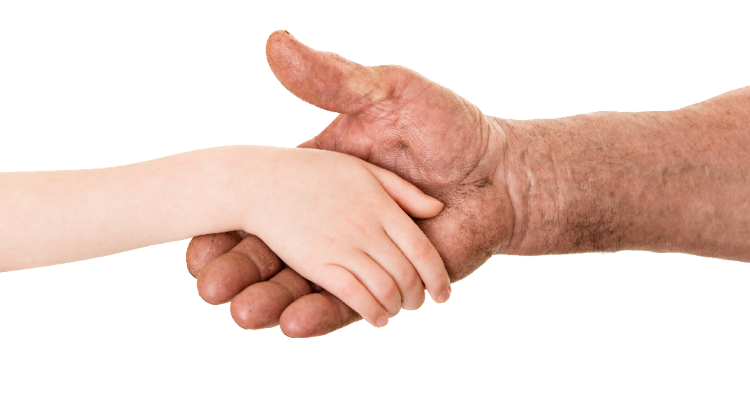 Diversity and Social Inclusion / Young-Old Diversity and Social Inclusion / Young-Old | ||||||||||||||||||||||
| Developed by | IP SANTAREM | ||||||||||||||||||||||
| Duration | 45 45 | ||||||||||||||||||||||
| Energizers |  5 - Good morning or evening 5 - Good morning or evening Everybody walks around the room greeting each other (as if everybody was their close friends) using words and gestures (shake hand, kiss, hug). Then they repeat the greeting in silence using only their eyes. When the exercise is over, the teacher asks students how did they feel with the two different ways of greeting (eg was it difficult, how did they manage to communicate, etc). | ||||||||||||||||||||||
| Relaxing Exercises |  18 - Making room 18 - Making room Participants are asked to raise their arms with palms facing up, imagining that they are pushing up the ceiling and are asked do a lot of strength in that direction to increase the space of the room where they are. Then they are asked to turn the arms down with palms facing down thinking that they are pushing down the floor. They are asked to push away the walls turning their left arm and palm to the wall on their left and their right arm and palm to the wall that’s on their right. | ||||||||||||||||||||||
| Objectives |
| ||||||||||||||||||||||
| Preparation | Tips: Possible follow-up: teacher and students compile the projects and send them to local old age care institutions near the school, and implement one or some of the actions they planned in local community. Materials: Copies of the 7 question planning model mentioned below, A4 white paper and markers, computer, internet, video projector. Digital Tools: Once we were young https://www.youtube.com/watch?v=c_XyFGFr29c When Teenage Meets Old Age https://www.youtube.com/watch?v=gt4zhFpDiyc Original digital tool: multimedia computer animation of the poem Beautiful Old Age by D.H. Lawrence. | ||||||||||||||||||||||
| 105 | ||
 | ||
| Introduction | United Nations data shows the trend of aging population around the world. There are fewer working age people supporting more dependent younger people, which has consequences in labour issues (higher unemployment among younger people), in health services and social care, economic growth, etc., bringing challenges that could be faced in much more humanised and efficient ways if old age and living together with older people are not perceived/taken as a liability but instead as an advantage. | |
| Methodology | NFE tool: Brainstorming, project planning. Session 1:
Session 2:
| |
| Reflection |
| |
| Notes | ||
| Digital Resource | Original digital tool: multimedia computer animation of the poem Beautiful Old Age by D.H. Lawrence. http://othernessproject.eu/atividades/digital/27/old_age_1.mp4 | |
| 106 | ||||||||||||||||||||
 | ||||||||||||||||||||
| 12 | 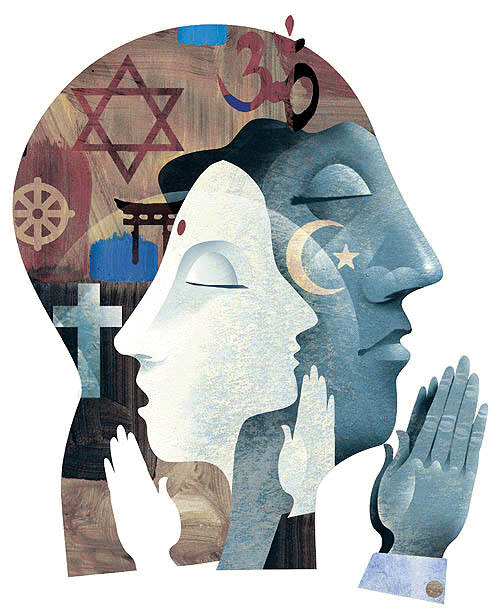 Diversity and Social Inclusion / Religion Diversity and Social Inclusion / Religion | |||||||||||||||||||
| Developed by | IP SANTAREM | |||||||||||||||||||
| Duration | 45 45 | |||||||||||||||||||
| Energizers |  20 - Chief of clan 20 - Chief of clan Everyone stands in a circle. One participant closes his/her eyes or steps out of the room. He/She will have to guess who is the chief of the clan. One participant volunteers to be the secret Chief (quietly, so the "guesser" can't hear anything). The chief begins an action such as snapping fingers, patting the tummy, or slapping knees, and everyone in the circle imitates him/her. The guesser returns to the room and tries to figure out who the chief is. As the guesser looks around, the chief changes the action avoiding being detected. | |||||||||||||||||||
| Relaxing Exercises |  1 - Guided fantasy 1 - Guided fantasy Students are asked to close their eyes (if comfortable) and, with the guidance of the facilitator, slowly imagine a scene of the past or future event. More and more details are used to describe the event with all senses and thoughts. A suggested brief script could be à Begin by breathing slowly and deeply… Think of yourself in a place where you feel relaxed and at ease… Create all the details in your mind, what do you see… what the sounds are like, the smells and colors of this special place… Are there any people …? Rossman, 2016 | |||||||||||||||||||
| Objectives |
| |||||||||||||||||||
| 107 | ||
 | ||
| Preparation | Suggested reading: Declaration on the Elimination of All Forms of Intolerance and of Discrimination Based on Religion or Belief, articles 1-3 and 6: http://www.un.org/documents/ga/res/36/a36r055.htm (UN, 2016) European Convention on Human Rights, pages 10-12 and 48: http://www.echr.coe.int/Documents/Convention_ENG.pdf (Europe, 2016) Arda Religion Dictionary: http://www.thearda.com/learningcenter/religiondictionary.asp (ARDA, 2016) Tips:
Materials:
Digital tool: Digital element match game of cards about religions: Christianity, Judaism, Islam, Buddhism, Hinduism, etc. | |
| Introduction | The 1981 Declaration on the Elimination of All Forms of Intolerance and of Discrimination Based on Religion or Belief protects religious freedom at national and international levels but there are many examples where/when this type of freedom is not a reality. Unfortunately, the are many cases of discrimination everywhere and in some countries active persecution of religious minorities. It’s a very complex and sensitive problem that has to be considered in early education, starting by scientific knowledge on the vast variety of religions and beliefs that represent different conceptions of life and death of the humankind, and the acknowledgment of the importance of respecting this diversity by not confusing religion and the things that man and women do in name of their religion. | |
| 108 | ||
 | ||
| Methodology | NFE tool: Debate, game and video production Session 1:
Session 2:
As a follow up, the students can process the information for publishing in their school website or newspaper. | |
| Reflection | Guided reflection:
| |
| Notes | ||
| Digital Resource | Digital element match game of cards about religions: Christianity, Judaism, Islam, Buddhism, Hinduism, etc. http://othernessproject.eu/atividades/digital/28/cartas.html | |
| 109 | ||||||||||||||||||||||||||
 | ||||||||||||||||||||||||||
| 13 | .svg.png) Diversity and Social Inclusion / Social Status Diversity and Social Inclusion / Social Status | |||||||||||||||||||||||||
| Developed by | AENAO | |||||||||||||||||||||||||
| Duration | 70 | |||||||||||||||||||||||||
| Energizers |  3 - Amoeba 3 - Amoeba An evolution game! Everyone starts off as an amoeba, with the purpose of evolving to a human. All students walk around acting like an amoeba and when they meet with another amoeba, they play one round of rock/paper/scissors. Whoever wins evolves into a worm. When two worms meet they play again rock/paper/scissors and whoever wins turns into a wasp, but whoever loses goes back to becoming an amoeba. This continues until one becomes human. The evolution stages are: amoeba à worm à wasp à chicken à monkey à human. | |||||||||||||||||||||||||
| Relaxing Exercises |  15 - Moving like a toy 15 - Moving like a toy The teacher uses a magic word to change the students into many string-loaded (wind-up) toys. At the teacher’s signal, the toys start to move across the class, as many robots, to get their sits. They have to move more quickly at the beginning and then gradually more and more slowly, because their charge is finishing. Some of them will be frozen in the middle of the room, and the teacher has to give their cranks one more turn to help them reach their seats | |||||||||||||||||||||||||
| Objectives |
| |||||||||||||||||||||||||
| Preparation |
| |||||||||||||||||||||||||
| Introduction | “We may have all come in different ships but we are all on the same boat now”. Martin Luther King Jr. | |||||||||||||||||||||||||
| 110 | ||
 | ||
| Methodology | NFE Tool Talk as your… Identity and Diversity Toolbox https://www.salto-youth.net/tools/toolbox/tool/identity-and-diversity-tool-box.1365 Simulation exercise
| |
| Reflection | Teacher asks questions to students in the plenary:
| |
| Notes | ||
| Digital Resource | ||
| 111 | ||||||||||||||||||||||||||
 | ||||||||||||||||||||||||||
| 14 | 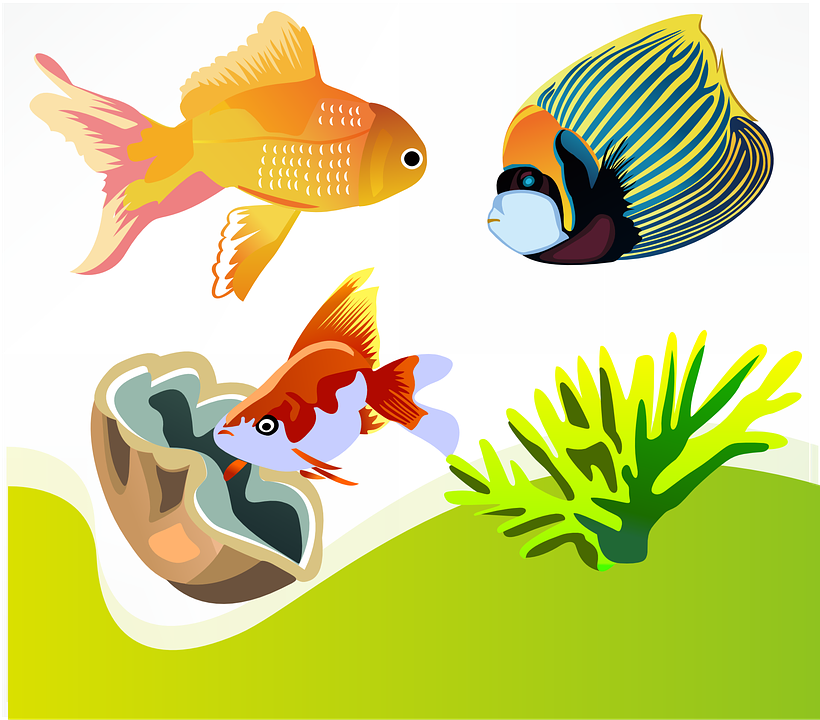 Diversity and Social Inclusion / Cultural / Ethnic Diversity Diversity and Social Inclusion / Cultural / Ethnic Diversity | |||||||||||||||||||||||||
| Developed by | AENAO | |||||||||||||||||||||||||
| Duration | 100 | |||||||||||||||||||||||||
| Energizers |  5 - Good morning or evening 5 - Good morning or evening Everybody walks around the room greeting each other (as if everybody was their close friends) using words and gestures (shake hand, kiss, hug). Then they repeat the greeting in silence using only their eyes. When the exercise is over, the teacher asks students how did they feel with the two different ways of greeting (eg was it difficult, how did they manage to communicate, etc). | |||||||||||||||||||||||||
| Relaxing Exercises |  8 - Seasons of the year 8 - Seasons of the year All players sit in a circle, but not too close to one another. The teacher moves like a plant during the seasons of the year. Winter: the plants are small, weak and are crunched together on the ground. Spring: through the stronger sunshine, the plants grow slowly and slowly rise. Summer: through the warm sun, the plants slowly open their arms, the flowers open their blooms are stand up straight. Autumn: the sun rays become weaker. The plants begin to slowly shrivel, the blooms and leaves begin to fall away. | |||||||||||||||||||||||||
| Objectives |
| |||||||||||||||||||||||||
| Preparation |
Pieces of clothing and personal items(teacher can ask students a few days prior to implementation of the exercise to bring these items), Papers, markers. | |||||||||||||||||||||||||
| Introduction | “Once you understand and appreciate other people’s cultural backgrounds, then you can also connect with them more”. Unknown. | |||||||||||||||||||||||||
| 112 | ||
 | ||
| Methodology | NFE Tool Simulation exercise, team work NFE tool inspired from Intercultural nights in Youth Projects (see photos and Intercultural game (Rafa Rafa))
NOTE: They will NOT reveal their country to the other groups. If they are facing difficulties, teacher can give them examples (see Tips). According to the countries that the students represent, they will figure out customs of the country, traditional foods/dances, they can draw a flag, etc. Tip: they can use internet to find information. They will find a space in the room (or in another room if available), and structure their country’s presentation. (30')
(15’ – 3’ per group)
(15’ – 3’ per group) Photos from intercultural nights (to be seen prior to the exercise) | |
| 113 | ||
 | ||
| Reflection | Teacher asks questions in the plenary:
(20’) | |
| Notes | ||
| Digital Resource | Prezi Presentation: http://prezi.com/wrol9ilanqxu/?utm_campaign=share&utm_medium=copy | |
| 114 | ||||||||||||||||||||
 | ||||||||||||||||||||
| 15 |  Diversity and Social Inclusion / Hotel Great Europe (Country - Language) Diversity and Social Inclusion / Hotel Great Europe (Country - Language) | |||||||||||||||||||
| Developed by | AENAO | |||||||||||||||||||
| Duration | 80 | |||||||||||||||||||
| Energizers |  2 - Moo!!! 2 - Moo!!! The teacher assigns randomly in a piece of paper (turned upside down on their desks) each student with farm animal, i.e. ‘cow’, ‘horse’, ‘sheep’, ‘rooster’, etc. Once the students are informed of their animal role, they are instructed to walk around the room acting like the animal they are assigned (i.e. making its sound), in order to find their kind. | |||||||||||||||||||
| Relaxing Exercises |  6 - Bee breathing 6 - Bee breathing The teacher instructs the students to get in a comfortable position to practice bee breathing. They have to imagine that they are sitting on a leaf or a flower petal, to sit straight and allow the leaf or petal to gently support them. The teacher gives students the following instructions: Breathe in, allowing the air to just gently come in through your nose, filling up your lungs. As you breathe out, buzz like a bee. See how long your buzz can last. See how far your bee is going to fly before sitting down and resting again. Buzz. Buzz. Buzz. On the next breath, see if your bee can fly with a loud, strong buzz. On the next breath, see if your bee can fly with a soft buzz. When the exercise is finished, the teacher gives time for a short discussion: Does it feel different with a strong or a soft buzz? How does your body feel? Optional (use if time allows): After breathing practice, draw a picture of a bumblebee and the leaf or flower that you were “sitting on” in your imagination. This picture can be used as a relaxation practice reminder. When you see the picture, practice being like a Bee on a leaf and practice a Bee breath. | |||||||||||||||||||
| Objectives |
| |||||||||||||||||||
| 115 | ||
 | ||
| Preparation |
The teacher writes in pieces of paper the characters/situations listed below for Groups A-F and gives them to students once the groups are formed. All descriptions are available in the D15 Hotel Great Europe.pdf file @ http://othernessproject.eu/en/activities_en/
| |
| Introduction | Intercultural dialogue is, essentially, the exchange of views and opinions between different cultures. Through intercultural dialogue people can establish linkages and common ground between different cultures and communities, promoting at the same time understanding and interaction. | |
| 116 | ||
 | ||
| Methodology | NFE Tool Simulation, Team Work Hotel Great Europe: Students are divided into 6 groups (A-F). Group A has six students. Groups B-F have an equal number of students (i.e. 3 per group). Group A: Hotel employees (receptionist, cleaner, cook, waiter/waitress, maitre, man at the elevator). Group B: Portuguese group. Situation: The elevator is broken and we need to carry our luggage on the 4th floor. Portuguese translation: O elevador está avariado e vamos ter que carregar as nossas malas até ao 4º andar. Group C: Bulgarian group. Situation: We need to have an early breakfast tomorrow (at 05.45). Where can we eat? One of us is also gluten intolerant. Bulgarian translation: Утре сутринта искаме да закусим доста рано, към 6 без 15. Ще ни кажете ли къде да отидем? И още нещо, един от нас има непоносимост към глутен. Group D: Italian group. Situation: We need extra blankets and bath salts. Italian translation: Abbiamo bisogno di altre coperte e bagnoschiuma Group E: Greek group. Situation: We have a reservation but lost our passports at the airport. How can we stay there? Where can we claim for passport loss? Greek translation: Έχουμε κάνει κράτηση αλλά χάσαμε τα διαβατήριά μας στο αεροδρόμιο. Πώς μπορούμε να μείνουμε εδώ? Πού μπορούμε να δηλώσουμε απώλεια διαβατηρίου? Group F: French group. Situation: Our neighbors (a group of drunken people) are making a lot of noise and we cannot sleep. French translation: Nos voisins (un groupe de personnes ivres) font beaucoup de bruit et nous ne pouvons pas dormir. 1. The groups are given their characters/situations and study them
Tip for the students: when trying to figure out what to do maybe you could think of what the people of the given country would do (i.e Group B for Portuguese, Group F for French etc). (15’) 2. Groups B-F go separately and try to describe their situation. They are not allowed to speak English or their mother language. They have 2 minutes per group to describe. When 2 minutes are finished, the person from group A tries to solve the situation, no matter if he/she has understood it (if the situation is not understood, then he/she guesses). (20’) 3. When all groups are finished, then they get their situations written in English and trying to figure out how to explain to group A. They can only use English and body language. (5’) 4. They repeat step 2, but this time they can only use body language or English. (15’) | |
| 117 | ||
 | ||
| Reflection | Questions from the teacher to students in the plenary: For Group A: How did you feel when
For Groups B-F: How did you feel when
(20’) | |
| Notes | ||
| Digital Resource | Play quiz http://othernessproject.eu/atividades/digital/31/teste.html | |
| 118 | ||||||||||||||||||||||||||
 | ||||||||||||||||||||||||||
| 16 | 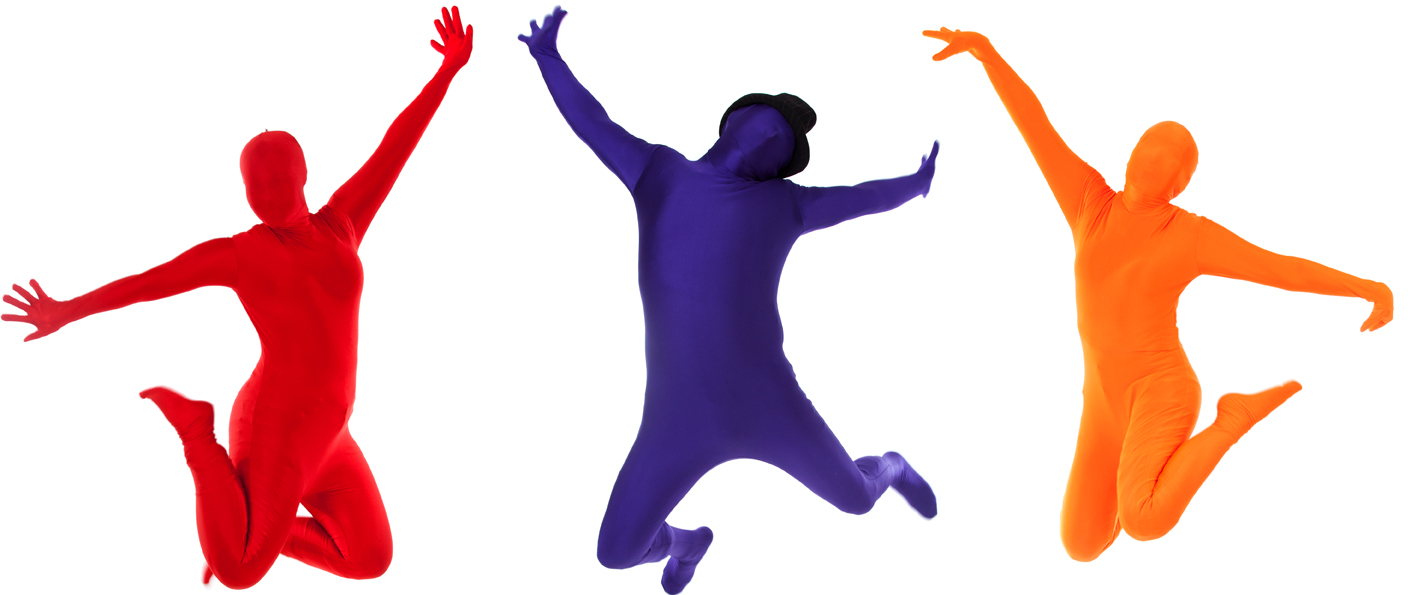 Diversity and Social Inclusion / Whose Body is this? Diversity and Social Inclusion / Whose Body is this? | |||||||||||||||||||||||||
| Developed by | AENAO | |||||||||||||||||||||||||
| Duration | 90 | |||||||||||||||||||||||||
| Energizers |  12 - Body spelling 12 - Body spelling Teacher asks students to write their name in the air using different parts of their body, for example with the hand/leg/elbow/nose. Optional: If time allows teacher asks to the class to spell out some words reproducing the letters with their bodies. Students can collaborate all together or can create different groups. | |||||||||||||||||||||||||
| Relaxing Exercises |  2 - Progressive muscle relaxation 2 - Progressive muscle relaxation To release tension from head to toe, students are asked to close their eyes (if comfortable) and focus on tensing and relaxing each muscle group for two to three seconds each. The teacher guides the students; he/she asks them to start with the feet and toes, then move up to the knees, thighs, rumps, chest, arms, hands, neck, jaw, and eyes—all while maintaining deep, slow breaths. Kelly Roper | |||||||||||||||||||||||||
| Objectives |
| |||||||||||||||||||||||||
| Preparation |
Large papers (i.e. flipcharts stuck together with paper tape or blue tack), markers, newspapers, magazines, scissors, glue. Optional: old pieces of fabric/buttons, yarn | |||||||||||||||||||||||||
| Introduction | Like everything in life, body is one of nature’s diversity. If we were all similar, nature would be boring! | |||||||||||||||||||||||||
| 119 | ||
 | ||
| Methodology | NFE Tool Artistic creation (collage, drawing), team work, discussion. NFE tool inspired by Compasito http://www.eycb.coe.int/compasito/ (Nancy Flowers, 2009, pp. 53-55).
| |
| Reflection | Teacher asks the following questions in the plenary:
(20’) | |
| Notes | ||
| Digital Resource | ||
| 120 | ||||||||||||||||||||||||||||||||||||||
 | ||||||||||||||||||||||||||||||||||||||
| 17 |  Diversity and Social Inclusion / Social Inclusion and Sustainable Development Diversity and Social Inclusion / Social Inclusion and Sustainable Development | |||||||||||||||||||||||||||||||||||||
| Developed by | Prosveta | |||||||||||||||||||||||||||||||||||||
| Duration | 70 min. | |||||||||||||||||||||||||||||||||||||
| Energizers |  16 - Back to back 16 - Back to back Participants find a pair of similar size and weight. They sit on the floor, back to back with their pair. They hold their arms. They have to get up, while keeping the arms and backs together. After trying once-twice with their pair they switch pairs. They can repeat this process with other pairs for a few times. | |||||||||||||||||||||||||||||||||||||
| Relaxing Exercises |  12 - Warm back 12 - Warm back A piece of paper is stuck to each student’s back and they are given a pen. The paper is already prepared. Each piece of paper says: “I like………..”. Slow music is played and the students walk around and write characteristics about the person whom they like on the paper. Each child is allowed to look at the paper at the end and take it home. | |||||||||||||||||||||||||||||||||||||
| Objectives | Students will:
| |||||||||||||||||||||||||||||||||||||
| Preparation |
| |||||||||||||||||||||||||||||||||||||
| Introduction | “Education for Sustainable Development empowers learners to take informed decisions and responsible actions for environmental integrity, economic viability and a just society, for present and future generations, while respecting cultural diversity.” | |||||||||||||||||||||||||||||||||||||
| Methodology |
NFE tool: Snowballing Digital tool: D&SI_17_1 10’
| |||||||||||||||||||||||||||||||||||||
| Reflection | Guided reflection: 10’ 1. How did you feel during the training? Students go to one of the space marked with the feeling which represents their overall emotion regarding the training activity as a whole: 1. Interested ; 2. Content; 3. Confused; 4. Surprised; 5. Excited; 6. Happy; 7. Embarrassed; 8. Nervous. When students split in the groups, they share in the group why they chose this feeling. After that one representative of the group reports to the other groups the why the students from his group have chosen the corresponding feeling. Flashcards with the feelings 2. Which training activity did you like most? (1. Learning about sustainable development OR 2. "My Dream school regarding social inclusion" activities) - mentimeter voting. 3. How can you make use of what you have learned in the training? | |||||||||||||||||||||||||||||||||||||
| Notes | ||||||||||||||||||||||||||||||||||||||
| Digital Resource | D17_1 Video about sustainable development - activity 1 D17_2 Interactive presentation - to be used with activities 2 to 5 D17_3 - how to put subtitles in different languages on YouTube videos (step-by-step guide) | |||||||||||||||||||||||||||||||||||||
| 121 | ||||||||||||||||||||||||||||||||||||||
 | ||||||||||||||||||||||||||||||||||||||
| 18 |  Diversity and Social Inclusion / Climate change and poverty Diversity and Social Inclusion / Climate change and poverty | |||||||||||||||||||||||||||||||||||||
| Developed by | AENAO | |||||||||||||||||||||||||||||||||||||
| Duration | 75 min | |||||||||||||||||||||||||||||||||||||
| Energizers |  15 - Animal roundup 15 - Animal roundup The teacher tells to the class to silently think of an animal. Then he/she tells to the group that without talking, they need to arrange themselves on a line from largest to smallest animals. Group members can only make gestures and the noise of their animal. After they have finished, teacher ask to the students to say the animal they were supposed to be to see if the order is correct. | |||||||||||||||||||||||||||||||||||||
| Relaxing Exercises |  8 - Seasons of the year 8 - Seasons of the year All players sit in a circle, but not too close to one another. The teacher moves like a plant during the seasons of the year. Winter: the plants are small, weak and are crunched together on the ground. Spring: through the stronger sunshine, the plants grow slowly and slowly rise. Summer: through the warm sun, the plants slowly open their arms, the flowers open their blooms are stand up straight. Autumn: the sun rays become weaker. The plants begin to slowly shrivel, the blooms and leaves begin to fall away. | |||||||||||||||||||||||||||||||||||||
| Objectives | To become aware of climate change and its consequences | |||||||||||||||||||||||||||||||||||||
| Preparation |
https://www.coe.int/en/web/ https://www.science.org.au/ https://www.onedayswages.org/
| |||||||||||||||||||||||||||||||||||||
| Introduction | “We will never end poverty if we don’t tackle climate change.” Jim Yong Kim | |||||||||||||||||||||||||||||||||||||
| Methodology | NFE Tool Brainstorming, Role play
A. Narrator B. Leader of the group C. 4-6 members of the group – depending on how many students wish to participate.(5’) 3. Students are studying the scenario (D18 Scenarion.pdf) and prepare for the play. They also assign an object (or prepare something quickly) as a time machine.(30’) * While students are preparing for the play, the rest of the students are preparing and/or assisting with their speech to the governor’s with the guidance of the teacher. 4. Students are performing.(15’) | |||||||||||||||||||||||||||||||||||||
| Reflection | Teacher asks questions to students in the plenary:
(15’) | |||||||||||||||||||||||||||||||||||||
| Notes | ||||||||||||||||||||||||||||||||||||||
| Digital Resource | http://me-you-us.eu/atividades/digital/643/643_An_alternate_future.mp4 | |||||||||||||||||||||||||||||||||||||
| 122 | ||||||||||||||||||||||||||||||||||||||
 | ||||||||||||||||||||||||||||||||||||||
| 19 |  Diversity and Social Inclusion / Phobias and isms Diversity and Social Inclusion / Phobias and isms | |||||||||||||||||||||||||||||||||||||
| Developed by | IPSantarém: Ana Da Silva | Ana Torres | Maurício D | |||||||||||||||||||||||||||||||||||||
| Duration | 45 m | |||||||||||||||||||||||||||||||||||||
| Energizers |  6 - Keep walking 6 - Keep walking The teacher instructs the students to walk in different manners covering the whole rook, i.e. walk like you are very happy, walk like a very heavy elephant, walk like you are 80 years old, walk like it’s raining cats and dogs, walk like a toddler, etc. | |||||||||||||||||||||||||||||||||||||
| Relaxing Exercises |  5 - Use a word that describes their feelings/thoughts 5 - Use a word that describes their feelings/thoughts Students are asked to close their eyes (if comfortable) for a minute and think of a word that describes their feelings/thoughts after finishing the resource. Then the students open their eyes and one by one say their word to the classroom | |||||||||||||||||||||||||||||||||||||
| Objectives | To understand the concepts of "difference" and "diversity"; To distinguish the concepts of racism, xenophobia, homophobia and others proposed in this activity, relating them to the concept of diversity; Identify ways of peaceful coexistence, respecting differences. | |||||||||||||||||||||||||||||||||||||
| Preparation | Preparation: The facilitator can previously search for definitions of racism, xenophobia, homophobia, etc., that can be used to support his/her own reflection on the matter, or read the document suggested below. Suggested Reading: Committed to making a difference. Racism, antisemitism, xenophobia, and intolerance and their impact on young people in Europe, Symposium Report, edited by Ingrid Ramberg, 2005, available at https://rm.coe.int/committed-to-making-a-difference-eng/1680902e40. Tips: Depending on the characteristics of the group, the facilitator can mark the time limits of each step of the challenge of this activity by tapping 2 palms, playing a drum or a horn. Materials: Computer, video projector, internet, sheets of paper, pens. Digital tool: infographic about differences and similarities between the concepts "difference" and "diversity": https://www.canva.com/design/DADaN0ypzow/61ocmnKROTM0tDKid7qJCQ/edit | |||||||||||||||||||||||||||||||||||||
| Introduction | The immigration resulting from globalisation and higher interdependence between nations enhances cultural diversity of minority groups and communities. Faced with the huge influx of refugees fleeing the war in Syria and other countries where the situation is unstable, Europe has to deal with a major humanitarian tragedy, and several European countries are refusing to accept refugees. So, it is even more important today to promote inclusion and actions against intolerance, xenophobia, racism and other isms, while valuing respect for cultural and social diversity. | |||||||||||||||||||||||||||||||||||||
| Methodology | The facilitator approaches the concepts of difference and diversity, explaining the differences between the two by using the presentation of the digital infographic mentioned above. Remind the participants that the activity is a challenge and they must pay attention to the explanation. (5 minutes) Then briefly explains that the challenge that he/she will propose next is time limited and divides the group in small groups of 3 elements, delivering to each group a blank A5 size sheet of paper and a pen, as well as the challenge document shown below (printed in A4 size paper) that contains the solutions of a crossword puzzle and the steps of the challenge to be realized. (5 minutes) CHALLENGE DOCUMENT TO BE GIVEN TO EACH GROUP Before starting, your group should read, in low voice, (3 minutes) all the following steps. You can start responding to the challenge only after knowing all you have to do, so you must read all this document before starting.
2. Search in on-line dictionaries, encyclopedias and/or articles for definitions of each word. Because the challenge is time limited, you should decide which member of the group looks for each word. Each member of the group must take note of the definition and bibliographic source that he/she used (writing down at least the type of source and the link of access). (5 minutes) 3. Read, in a low voice, all the word definitions (each group member reads the words and matching definitions that he/she searched for). Reflect, in the group, on the characteristics that all the words have in common and make a list of these characteristics on the front of the small sheet of paper (A5 size) (5 minutes). 4. Explain how these characteristics relate to the concept of diversity, based on the digital infographics that was shown before the challenge, registering the explanation on the back of the A5 paper (5 minutes). 5. Identify 2 forms of action to promote, in the community, a more peaceful coexistence among people (5 minutes). 6. Change the small paper with the one from another group and read (in your group) the one from the other group (2 minutes) At the end of the activity, the participants can be encouraged to create a crossword puzzle (individually or in small groups), on the theme of peaceful coexistence, using the Online Crossword Puzzle Maker, available in https://www.puzzle-maker.com/CW You can also invite the class to challenge the whole school community to solve the crossword puzzle proposed here, as well as those created by the working groups with the Online Crossword Puzzle Maker. | |||||||||||||||||||||||||||||||||||||
| Reflection | Reflection: (10 minutes) The facilitator asks the participants to share and reflect on the forms of action to promote a more peaceful coexistence among people that they suggested. Then asks them if they can commit themselves to carry on some of these forms of action in their local/school community. Other digital resources: dictionaries, encyclopedias, articles and other sources of information to be searched by the participants. | |||||||||||||||||||||||||||||||||||||
| Notes | Follow-up After getting to know the definitions of the -phobias and -isms from activity 1, students can be asked to look up for imajes that illustrate the words and create games making use of https://wordwall.net/ (quiz template) with the image and 4 possible answers choosing from the -phobias and -isms from activity 1. This encourages students' understanding of the terms and boost their creativity. | |||||||||||||||||||||||||||||||||||||
| Digital Resource | ||||||||||||||||||||||||||||||||||||||
| 123 | ||||||||||||||||||||||||||||||||||||||
 | ||||||||||||||||||||||||||||||||||||||
| 20 |  Diversity and Social Inclusion / Diversity and Identities Diversity and Social Inclusion / Diversity and Identities | |||||||||||||||||||||||||||||||||||||
| Developed by | SAN University of applied sciences | |||||||||||||||||||||||||||||||||||||
| Duration | 75 min. | |||||||||||||||||||||||||||||||||||||
| Energizers |  9 - Balloon pop 9 - Balloon pop Have everyone form a circle. Instruct the participants to put one piece of information about themselves, e.g. I have 2 sisters, or my mother is called Samy, on a small slip of paper, fold it, and put it in a blown up balloon. Throw the balloons in the middle of the circle and then have people take turns popping a balloon, reading the piece of paper, and guessing to whom the information applies. Participants could wander round the room asking ‘yes/ no’ questions to the other participants but not exactly the statement from the paper slip, e.g. they cannot ask “Have you got 2 sisters? But could ask “Have you got sisters?” and then “Have you got more than 1 sister?’, “Have got less than 3 sisters?”, etc. Game finishes when all participants have identified the author of the paper slip they have. *Note: this exercise should be used if there is enough time. | |||||||||||||||||||||||||||||||||||||
| Relaxing Exercises |  5 - Use a word that describes their feelings/thoughts 5 - Use a word that describes their feelings/thoughts Students are asked to close their eyes (if comfortable) for a minute and think of a word that describes their feelings/thoughts after finishing the resource. Then the students open their eyes and one by one say their word to the classroom | |||||||||||||||||||||||||||||||||||||
| Objectives |
| |||||||||||||||||||||||||||||||||||||
| Preparation | Suggested reading: https://www.differencebetween.com/difference-between-personal-identity-and-vs-social-identity/ Tips: What is very important here, is to help to understand the balance between the personal and social dimension of life. Who we are, is the average of our personal features and what is derived from the culture we live in. It is important, that before this lesson students should have at least basic knowledge what is culture and about its multidimensional nature. One of the aims of this lesson should be the merge of the personal and social identity at the age when the defiance of the social norms and patterns occurs. Materials: Papers, color markers Digital resources: presentation about identities (DSI_20) | |||||||||||||||||||||||||||||||||||||
| Introduction | We are individuals. But this individuality is being built gradually. It is not like we wake up some day and decide to be someone. So how it becomes that we are who we are? And what can be similar and different among all of us? | |||||||||||||||||||||||||||||||||||||
| Methodology | NFE Tools: Mind map, brainstorming, elements of blue skies thinking (in reflection about 4)
Reflection: There are a lot of types of features that makes us and our personality, but these features are mostly common, so we can easily find someone with the same feature? 15’
| |||||||||||||||||||||||||||||||||||||
| Reflection |
| |||||||||||||||||||||||||||||||||||||
| Notes | Extra information on the topic for the teacher. | |||||||||||||||||||||||||||||||||||||
| Digital Resource | Work sheets DSI_20 | |||||||||||||||||||||||||||||||||||||
| 124 | ||||||||||||||||||||||||||||||||||||||
 | ||||||||||||||||||||||||||||||||||||||
| 21 |  Diversity and Social Inclusion / Careers for everyone Diversity and Social Inclusion / Careers for everyone | |||||||||||||||||||||||||||||||||||||
| Developed by | Altius Foundation | |||||||||||||||||||||||||||||||||||||
| Duration | 80 | |||||||||||||||||||||||||||||||||||||
| Energizers |  20 - Chief of clan 20 - Chief of clan Everyone stands in a circle. One participant closes his/her eyes or steps out of the room. He/She will have to guess who is the chief of the clan. One participant volunteers to be the secret Chief (quietly, so the "guesser" can't hear anything). The chief begins an action such as snapping fingers, patting the tummy, or slapping knees, and everyone in the circle imitates him/her. The guesser returns to the room and tries to figure out who the chief is. As the guesser looks around, the chief changes the action avoiding being detected. | |||||||||||||||||||||||||||||||||||||
| Relaxing Exercises | | |||||||||||||||||||||||||||||||||||||
| Objectives | Main goal: To form skills to identify personal and social problems associated with the risk of social exclusion and professional maladaptation. Aims:
Development of social skills for cooperation and formation of positive attitude towards everyone's career development. | |||||||||||||||||||||||||||||||||||||
| Preparation | Materials required:
Digital resources:
| |||||||||||||||||||||||||||||||||||||
| Introduction | Happiness does not come down to the possession of money; it is in the joy of work and achievement. - Franklin Roosevelt The right to work is a fundamental human right. According to the Universal Declaration of Man: • everyone has the right to work and to a free choice of career / profession / job; • everyone, without any discrimination, is entitled to equal pay for equal work; • еvery person who works has the right to social protection. | |||||||||||||||||||||||||||||||||||||
| Methodology |
| |||||||||||||||||||||||||||||||||||||
| Reflection | Suggested questions to be discussed with the students: 1. What are the personal strengths that you will use to achieve your career goals? 2. How did you feel while watching the video “Two Roma Worlds”? 3. Imagine talking to your family about your career / profession plans? What will you tell them? | |||||||||||||||||||||||||||||||||||||
| Notes | ||||||||||||||||||||||||||||||||||||||
| Digital Resource | ||||||||||||||||||||||||||||||||||||||
| 125 | ||||||||||||||||||||||||||||||||||||||
 | ||||||||||||||||||||||||||||||||||||||
| 22 | ||||||||||||||||||||||||||||||||||||||
| Developed by | ISJ Dolj | |||||||||||||||||||||||||||||||||||||
| Duration | 90’ | |||||||||||||||||||||||||||||||||||||
| Energizers |  8 - Find another seat: 8 - Find another seat: Have the students sit on chairs in a circle, with the number of chairs being one less than the number of students. The student without a chair stands in the middle and tells their name. Then the student calls out a characteristic or a colour, or type of clothing, e.g. “Everyone wearing orange!”. All participants who are wearing orange must get up and find another seat, but not the one immediately to their right or left. The student in the middle races to find a seat and the person left standing becomes the next caller in the middle. | |||||||||||||||||||||||||||||||||||||
| Relaxing Exercises |  4 - Visualization using color/soothing sound 4 - Visualization using color/soothing sound Facilitator asks the students to imagine a favorite color that makes them feel peaceful and safe. They keep their imagine taking in that color with each breath and sending it throughout their entire body as they exhale. They continue until they visualize being filled with their special, relaxing color. The same exercise can be performed using soothing sound or aroma. Also, it is more effective if relaxing music is used. Kelly Roper | |||||||||||||||||||||||||||||||||||||
| Objectives |
| |||||||||||||||||||||||||||||||||||||
| Preparation |
| |||||||||||||||||||||||||||||||||||||
| Introduction | In today's increasingly globalized society, the circulation of information and, implicitly, of opinions is made with great ease. When the freedom of opinion is very large there is the possibility of abusing this right. Hate speech promotes aggression towards some social categories. In the hate speech, some people are often considered to be guilty of serious problems faced by society (the scapegoats). Hate speech is based on preconceived ideas about different groups of people. Promoting preconceived ideas through hate speech in a tense social context can generate discrimination, segregation and even persecution or social conflict. | |||||||||||||||||||||||||||||||||||||
| Methodology | NFE methods: debate, team work, text analysis.
| |||||||||||||||||||||||||||||||||||||
| Reflection | Students discuss the following questions:
| |||||||||||||||||||||||||||||||||||||
| Notes | ||||||||||||||||||||||||||||||||||||||
| Digital Resource | ||||||||||||||||||||||||||||||||||||||
| 126 | ||
 | ||
| Identity and Active Citizenship
| ||
| 127 | |||||||||||||||||||||||
 | |||||||||||||||||||||||
| 1 | 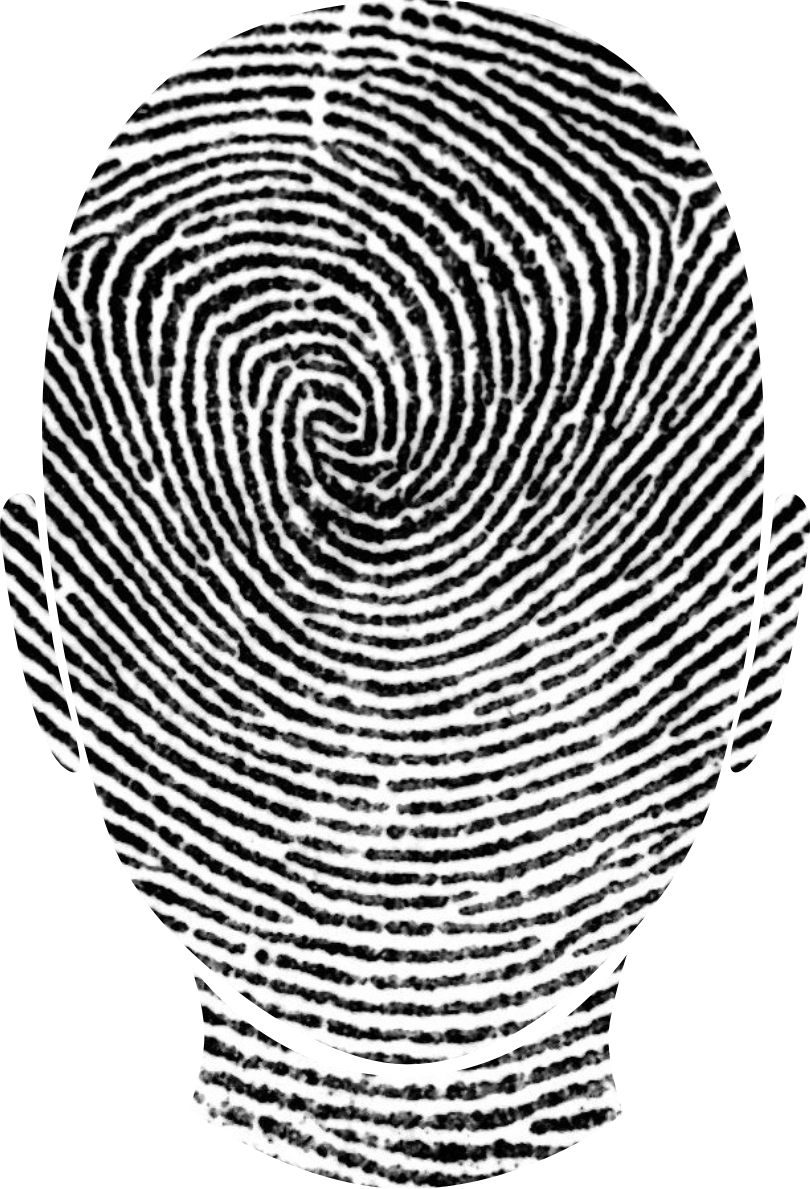 Identity and Active Citizenship / My identities – me as a person, me as a citizen Identity and Active Citizenship / My identities – me as a person, me as a citizen | ||||||||||||||||||||||
| Developed by | IP SANTAREM | ||||||||||||||||||||||
| Duration | 60 | ||||||||||||||||||||||
| Energizers |  17 - Toaster or Rock Star 17 - Toaster or Rock Star The group starts in a circle with one person in the center. The person in the center points at someone in the circle and says “Toaster” or “Rock star”.
| ||||||||||||||||||||||
| Relaxing Exercises |  2 - Progressive muscle relaxation 2 - Progressive muscle relaxation To release tension from head to toe, students are asked to close their eyes (if comfortable) and focus on tensing and relaxing each muscle group for two to three seconds each. The teacher guides the students; he/she asks them to start with the feet and toes, then move up to the knees, thighs, rumps, chest, arms, hands, neck, jaw, and eyes—all while maintaining deep, slow breaths. Kelly Roper | ||||||||||||||||||||||
| Objectives |
| ||||||||||||||||||||||
| Preparation | Suggested pedagogical resources: European Union rights and obligations (EC, 2016) http://ec.europa.eu/justice/discrimination/rights/index_en.htm Materials: White paper and red and blue markers Digital tools: Alphabet soup with words related to personality traits: http://othernessproject.eu/atividades/digital/33/sopa.swf True and false 10’ quiz about rights and obligations of European citizens - http://othernessproject.eu/atividades/digital/33/quiz1.html | ||||||||||||||||||||||
| 128 | ||
 | ||
| Introduction | Our person’s identity (unique characteristics that distinguish us from others) influences persons around us, our relations and ways of interacting with others in a territory (neighbourhood, local community, nation, union of nations, etc.) Many different factors can determine our personal identity. One of those is our personality, and it can change if we take active steps to become the person who we want to be. According to the definition of European Union citizenship, every person holding the nationality of a Member State is a citizen of the EU. Nationality is defined according to the national laws of that State. Citizenship of the Union is complementary to, but does not replace, national citizenship. EU citizenship implies some more rights and obligations (duties) than national ones. | |
| Methodology | NFE tools: Brainstorming, word game and quiz
| |
| Reflection | Guided reflection: 15’
| |
| Notes | ||
| Digital Resource | Alphabet soup with words related to personality traits: http://othernessproject.eu/atividades/digital/33/sopa.html True and false 10’ quiz about rights and obligations of European citizens - http://othernessproject.eu/atividades/digital/33/quiz1.html | |
| 129 | ||||||||||||||||||||||||||
 | ||||||||||||||||||||||||||
| 2 | 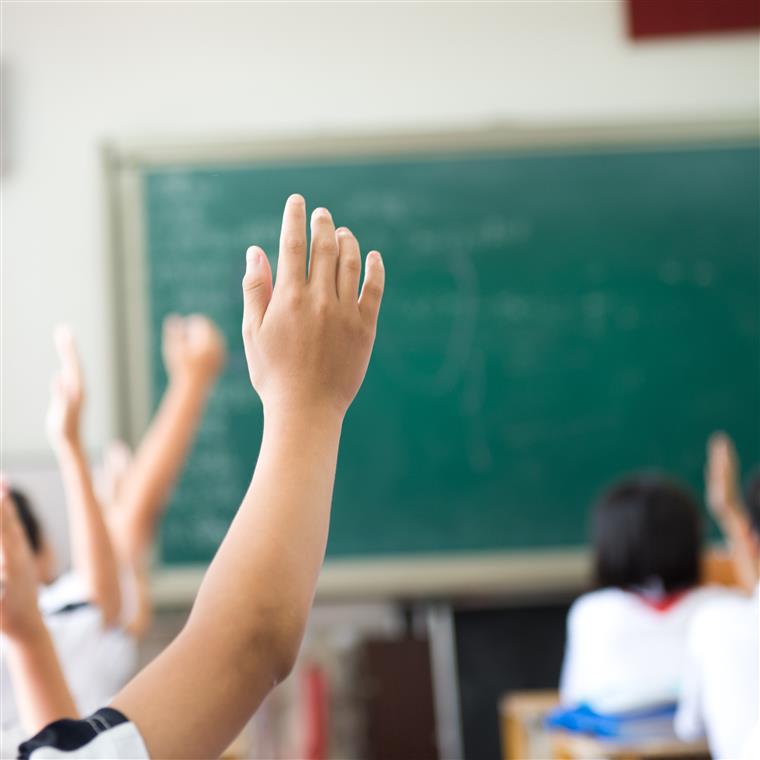 Identity and Active Citizenship / The school as a place for active citizenship Identity and Active Citizenship / The school as a place for active citizenship | |||||||||||||||||||||||||
| Developed by | IP SANTAREM | |||||||||||||||||||||||||
| Duration | 60 | |||||||||||||||||||||||||
| Energizers |  6 - Keep walking 6 - Keep walking The teacher instructs the students to walk in different manners covering the whole rook, i.e. walk like you are very happy, walk like a very heavy elephant, walk like you are 80 years old, walk like it’s raining cats and dogs, walk like a toddler, etc. | |||||||||||||||||||||||||
| Relaxing Exercises |  14 - Give me your energy 14 - Give me your energy The students stand in a circle. The teacher starts, pretending he/she is holding a ball on the hands and passing it to the student on his/her right; this one do the same, until the ball comes back to the teacher. The ball needs to be passed in a gentle way, as it is very precious. At the second round, the teacher passes the ball to students in another side of the circle, making a gesture and a noise. The students will do the same until everyone will have touched the ball at least once. The ball can be passed in any way (in form of kick, kiss…), pretending it becomes bigger or smaller depending on the will of the students. | |||||||||||||||||||||||||
| Objectives |
| |||||||||||||||||||||||||
| Preparation | Tips:
Materials:
Digital tool:
| |||||||||||||||||||||||||
| Introduction | Although students, teachers and other school staff play different roles in the school, they all have the responsibility of promoting well-being and peaceful coexistence among all. They can be (or not) actively engaged in this citizenship challenge, analysing their practices and actions in the light of education for development and citizenship. | |||||||||||||||||||||||||
| 130 | ||
 | ||
| Methodology | NFE tool: role play.
| |
| Reflection |
| |
| Notes | ||
| Digital Resource | Video To do or not to do: http://othernessproject.eu/atividades/digital/34/Todoornottodo.mp4 | |
| 131 | |||||||||||||||||||||||
 | |||||||||||||||||||||||
| 3 | 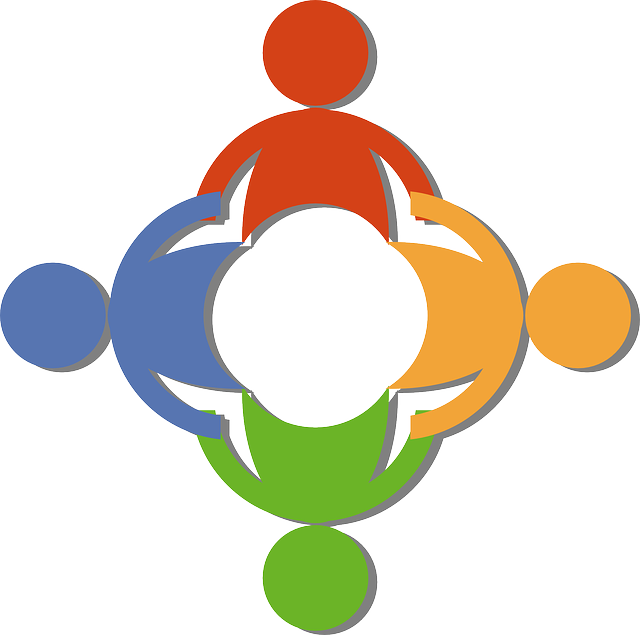 Identity and Active Citizenship / Me as a citizen of the local community Identity and Active Citizenship / Me as a citizen of the local community | ||||||||||||||||||||||
| Developed by | IP SANTAREM | ||||||||||||||||||||||
| Duration | 75 | ||||||||||||||||||||||
| Energizers |  8 - Find another seat: 8 - Find another seat: Have the students sit on chairs in a circle, with the number of chairs being one less than the number of students. The student without a chair stands in the middle and tells their name. Then the student calls out a characteristic or a colour, or type of clothing, e.g. “Everyone wearing orange!”. All participants who are wearing orange must get up and find another seat, but not the one immediately to their right or left. The student in the middle races to find a seat and the person left standing becomes the next caller in the middle. | ||||||||||||||||||||||
| Relaxing Exercises |  3 - Guided breathing 3 - Guided breathing Teacher asks the students to close their eyes (if comfortable), inhale for a count of four, then exhale for a count of four (all through the nose, which adds a natural resistance to the breath). Then, with one hand on the chest and the other on the belly, the students can take a deep breath in through the nose and exhale through the mouth, ensuring this way that the diaphragm (not the chest) inflates with enough air to create a stretch in the lungs Jordan Shakeshaft | ||||||||||||||||||||||
| Objectives |
| ||||||||||||||||||||||
| Preparation | Suggested reading:
Tips:
Materials:
Digital tool: StoryJumper or other basic software for making ebooks. | ||||||||||||||||||||||
| 132 | ||
 | ||
| Introduction | Article 12 of the Convention on the Rights of the Child states the importance of assuring that the children who are capable of forming their own views have the right to express them freely in all matters affecting them. Opportunities for expressing the children’s views have to be provided and those views must be given due weight. The planning and functioning of a community affects the quality of life of its citizens. Children and Young people represent an important part of the population and have a right to take an active part in decisions that affect the well-being and well-functioning of their local community (neighbourhood, city, village). Teachers and community planners have the responsibility to promote opportunities for them to exercise this right of citizenship. | |
| Methodology | NFE tools: project planning and e-book creation. Preparation:
Activity The community as I would like it to be:
Category 1: What can be done soon (with students’ contribution), Category 2: What can be done (with student’s contribution) under certain conditions that seem feasible, Category 3: What doesn’t seem feasible at the moment. 10’
5. The teacher guides the reflection suggested below 10’ | |
| 133 | ||
 | ||
| Reflection |
| |
| Notes | ||
| Digital Resource | StoryJumper (https://www.storyjumper.com) or other basic software for making ebooks. | |
| 134 | |||||||||||||||||||||||
 | |||||||||||||||||||||||
| 4 |  Identity and Active Citizenship / The active citizen knows the public institutions which are important for citizenship activities Identity and Active Citizenship / The active citizen knows the public institutions which are important for citizenship activities | ||||||||||||||||||||||
| Developed by | IP SANTAREM | ||||||||||||||||||||||
| Duration | 60 | ||||||||||||||||||||||
| Energizers |  11 - Alphabetical order 11 - Alphabetical order Students make a circle with the chairs, take off their shoes and get on the chairs (one per person - the circle needs to be as close as possible). Standing on the chairs and just moving from one to another one without getting off, students have to arrange themselves in alphabetical order according to their name. As soon as they are ready, teacher will check if they are right; if not they continue until they are right. | ||||||||||||||||||||||
| Relaxing Exercises |  4 - Visualization using color/soothing sound 4 - Visualization using color/soothing sound Facilitator asks the students to imagine a favorite color that makes them feel peaceful and safe. They keep their imagine taking in that color with each breath and sending it throughout their entire body as they exhale. They continue until they visualize being filled with their special, relaxing color. The same exercise can be performed using soothing sound or aroma. Also, it is more effective if relaxing music is used. Kelly Roper | ||||||||||||||||||||||
| Objectives |
| ||||||||||||||||||||||
| Preparation | Suggested reading:
http://europa.eu/about-eu/institutions-bodies/index_en.htm Tips:
Materials:
Digital tool: Animated movie on local governance, like Once upon a time, local democracy - http://othernessproject.eu/atividades/digital/36/Once upon a time, local democracy.mp4 | ||||||||||||||||||||||
| 135 | ||
 | ||
| Introduction | Everyone can take part and action in the process of social, cultural, technological, economical change, practicing citizenship individually or collectively, for more equality, social justice, democracy, etc. For that, it’s crucial to know and search for public sector institutions and governmental structures. Local authorities are territorial authorities, with representative bodies that aim to pursue the interests of citizens. The members of local authorities are usually directly elected by citizens who are registered in a particular territory. That’s one of the reasons why local public institutions are the closest to citizens. Therefore, to promote active citizenship, students should get acquainted with local public institutions. | |
| Methodology | NFE tool: organogram creation of the structure of local government and interaction with local representatives.
| |
| Reflection |
The teacher can handle information on national and European public institutions for active citizenship. For EU institutions and other bodies, check the suggested reading above. | |
| Notes | ||
| Digital Resource | Animated movie on local governance, like Once upon a time, local democracy: http://othernessproject.eu/atividades/digital/36/Once upon a time, local democracy.mp4 | |
| 136 | |||||||||||||||||||||||
 | |||||||||||||||||||||||
| 5 |  Identity and Active Citizenship / We debate, We decide (Active citizenship and the rule of law) Identity and Active Citizenship / We debate, We decide (Active citizenship and the rule of law) | ||||||||||||||||||||||
| Developed by | CSC DANILO DOLCI | ||||||||||||||||||||||
| Duration | 120 min | ||||||||||||||||||||||
| Energizers |  3 - Amoeba 3 - Amoeba An evolution game! Everyone starts off as an amoeba, with the purpose of evolving to a human. All students walk around acting like an amoeba and when they meet with another amoeba, they play one round of rock/paper/scissors. Whoever wins evolves into a worm. When two worms meet they play again rock/paper/scissors and whoever wins turns into a wasp, but whoever loses goes back to becoming an amoeba. This continues until one becomes human. The evolution stages are: amoeba à worm à wasp à chicken à monkey à human. | ||||||||||||||||||||||
| Relaxing Exercises |  9 - Lion's breath 9 - Lion's breath Lion’s breath is a playful way to release and relax into more peaceful feelings. The trainer tells students that they are going to do a breath called the lion’s breath in order to let go of feelings or thoughts we no longer want. This breath is very helpful in getting those ideas out of us and pushing them far away. Instructions
| ||||||||||||||||||||||
| Objectives |
| ||||||||||||||||||||||
| Preparation | Materials
Suggested Reading
| ||||||||||||||||||||||
| 137 | ||
 | ||
| Introduction | This activity is based on the technique of the Oxford-style debate, adapted for children. Students will be engaged in a mock decision-making process that allows them to explore a topic related to democracy and the law in their country or in their school, apply critical thinking skills in a real-life-case scenario, share their opinions with others while respecting others’ views. Derived from the Oxford Union debating society of Oxford University (The Oxford Union), "Oxford-style" debating is a competitive debate format featuring a sharply framed motion that is proposed by one side and opposed by another. | |
| Methodology | NFE Tool Oxford-Style Debate
DT: Democracy - A short introduction - by MinuteVideos available at: https://www.youtube.com/watch?v=u6jgWxkbR7A Voting paddles (thumb up and thumb down) - to be printed | |
| 138 | ||
 | ||
| Reflection | 1. Strips of paper are distributed to students, who are asked to write on separate pieces of paper their views on the topics below with regard to the activities they completed as part of the project. It is not necessary for them to write down their names. The topics for evaluation can be the following: • How I felt about our activities • What I found to be interesting about our activities • My positive views about our activities • My negative views about our activities • My recommendations 2. Students are asked to put their papers into a Box according to subject. (For example, starting with “I felt”…). The teacher can prepare previously different little boxes using packaging or colors boxes or similar or he/she can ask students to put the papers creating different little piles. 3. Students are asked to take turns picking a strip of paper from the box and reading out loud the statement written on it. If necessary, the viewpoint presented is discussed. The teacher can encourage discussion by asking questions. It is necessary to ensure that everyone’s opinions are read out. (15’) | |
| Notes | ||
| Digital Resource | Video http://othernessproject.eu/atividades/digital/37/Demo.mp4 | |
| 139 | ||||||||||||||||||||||||||||||||
 | ||||||||||||||||||||||||||||||||
| 6 |  Identity and Active Citizenship / Citizens of Europe (Active citizens of United Europe) Identity and Active Citizenship / Citizens of Europe (Active citizens of United Europe) | |||||||||||||||||||||||||||||||
| Developed by | CSC DANILO DOLCI | |||||||||||||||||||||||||||||||
| Duration | 45 | |||||||||||||||||||||||||||||||
| Energizers |  6 - Keep walking 6 - Keep walking The teacher instructs the students to walk in different manners covering the whole rook, i.e. walk like you are very happy, walk like a very heavy elephant, walk like you are 80 years old, walk like it’s raining cats and dogs, walk like a toddler, etc. | |||||||||||||||||||||||||||||||
| Relaxing Exercises |  18 - Making room 18 - Making room Participants are asked to raise their arms with palms facing up, imagining that they are pushing up the ceiling and are asked do a lot of strength in that direction to increase the space of the room where they are. Then they are asked to turn the arms down with palms facing down thinking that they are pushing down the floor. They are asked to push away the walls turning their left arm and palm to the wall on their left and their right arm and palm to the wall that’s on their right. | |||||||||||||||||||||||||||||||
| Objectives |
| |||||||||||||||||||||||||||||||
| Preparation | Materials
| |||||||||||||||||||||||||||||||
| Introduction | The activity aim to draw students’ attentions about European Union making students’ know more through a challenging game. | |||||||||||||||||||||||||||||||
| Methodology | NFE Tool : quiz
| |||||||||||||||||||||||||||||||
| Reflection | Teacher will stimulate the reflection in the plenary, using the questions below (15):
| |||||||||||||||||||||||||||||||
| 140 | ||
 | ||
| Notes | ||
| Digital Resource | Quiz - https://goo.gl/8JsA8C Powerpoint with answers http://othernessproject.eu/atividades/pdf/38_eu_in_slides_en.pdf | |
| 141 | ||||||||||||||||||||||||||
 | ||||||||||||||||||||||||||
| 7 |  Identity and Active Citizenship / Action for Change (Organizing campaigns for democratic involvement) Identity and Active Citizenship / Action for Change (Organizing campaigns for democratic involvement) | |||||||||||||||||||||||||
| Developed by | CSC DANILO DOLCI | |||||||||||||||||||||||||
| Duration | 80 min | |||||||||||||||||||||||||
| Energizers |  7 - Connecting eyes 7 - Connecting eyes Participants stand in a circle. Each person makes eye contact with another person across the circle. The two walk across the circle and exchange positions, while maintaining eye contact. Many pairs can exchange at the same time, and the group should try to make sure that everyone in the circle is included in the exchange. Tip: Begin by trying this in silence and then exchange greetings in the middle of the circle. Variations: If the teacher considers, knowing the class atmosphere, that some students might be left not participating, i.e. they try to make eye contact but nobody responds to them and they have no chance to move from their initial position, the moderator could divide the class in 2 groups and introduce a competitive element – after the activity each group will be marked on the ‘team spirit thermometer’ (which could be printed on a A4 paper and the teacher marks the degrees with a marker). The more people you have left not participating in the ‘eye contact’ activity – the lower the degrees to be marked on the thermometer. | |||||||||||||||||||||||||
| Relaxing Exercises |  2 - Progressive muscle relaxation 2 - Progressive muscle relaxation To release tension from head to toe, students are asked to close their eyes (if comfortable) and focus on tensing and relaxing each muscle group for two to three seconds each. The teacher guides the students; he/she asks them to start with the feet and toes, then move up to the knees, thighs, rumps, chest, arms, hands, neck, jaw, and eyes—all while maintaining deep, slow breaths. Kelly Roper | |||||||||||||||||||||||||
| Objectives |
| |||||||||||||||||||||||||
| Preparation | Materials
| |||||||||||||||||||||||||
| Introduction | The activity is aimed to help children to identify problems to be addressed in their local context as well as concrete strategies to change the situation, sensitize them to be actors of change, active citizens in their community. | |||||||||||||||||||||||||
| 142 | ||
 | ||
| Methodology | NFE Tool : Action Plan, based on (FS2C From School to Community)
DT: Action Plan to be printed (1 per group) Video "What is Active Citizens?" - British Council | |
| Reflection | Teacher will stimulate the reflection in the plenary, showing the Video and using the questions below (15):
| |
| Notes | If students face difficulties in choosing a topic to discuss, we suggest the teacher to stimulate students to find some interesting topic related to students' background, or any topic they are currently working on. | |
| Digital Resource | Video "What is Active Citizens?" - British Council http://othernessproject.eu/atividades/digital/39/WhatActiveCitizens.mp4 | |
| 143 | ||||||||||||||||||||||||||
 | ||||||||||||||||||||||||||
| 8 | 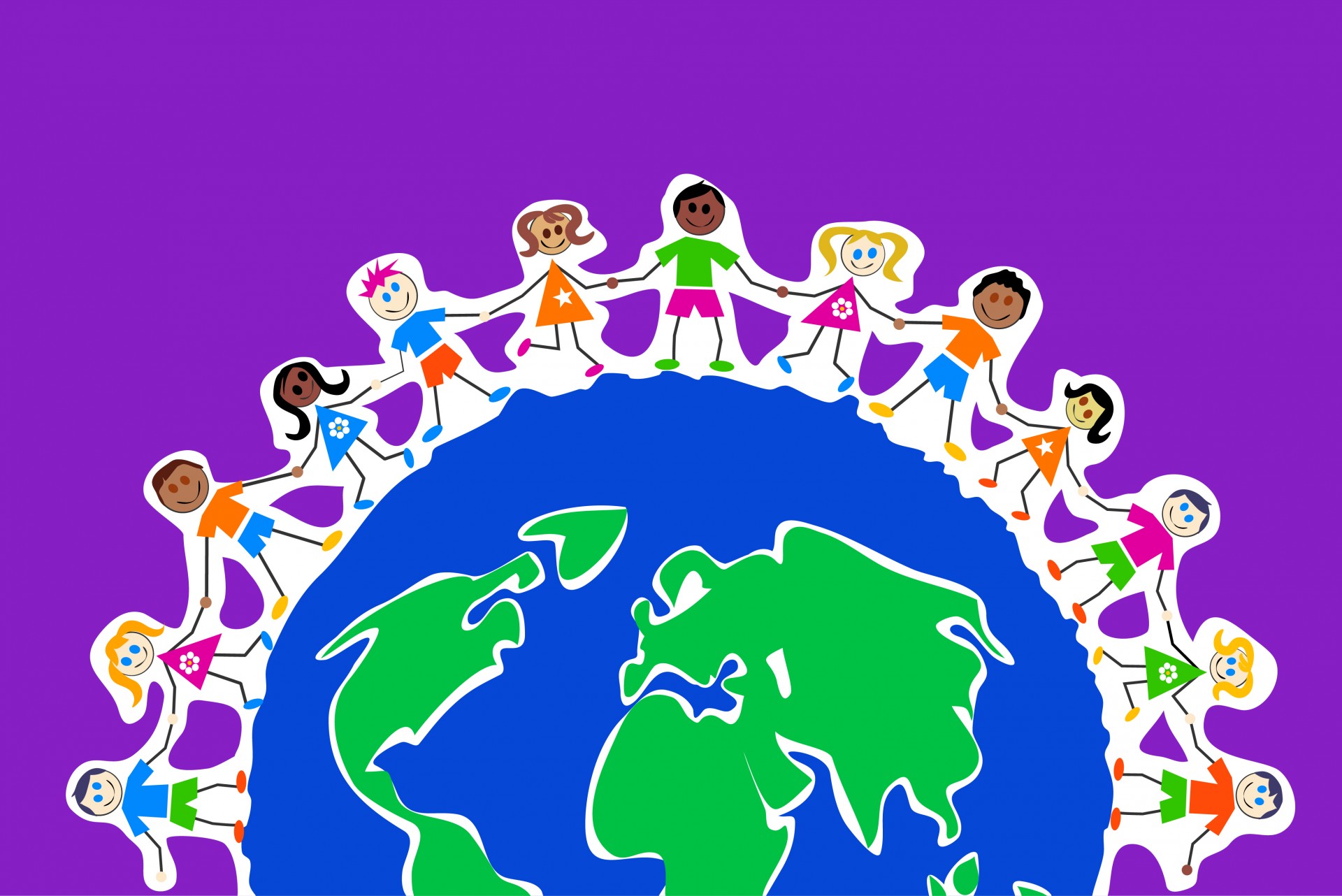 Identity and Active Citizenship / Save the Earth (Organizing campaigns for environment protection) Identity and Active Citizenship / Save the Earth (Organizing campaigns for environment protection) | |||||||||||||||||||||||||
| Developed by | CSC DANILO DOLCI | |||||||||||||||||||||||||
| Duration | 80 min | |||||||||||||||||||||||||
| Energizers |  15 - Animal roundup 15 - Animal roundup The teacher tells to the class to silently think of an animal. Then he/she tells to the group that without talking, they need to arrange themselves on a line from largest to smallest animals. Group members can only make gestures and the noise of their animal. After they have finished, teacher ask to the students to say the animal they were supposed to be to see if the order is correct. | |||||||||||||||||||||||||
| Relaxing Exercises |  7 - Strong as a tree 7 - Strong as a tree All students spread out in the room. With their feet firmly planted on the ground, they pretend they are trees that are slowly swaying back and forth with a breeze. The movements become stronger as a storm approaches. The students try to make their movements as strong as possible, but remember to keep their feet on the ground. Slowly the wind dies down and the trees can rest. | |||||||||||||||||||||||||
| Objectives | To sensitize students about environmental protection | |||||||||||||||||||||||||
| Preparation | Materials Papers, pens and crayons Tips The teacher can print the drops or make the students draw them. The teacher can change and/or adapt the question to the level of knowledge of the class regarding the topic. Suggested reading (National Institute of Environmental Health and Science) | |||||||||||||||||||||||||
| Introduction | The activity aims to draw students’ attentions about the risks of climate change and the importance of preserve the environment. | |||||||||||||||||||||||||
| 144 | ||
 | ||
| Methodology | NFE Tool Quiz Game
DT: Video “Save our World” drops to print | |
| Reflection | Teacher will stimulate the reflection in the plenary, using the questions below (15):
| |
| Notes | ||
| Digital Resource | Video “Save our World” http://othernessproject.eu/atividades/digital/40/SaveOurWorld.mp4 | |
| 145 | ||||||||||||||||||||||||||
 | ||||||||||||||||||||||||||
| 9 | 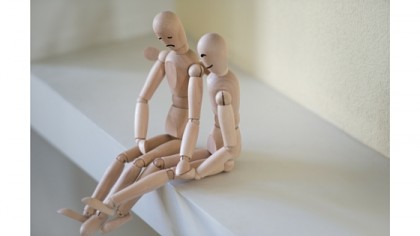 Identity and Active Citizenship / Organizing campaigns for support of people in need Identity and Active Citizenship / Organizing campaigns for support of people in need | |||||||||||||||||||||||||
| Developed by | AENAO | |||||||||||||||||||||||||
| Duration | 90 | |||||||||||||||||||||||||
| Energizers |  8 - Find another seat: 8 - Find another seat: Have the students sit on chairs in a circle, with the number of chairs being one less than the number of students. The student without a chair stands in the middle and tells their name. Then the student calls out a characteristic or a colour, or type of clothing, e.g. “Everyone wearing orange!”. All participants who are wearing orange must get up and find another seat, but not the one immediately to their right or left. The student in the middle races to find a seat and the person left standing becomes the next caller in the middle. | |||||||||||||||||||||||||
| Relaxing Exercises |  7 - Strong as a tree 7 - Strong as a tree All students spread out in the room. With their feet firmly planted on the ground, they pretend they are trees that are slowly swaying back and forth with a breeze. The movements become stronger as a storm approaches. The students try to make their movements as strong as possible, but remember to keep their feet on the ground. Slowly the wind dies down and the trees can rest. | |||||||||||||||||||||||||
| Objectives |
| |||||||||||||||||||||||||
| Preparation |
| |||||||||||||||||||||||||
| Introduction | A typical session (act) focuses on oppression or a problem. The structure of the act involves a Protagonist (the oppressed person) who is defeated or frustrated by the Antagonist (the oppressor). The character of the Antagonist could be multiple; i.e. many Antagonists can appear in the session. A typical session could also have many scenes (i.e more than two), where the scenes are represented to the audience by the Joker. The act is played once. Then it is played once more; this time the audience can interfere. What is the role of the audience? The audience while watching the Forum theatre become the Spect-Actors and can offer alternatives to the Protagonist. The second time that the act is played anyone from the audience can shout “Stop”, halt the action, take over the role and try out another solution. Anyone who wants to can have a go. Usually, the only role that is replaced is the Protagonist (even though there are few rules governing whether and when other characters can be substituted). All together (Spect-Actors), Protagonist and Antagonist “rehearse change”. The Joker introduces every scene (a theatrical play can have one or more scenes). | |||||||||||||||||||||||||
| 146 | ||
 | ||
| Methodology | NFE Tool Theatre of the oppressed (Susie MacDonald - Daniel Rachel), team work. DT is required to be watched before this exercise begins. 1. Teacher introduces the technique of the theatre. He/she explains further the DT and the technique and answers questions.
A new student A is enrolled in a new school. Student A faces the following difficulties (is oppressed) as described in the following scenes:
| |
| 147 | ||
 | ||
| Reflection | Teacher asks questions in the plenary:
(10’) | |
| Notes | ||
| Digital Resource | Animated Video | |
| 148 | ||||||||||||||||||||||||||
 | ||||||||||||||||||||||||||
| 10 |  Identity and Active Citizenship / How to Build your Dream School Identity and Active Citizenship / How to Build your Dream School | |||||||||||||||||||||||||
| Developed by | AENAO | |||||||||||||||||||||||||
| Duration | 90 | |||||||||||||||||||||||||
| Energizers |  6 - Keep walking 6 - Keep walking The teacher instructs the students to walk in different manners covering the whole rook, i.e. walk like you are very happy, walk like a very heavy elephant, walk like you are 80 years old, walk like it’s raining cats and dogs, walk like a toddler, etc. | |||||||||||||||||||||||||
| Relaxing Exercises |  3 - Guided breathing 3 - Guided breathing Teacher asks the students to close their eyes (if comfortable), inhale for a count of four, then exhale for a count of four (all through the nose, which adds a natural resistance to the breath). Then, with one hand on the chest and the other on the belly, the students can take a deep breath in through the nose and exhale through the mouth, ensuring this way that the diaphragm (not the chest) inflates with enough air to create a stretch in the lungs Jordan Shakeshaft | |||||||||||||||||||||||||
| Objectives |
| |||||||||||||||||||||||||
| Preparation |
http://speakupforsuccess.com/10135/how-are-ted-talks-and-business-presentations-different/ http://www.youtube.com/watch?v=wkfYzs2Qv-M
Flipchart/board, markers, camera | |||||||||||||||||||||||||
| Introduction | Healthy living means making positive choices that enhance your personal physical, mental and spiritual health. You make these choices when you are eating nutritiously, doing sports and respecting the environment. | |||||||||||||||||||||||||
| 149 | ||
 | ||
| Methodology | NFE Tool Brainstroming, team work, TeD talk
(a) Imagine that you are building a new school. Where would that be? (i.e. in the countryside, near the sea, in an island, in the city centre, in the forest, etc). (b) Now, describe how the facilities would look like. (i.e does it have a lot of buildings, big yard, sports fields, laboratories, big restaurant, etc) (c) Do you have time to eat your lunch? Where is that? What kind of food is it served?(i.e. students eat lunch at 12.00 in the restaurant of the school where healthy meals are served such as cooked meals/fruits/salads etc) (d) Are you doing any outdoor activities in your weekly programme? Where? What kind of activities? (i.e. hiking, playing sports, treasure hunting, etc) 3. Students are divided in four groups according to the categories described in step 1:
4. Students in each group will decide what is best for their school in terms of “Healthy living”. They can decide whether they will use what is written when they brainstormed about their school or add new elements. They will prepare a campaign similar to TED talk. TED talks should be 2-3’ per group. 5. Presentation of TED talks. Optional: TED talks can be filmed and uploaded to website (15’) DT’s 1. Animated Video & 2. https://www.ted.com/talks/matt_cutts_try_something_new_for_30_days#t-12500 | |
| Reflection | Teacher asks students in the plenary the following questions:
(10’) | |
| Notes | ||
| Digital Resource | Animated Video, Video (Ted Talk) https://vimeo.com/170398308 | |
| 150 | ||||||||||||||||||||||||||
 | ||||||||||||||||||||||||||
| 11 | 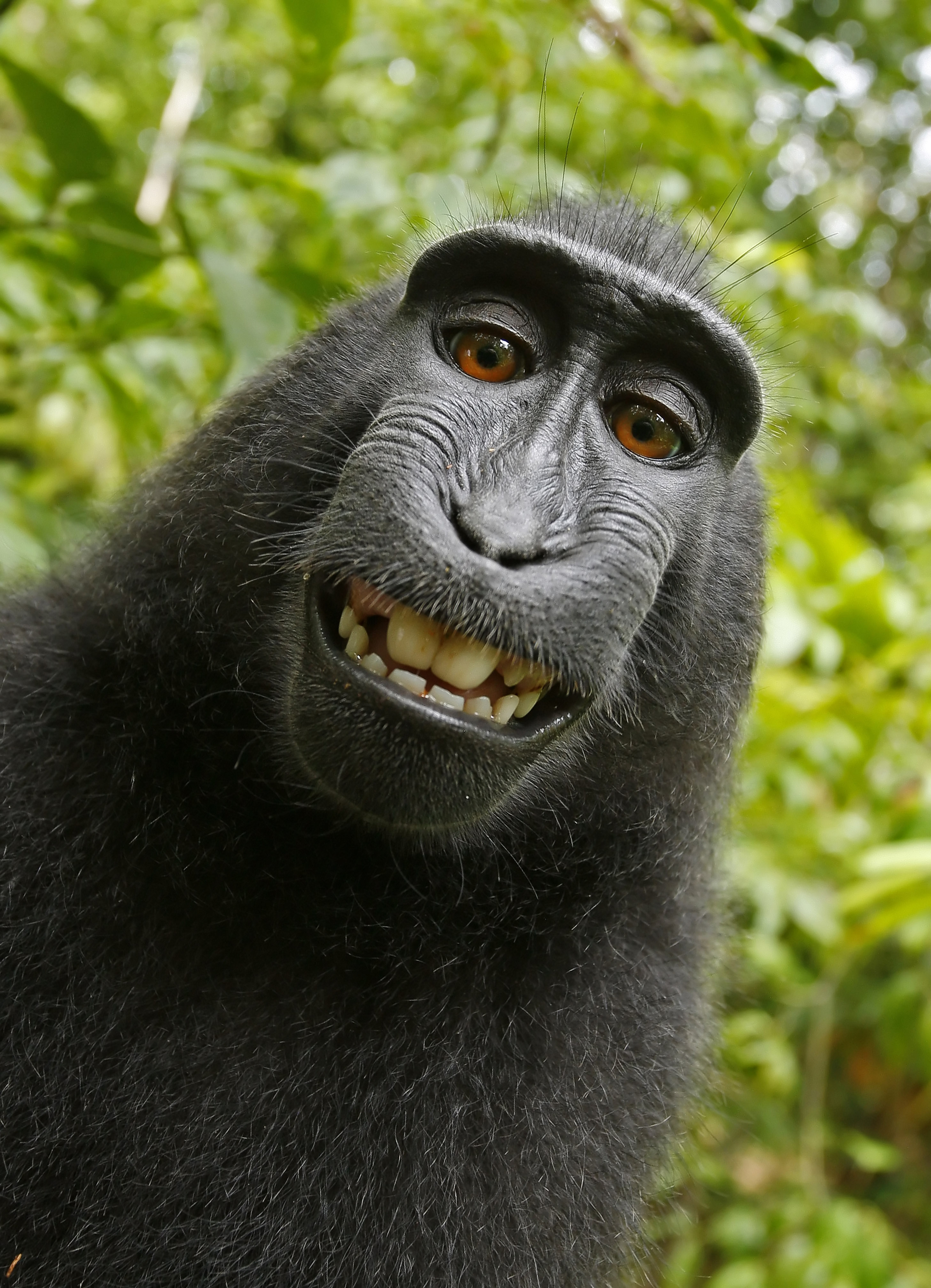 Identity and Active Citizenship / Organizing campaigns for combatting violence Identity and Active Citizenship / Organizing campaigns for combatting violence | |||||||||||||||||||||||||
| Developed by | AENAO | |||||||||||||||||||||||||
| Duration | 90 | |||||||||||||||||||||||||
| Energizers |  18 - Mosquito game 18 - Mosquito game The group stands in a circle and the facilitator tells a story about a plague of mosquitoes and that everybody has to kill the mosquitoes so as they don’t get malaria. The facilitator puts up a mosquito on the head of a person who must lower in order to avoid the mosquito. The two persons next to that person must clap their hands above his/her head to kill the mosquito, but the mosquito escapes and it goes on. When the group is already doing the game well and quickly, the facilitator will add more mosquitoes until it is almost impossible for the group to catch as many mosquitoes. | |||||||||||||||||||||||||
| Relaxing Exercises |  12 - Warm back 12 - Warm back A piece of paper is stuck to each student’s back and they are given a pen. The paper is already prepared. Each piece of paper says: “I like………..”. Slow music is played and the students walk around and write characteristics about the person whom they like on the paper. Each child is allowed to look at the paper at the end and take it home. | |||||||||||||||||||||||||
| Objectives |
| |||||||||||||||||||||||||
| Preparation |
Read stories described below @ http://shortstoriesshort.com
Printed stories
Note: Each partner should find these fairy tales in native language and add the links in the manual. | |||||||||||||||||||||||||
| Introduction | Everyone remembers a fairy tale read by our parents, our grandparents, even by… us! But if we care to remember, classic fairy tales include violence, which – now that we got older and wiser – we don’t always understand its existence. Are we able though to change a story – no violence involved? | |||||||||||||||||||||||||
| 151 | ||
 | ||
| Methodology | NFE Tool Story reading/telling, team work Once upon a time… (AENAO - The Violet Project )
2. Once students have read the stories, they need to create a different/alternative version of the fairy tale, without violence. (30’) 3. They will read the new stories in the plenary (20’) * They can use the stories as a tool for organising campaigns to combat violence. Stories can be uploaded to otherness website. DT Story https://issuu.com/annabei/docs/fairytale/5?e=7774976/30000297 Students can comment on the story given in the DT. | |
| Reflection | Teacher asks students questions in the plenary:
(20’) | |
| Notes | ||
| Digital Resource | Story http://issuu.com/annabei/docs/fairytale?e=7774976/35508423 | |
| 152 | ||||||||||||||||||||||||||
 | ||||||||||||||||||||||||||
| 12 | 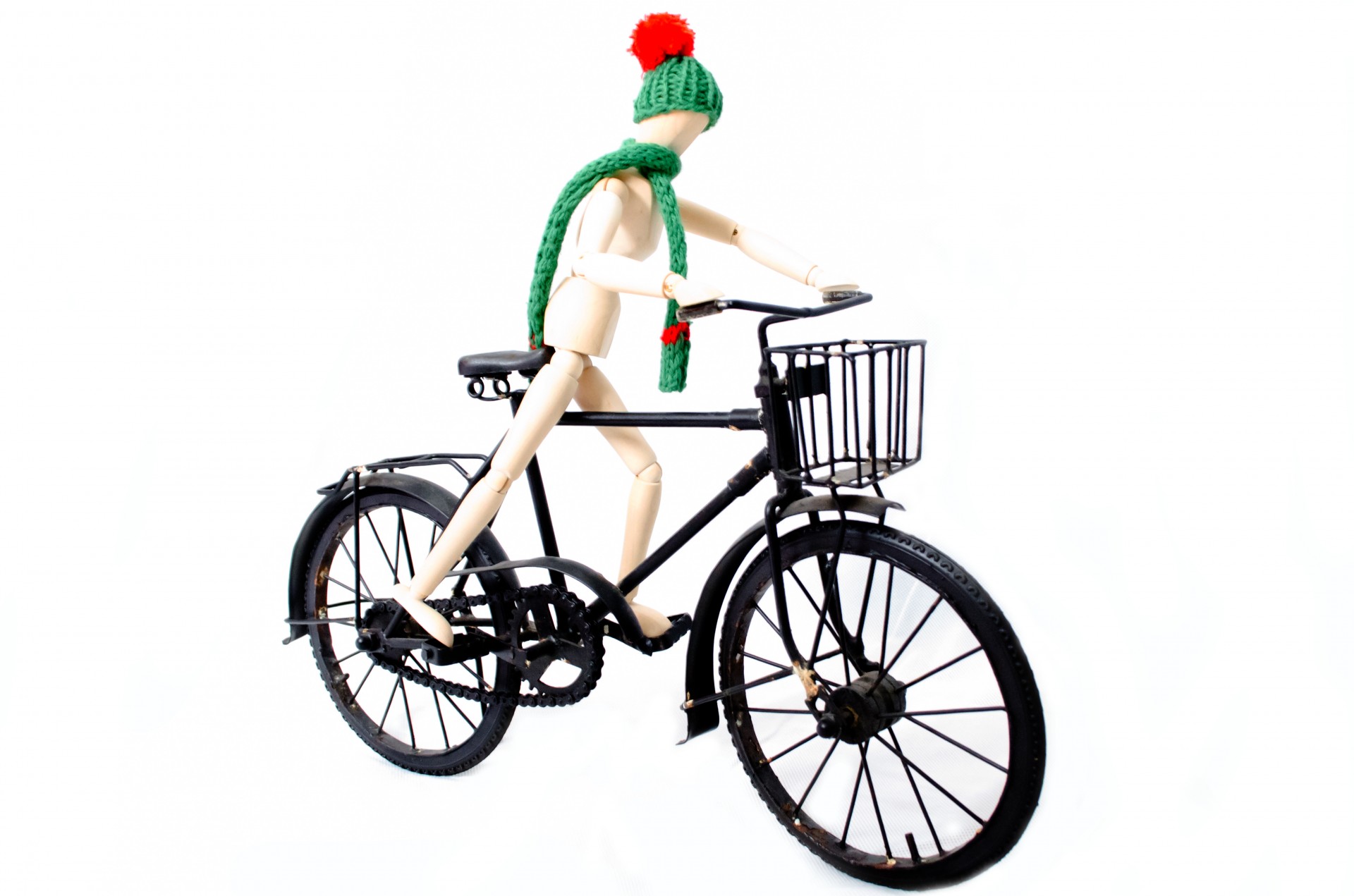 Identity and Active Citizenship / Active customers Identity and Active Citizenship / Active customers | |||||||||||||||||||||||||
| Developed by | PROSVETA | |||||||||||||||||||||||||
| Duration | 75 | |||||||||||||||||||||||||
| Energizers |  17 - Toaster or Rock Star 17 - Toaster or Rock Star The group starts in a circle with one person in the center. The person in the center points at someone in the circle and says “Toaster” or “Rock star”.
| |||||||||||||||||||||||||
| Relaxing Exercises |  13 - Body massage 13 - Body massage The students stand in a circle: they need to follow all the movement the teacher does and massage themselves. The teacher starts to massage different parts of his/her body, starting from the head till the feet (it’s better if they take off their shoes). The teacher explains how the massage needs to be done, if delicate or more energetic. Optional: The teacher can also ask to the students to massage another classmate. | |||||||||||||||||||||||||
| Objectives |
| |||||||||||||||||||||||||
| Preparation |
| |||||||||||||||||||||||||
| Introduction | We have not only human rights but also consumer rights. They give us protection in order to obtain quality products and services. Consumer rights guarantee that we can return goods if we decide that they are no longer useful or are faulty. Thanks to consumer rights, we receive compensation for delayed flights, lost luggage or for other situations which may arise during travel. When we inform the authorities of consumer fraud, we act as active citizens and safeguard our safety. The EU rules of protecting consumer rights pertain to goods bought online or offline, food safety, children’s toys, household appliances and vehicles. | |||||||||||||||||||||||||
| 153 | ||
 | ||
| Methodology | NFE Tool (case study; small groups work; discussion)
Group 1: what would they do if they were in Nick’s shoes? Group 2: what would they do if they were in the trader’s shoes? Group 3: what would they do if they were in Nick’s father’s shoes? DT video (European Commission ) / (EU Justice and Consumers) | |
| Reflection | When each group makes its presentation and offers a solution, the facilitator can ask the students the following questions:
| |
| Notes | ||
| Digital Resource | Video (European Commission ) / (EU Justice and Consumers): http://othernessproject.eu/atividades/digital/44/ic12.mp4 | |
| 154 | ||||||||||||||||||||||||||
 | ||||||||||||||||||||||||||
| 13 |  Identity and Active Citizenship / Citizenship and the media Identity and Active Citizenship / Citizenship and the media | |||||||||||||||||||||||||
| Developed by | PROSVETA | |||||||||||||||||||||||||
| Duration | 90 | |||||||||||||||||||||||||
| Energizers |  9 - Balloon pop 9 - Balloon pop Have everyone form a circle. Instruct the participants to put one piece of information about themselves, e.g. I have 2 sisters, or my mother is called Samy, on a small slip of paper, fold it, and put it in a blown up balloon. Throw the balloons in the middle of the circle and then have people take turns popping a balloon, reading the piece of paper, and guessing to whom the information applies. Participants could wander round the room asking ‘yes/ no’ questions to the other participants but not exactly the statement from the paper slip, e.g. they cannot ask “Have you got 2 sisters? But could ask “Have you got sisters?” and then “Have you got more than 1 sister?’, “Have got less than 3 sisters?”, etc. Game finishes when all participants have identified the author of the paper slip they have. *Note: this exercise should be used if there is enough time. | |||||||||||||||||||||||||
| Relaxing Exercises |  17 - Circle massage 17 - Circle massage The group forms a circle and faces one direction. Each participant places his/her hands on the shoulders of the person in front of her/him. Each person then gives the person who is in front a shoulder massage. The person being massaged can give a feedback. After a few minutes, the group turns the other way so that the person who has been making the massage is then receiving it in return. | |||||||||||||||||||||||||
| Objectives |
| |||||||||||||||||||||||||
| Preparation | Suggested reading: Mind map https://litemind.com/what-is-mind-mapping/ Materials: Thick drawing paper or white board, paper A4 Markers and colored pencils Printed handout for role play | |||||||||||||||||||||||||
| Introduction | The media are a means of communication between the people (the public) who want to hear and learn the news and the people (organizations) who send out the messages. The media play a very important role in civil society because they give events and policies publicity and can help to protect human rights in conflict situations. That is why the media are called the Fourth Estate or the fourth branch of government, together with the legislature, the executive and local authorities. | |||||||||||||||||||||||||
| 155 | ||
 | ||
| Methodology | NFE Tool Role play, Mind map (Wikipedia)
Allocate the roles (group or individual). Some students can be observers who will provide feedback on the participants’ performance when the game is over. Give students enough time to prepare. (25’) Give students the opportunity to role play the situation spontaneously without directing them. (15’) DT video clip | |
| Reflection | When the role play is over, the facilitator ask the students the following questions:
What feedback did you get from the observers? (15’) | |
| Notes | ||
| Digital Resource | Video - http://othernessproject.eu/atividades/digital/45/IC13video.wmv RolePlay - http://othernessproject.eu/atividades/pdf/45_IC13 roleplay.pdf MindMap - othernessproject.eu/atividades/digital/45/IC13mindmap.pdf | |
| 156 | ||||||||||||||||||||||||||
 | ||||||||||||||||||||||||||
| 14 | 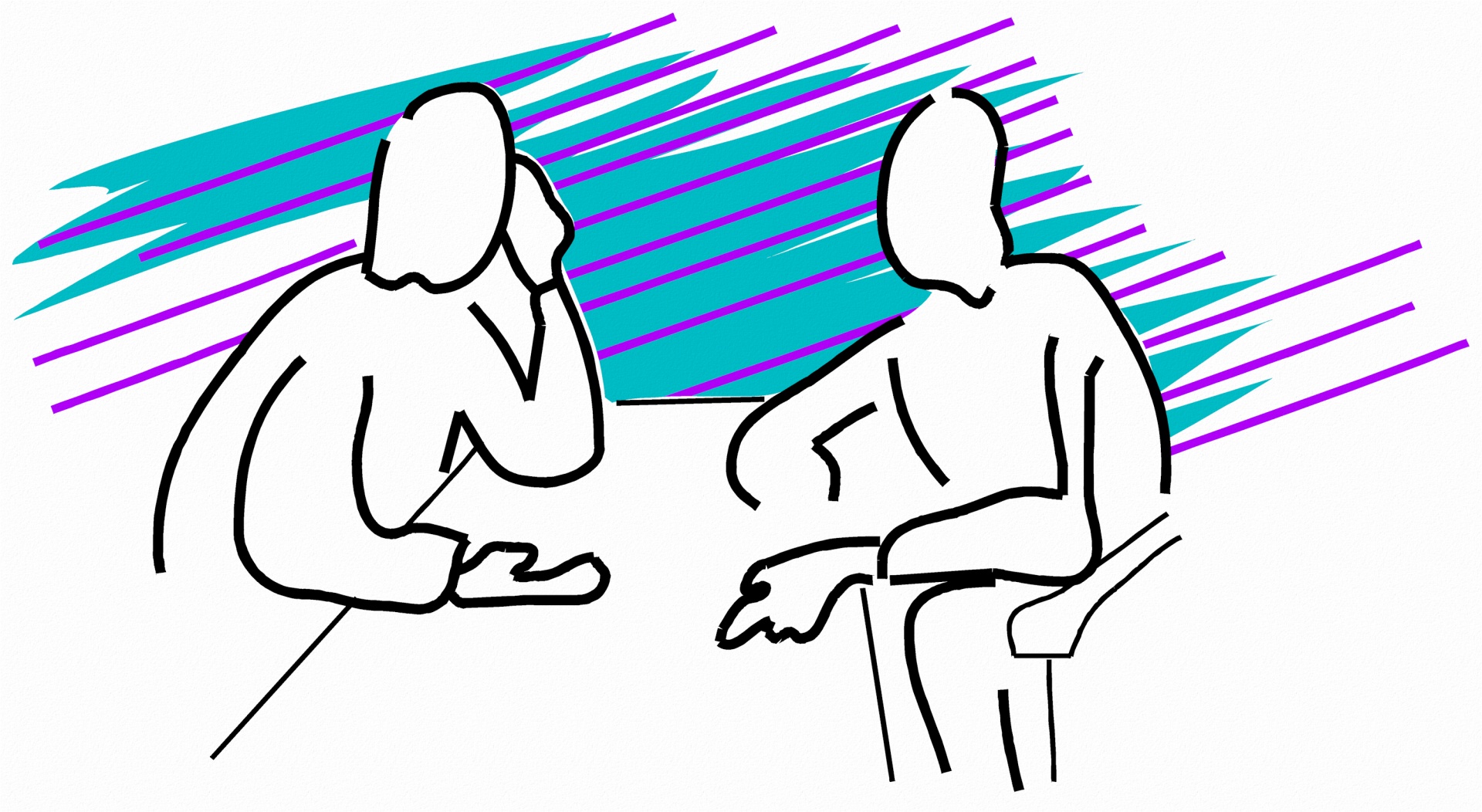 Identity and Active Citizenship / Active communication for democratic citizenship Identity and Active Citizenship / Active communication for democratic citizenship | |||||||||||||||||||||||||
| Developed by | PROSVETA | |||||||||||||||||||||||||
| Duration | 75 | |||||||||||||||||||||||||
| Energizers |  4 - Human chain 4 - Human chain Everybody stands up in a circle. They close their eyes and start moving towards the middle of the circle, holding their hands up. Whoever they touch with their hands, they hold and do not let go, so they make a knot. Then the facilitator asks the students to open their eyes and try to untangle themselves (make a circle) without letting go of their hands. | |||||||||||||||||||||||||
| Relaxing Exercises |  12 - Warm back 12 - Warm back A piece of paper is stuck to each student’s back and they are given a pen. The paper is already prepared. Each piece of paper says: “I like………..”. Slow music is played and the students walk around and write characteristics about the person whom they like on the paper. Each child is allowed to look at the paper at the end and take it home. | |||||||||||||||||||||||||
| Objectives |
| |||||||||||||||||||||||||
| Preparation | Materials: Thick drawing paper or white board Colored markers Handout – case studies | |||||||||||||||||||||||||
| Introduction | When we communicate, we connect with other people, share information, and get to know ourselves and the others. Effective communication means being able to express one’s viewpoint and respecting other people’s opinion at the same time. We communicate though speech and language, body language, the written word and information technologies. | |||||||||||||||||||||||||
| 157 | ||
 | ||
| Methodology | NFE Tool Case study
Students are shown the first two pictures in the presentation in a row. Without too much thinking, they have to say what they see in each picture (for example, a woman’s face or a flower; an old man; a young woman, dogs on the pavement, etc.)
The students look at the picture story in the presentation and the facilitator encourages them to answer the two questions that follow the story and pay special attention to signals of body language which we use to express emotions, feelings and experience. (15’)
The students look at the steps in the “I message” which shows how we express our feelings and our view point in complicated situations. (10’)
The students are divided into pairs. Each pair is given a situation which they have to present using the “I message”. (20’) | |
| Reflection | When the students finish working on the case studies and practicing the “I message”, the facilitator sets up a reflective discussion on the following questions:
On what occasions can body language help us communicate? (15’) | |
| Notes | ||
| Digital Resource | Case Study: http://othernessproject.eu/atividades/pdf/46_IC14_case study.pdf PowerPoint presentation: othernessproject.eu/atividades/digital/46/IC14 Active Communication.pptx | |
| 158 | ||||||||||||||||||||||||||
 | ||||||||||||||||||||||||||
| 15 | 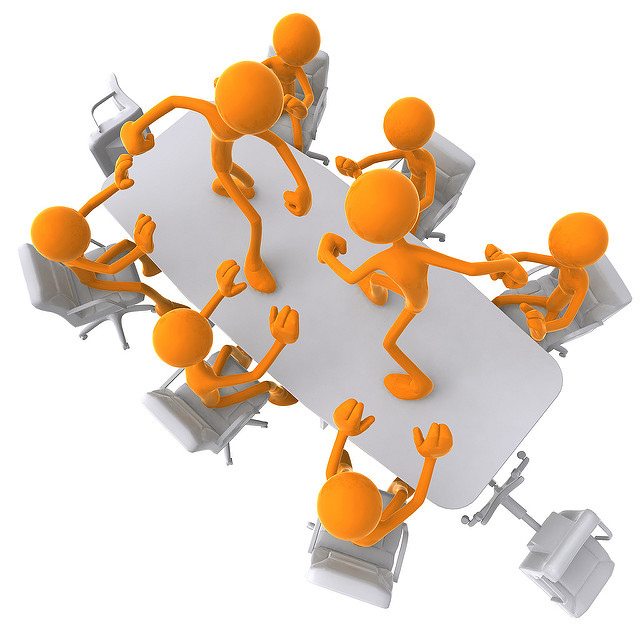 Identity and Active Citizenship / Effective conflict resolution Identity and Active Citizenship / Effective conflict resolution | |||||||||||||||||||||||||
| Developed by | PROSVETA | |||||||||||||||||||||||||
| Duration | 110 | |||||||||||||||||||||||||
| Energizers |  3 - Amoeba 3 - Amoeba An evolution game! Everyone starts off as an amoeba, with the purpose of evolving to a human. All students walk around acting like an amoeba and when they meet with another amoeba, they play one round of rock/paper/scissors. Whoever wins evolves into a worm. When two worms meet they play again rock/paper/scissors and whoever wins turns into a wasp, but whoever loses goes back to becoming an amoeba. This continues until one becomes human. The evolution stages are: amoeba à worm à wasp à chicken à monkey à human. | |||||||||||||||||||||||||
| Relaxing Exercises |  8 - Seasons of the year 8 - Seasons of the year All players sit in a circle, but not too close to one another. The teacher moves like a plant during the seasons of the year. Winter: the plants are small, weak and are crunched together on the ground. Spring: through the stronger sunshine, the plants grow slowly and slowly rise. Summer: through the warm sun, the plants slowly open their arms, the flowers open their blooms are stand up straight. Autumn: the sun rays become weaker. The plants begin to slowly shrivel, the blooms and leaves begin to fall away. | |||||||||||||||||||||||||
| Objectives |
| |||||||||||||||||||||||||
| Preparation | Materials: Thick drawing paper or white board Colored markers | |||||||||||||||||||||||||
| Introduction | The ability of non-violent conflict resolution is a feature of democratic citizenship. Conflicts can be resolved through suitable communication between the arguing parties, through negotiation or mediation. The key aim of effective conflict resolution is to preserve the relationship so that the interests of both sided are satisfied rather than to win the conflict at the expense or loss of the other side. | |||||||||||||||||||||||||
| 159 | ||
 | ||
| Methodology | NFE Tool Brainstorming, Role play, Team work
The students say words which they associate with the word “conflict”. The words are written down on the board or on a thick drawing paper. The students can also use drawings – symbols. Then the students group the words according to similarities, for example feelings, reasons, consequences of conflict, etc. (10’)
The students are divided into two groups. Each group uses the respective slide of the presentation and writes down suggestions on a thick drawing paper. Group 1 – what is beneficial to me?; Group 2 – what is not beneficial to me? (15’)
| |
| Reflection | When the role play is over, the facilitator sets up a reflective discussion on the following questions:
| |
| Notes | ||
| Digital Resource | Role Play: http://othernessproject.eu/atividades/pdf/47_IC15_role play.pdf Video: http://othernessproject.eu/atividades/digital/47/IC15-video.wmv | |
| 160 | |||||||||||||||||||||||
 | |||||||||||||||||||||||
| 16 | 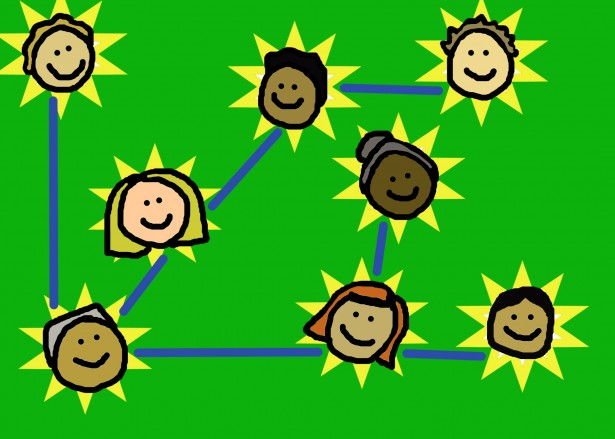 Identity and Active Citizenship / Networking between active citizens Identity and Active Citizenship / Networking between active citizens | ||||||||||||||||||||||
| Developed by | AENAO | ||||||||||||||||||||||
| Duration | 90 | ||||||||||||||||||||||
| Energizers |  7 - Connecting eyes 7 - Connecting eyes Participants stand in a circle. Each person makes eye contact with another person across the circle. The two walk across the circle and exchange positions, while maintaining eye contact. Many pairs can exchange at the same time, and the group should try to make sure that everyone in the circle is included in the exchange. Tip: Begin by trying this in silence and then exchange greetings in the middle of the circle. Variations: If the teacher considers, knowing the class atmosphere, that some students might be left not participating, i.e. they try to make eye contact but nobody responds to them and they have no chance to move from their initial position, the moderator could divide the class in 2 groups and introduce a competitive element – after the activity each group will be marked on the ‘team spirit thermometer’ (which could be printed on a A4 paper and the teacher marks the degrees with a marker). The more people you have left not participating in the ‘eye contact’ activity – the lower the degrees to be marked on the thermometer. | ||||||||||||||||||||||
| Relaxing Exercises |  14 - Give me your energy 14 - Give me your energy The students stand in a circle. The teacher starts, pretending he/she is holding a ball on the hands and passing it to the student on his/her right; this one do the same, until the ball comes back to the teacher. The ball needs to be passed in a gentle way, as it is very precious. At the second round, the teacher passes the ball to students in another side of the circle, making a gesture and a noise. The students will do the same until everyone will have touched the ball at least once. The ball can be passed in any way (in form of kick, kiss…), pretending it becomes bigger or smaller depending on the will of the students. | ||||||||||||||||||||||
| Objectives |
| ||||||||||||||||||||||
| Preparation |
Teacher and students should watch the prezi presentation shown in the DT (link is given below) prior to this exercise
Cartons/flipcharts, markers, Case study (to be handed in to all groups) available in the pdf file @ http://othernessproject.eu/atividades/pdf/48_IC16 Case Study.pdf
| ||||||||||||||||||||||
| 161 | ||
 | ||
| Introduction | Citizens are members of a group or community who share the same rights and responsibilities (Social Education Victoria). As a citizen you can expect to be treated in the same way as everybody else in your community. Active citizens take action in order to improve their community, to make a difference! | |
| Methodology | NFE Tool Case Study, Team Work, Simulation
Group A: Informal group* of young people dealing with helping youths in local community to seek for job opportunities, write a CV, etc located in Greece Group B: Organisation (NGO)** dealing with engaging under-privileged youths into interactive games and help them be creative, located in Italy Group C: Organisation (NGO) dealing with educating youths in environmental and health issues, located in Portugal Group D: Informal group of young people dealing with grass root sports, located in Bulgaria Group E: National Agency (a group of people who assists Groups A-D for finding partners and implementing the project). */** Informal groups and NGO’s (Non Government Organisations) are both organizations who can organize and take part as partners in projects of Erasmus such as Youth Exchanges.
Project title: Outdoor activities for students. Duration: 5 days Details: hicking, grass root sports, treasure hunts, field trips, organizing bazaars for used products in order to raise money for school trip, outdoor workshops etc. Methodology: Non formal education (role playing, brainstorming, team work, artistic creation, outdoor activities, simulation) Students need to: (a) decide which group can organize the following project depending on relevance with the topic, (b) show how they found their partners, (c) show how they communicated with partners, (d) show how the National Agency helped them, (e) decide what activities to do during the project (i.e. what outdoor activities are important for them as a school), (f) organize a final event so that the local community could know about their project (where to organize it, who to invite, how to invite people ; i.e. use social media, flyers, etc). (60’) http://othernessproject.eu/atividades/digital/48/networking.html | |
| 162 | ||
 | ||
| Reflection | Teacher asks students in the plenary the following questions
| |
| Notes | ||
| Digital Resource | Prezi Presentation http://prezi.com/yw9unkgdvn4x/?utm_campaign=share&utm_medium=copy Digital Resource - http://othernessproject.eu/atividades/digital/48/networking.html | |
| 163 | |||||||||||||||||||||||||||||||||||||||||||||||
 | |||||||||||||||||||||||||||||||||||||||||||||||
| 17 |  Identity and Active Citizenship / European values Identity and Active Citizenship / European values | ||||||||||||||||||||||||||||||||||||||||||||||
| Developed by | Prosveta | ||||||||||||||||||||||||||||||||||||||||||||||
| Duration | 70 | ||||||||||||||||||||||||||||||||||||||||||||||
| Energizers |  14 - I am going on a trip 14 - I am going on a trip Everyone sits in a circle. Start by saying “I’m going on a trip and I’m taking a hug”, and hug the person to your right. That person then has to say “I’m going on a trip and I’m taking a hug and a pat on the back”, and then give the person on their right a hug and a pat on the back. Each person repeats what has been said and adds a new action to the list. Go round the circle until everyone has had a turn. | ||||||||||||||||||||||||||||||||||||||||||||||
| Relaxing Exercises |  1 - Guided fantasy 1 - Guided fantasy Students are asked to close their eyes (if comfortable) and, with the guidance of the facilitator, slowly imagine a scene of the past or future event. More and more details are used to describe the event with all senses and thoughts. A suggested brief script could be à Begin by breathing slowly and deeply… Think of yourself in a place where you feel relaxed and at ease… Create all the details in your mind, what do you see… what the sounds are like, the smells and colors of this special place… Are there any people …? Rossman, 2016 | ||||||||||||||||||||||||||||||||||||||||||||||
| Objectives | Students will:
| ||||||||||||||||||||||||||||||||||||||||||||||
| Preparation |
| ||||||||||||||||||||||||||||||||||||||||||||||
| Introduction | Values are the fundamental elements of the culture; they define the meaning and significance for the people within a social system (society.) The rules and norms of a society are derived from its values. Values have a deep significance for the respective social system due to the fact that they significantly influence, control and regulate this social system. Values are the foundation of a society! | ||||||||||||||||||||||||||||||||||||||||||||||
| Methodology |
NFE tool: Snowballing 5’
3.1. Gender equality 15’ 1. Questions to the students: Do you think men and women are equal? Do you think that everyone in Europe thinks that men and women are equal? 2. Guess: What percentage of people in your home country agree with the statement “Fathers are as well suited to look after their children as mothers.”? What about other countries? Fill in your guesses in the table (IAC17.2 ) 3. Students compare their guesses with the data maps (IAC17.3 or use the presentation) and discuss any surprising data from the maps. 4. Students are split in groups of 4. (1) Each group steps in shoes of the people from one of the countries in the maps (Bulgaria, Poland, Greece, Portugal, Spain, Romania, Sweden, Ukraine) assuming the value expressed in the map. (2) Each groups receives a copy of the table (IAC17.4) and work together to agree on 3 reasons that are relevant for their assigned country. (3) Each group presents their findings to the class. The teacher starts a discussion about the process of choosing the 3 reason – whether students relied on stereotypes or on their knowledge of the countries 3.2. Upbringing 15’ 1.Students receive copies of deliverable IAC 17.5 and the task to rank the following aspects in upbringing to how important they are to them personally (Individual work)
2.Students compare their ranking regarding the different aspects of upbringing to the ranking of other Europeans (IAC 17.5 or use the presentation IAC17.9 ) and discuss their reasons for the ranking they did, any patterns they see in the maps, surprising data, etc. 3.3. People in need 20’
| ||||||||||||||||||||||||||||||||||||||||||||||
| Reflection | Guided reflection: 10’
| ||||||||||||||||||||||||||||||||||||||||||||||
| Notes | In case of a distant learning training session, the following modifications of activities might be used: Activity 3.1. Gender equality - activity 4. Students are split in groups of 4 and Activity 3.3. People in need: Create the corresponding number of Breakout rooms in ZOOM Tutorial - how to activate and make use of the ZOOM Breakout rooms feature. The activities in the training have been inspired by the European Values Study which explores Europeans' attitudes about religion, politics, work, society, family and Europe. The maps are from the Atlas of European Values where you can find plenty of additional survey results and maps. | ||||||||||||||||||||||||||||||||||||||||||||||
| Digital Resource | Presentation IAC17.1; narrated version IAC17.1 Deliverables and visual materials: IAC17.2; IAC17.3, IAC17.4, IAC17.5, IAC17.6, IAC17.7 How to use Mentimeter in the Reflection section (tutorial) Tutorial - how to activate and make use of the ZOOM Breakout rooms feature | ||||||||||||||||||||||||||||||||||||||||||||||
| 164 | ||||||||||||||||||||||||||||||||||||||
 | ||||||||||||||||||||||||||||||||||||||
| 18 |  Identity and Active Citizenship / Protect the environment Identity and Active Citizenship / Protect the environment | |||||||||||||||||||||||||||||||||||||
| Developed by | AENAO | |||||||||||||||||||||||||||||||||||||
| Duration | 75 min | |||||||||||||||||||||||||||||||||||||
| Energizers |  3 - Amoeba 3 - Amoeba An evolution game! Everyone starts off as an amoeba, with the purpose of evolving to a human. All students walk around acting like an amoeba and when they meet with another amoeba, they play one round of rock/paper/scissors. Whoever wins evolves into a worm. When two worms meet they play again rock/paper/scissors and whoever wins turns into a wasp, but whoever loses goes back to becoming an amoeba. This continues until one becomes human. The evolution stages are: amoeba à worm à wasp à chicken à monkey à human. | |||||||||||||||||||||||||||||||||||||
| Relaxing Exercises |  7 - Strong as a tree 7 - Strong as a tree All students spread out in the room. With their feet firmly planted on the ground, they pretend they are trees that are slowly swaying back and forth with a breeze. The movements become stronger as a storm approaches. The students try to make their movements as strong as possible, but remember to keep their feet on the ground. Slowly the wind dies down and the trees can rest. | |||||||||||||||||||||||||||||||||||||
| Objectives |
| |||||||||||||||||||||||||||||||||||||
| Preparation |
https://ww2.kqed.org/quest/2013/07/05/tracking-your-ecological-footprint/ https://www.footprintnetwork.org/our-work/ecological-footprint/
For the part where students answer the questionnaire, it is preferably to use an outdoor space or large indoor space. | |||||||||||||||||||||||||||||||||||||
| Introduction | Imagine if trees gave off Wi-Fi signals; we would be planting so many trees and we would probably save the planet too. Too bad they only produce the oxygen we breathe. (An ecological quote) “The greatest threat to our planet is the belief that someone else will save it.” Robert Swan | |||||||||||||||||||||||||||||||||||||
| Methodology | NFE Tool Questionnaire (Pearce, 2012), pg 26-28
* See pg 26 of Bibliography manual (20’) | |||||||||||||||||||||||||||||||||||||
| Reflection | Teacher asks students questions in the plenary:
(20’) | |||||||||||||||||||||||||||||||||||||
| Notes | Bibliography: Pearce, C. S. (2012). Handbook for action against climate change. Brussels: International Falcon Movement-Socialist Educational International. Retrieved from http://www.ifm-sei.org/files/up/ATACC-publication-web.pdf Tips: It is a good idea to plan delivering the training session partially outside the classroom so that the students could do steps 2 and 3 not being constrained by the space in the classroom. If this is not possible the teacher can use the school gym. | |||||||||||||||||||||||||||||||||||||
| Digital Resource | http://me-you-us.eu/atividades/digital/691/691_ATACC-publication-web.pdf http://me-you-us.eu/atividades/digital/691/691_Environment_Protection-340536276.mp4 | |||||||||||||||||||||||||||||||||||||
| 165 | |||||||||||||||||||||||||||||||||||||||||||||||
 | |||||||||||||||||||||||||||||||||||||||||||||||
| 19 |  Identity and Active Citizenship / Solidarity Market Identity and Active Citizenship / Solidarity Market | ||||||||||||||||||||||||||||||||||||||||||||||
| Developed by | IPSantarém: Ana Da Silva | Ana Torres | Maurício D | ||||||||||||||||||||||||||||||||||||||||||||||
| Duration | 2 x 45 m | ||||||||||||||||||||||||||||||||||||||||||||||
| Energizers |  4 - Human chain 4 - Human chain Everybody stands up in a circle. They close their eyes and start moving towards the middle of the circle, holding their hands up. Whoever they touch with their hands, they hold and do not let go, so they make a knot. Then the facilitator asks the students to open their eyes and try to untangle themselves (make a circle) without letting go of their hands. | ||||||||||||||||||||||||||||||||||||||||||||||
| Relaxing Exercises |  17 - Circle massage 17 - Circle massage The group forms a circle and faces one direction. Each participant places his/her hands on the shoulders of the person in front of her/him. Each person then gives the person who is in front a shoulder massage. The person being massaged can give a feedback. After a few minutes, the group turns the other way so that the person who has been making the massage is then receiving it in return. | ||||||||||||||||||||||||||||||||||||||||||||||
| Objectives | To acquire knowledge about solidarity economy and markets; Compare characteristics of different types of hypermarkets and local/municipal markets with the characteristics of solidarity markets; Reflect on consumption, production and the exchange value of money; Organize and carry out a solidarity market. | ||||||||||||||||||||||||||||||||||||||||||||||
| Preparation | Suggested reading: Da Silva, Ana. "Try another form of economy with solidarity markets", in Brito, B .; Pinto, J .; Alarcão, N. (Org.) Opening Rails Weaving Networks. Reflections and Experiences of Local Development in Lusophone Context, pp.167-175. Lisbon: Gerpress / Center for African Studies and UAL, 2010. ISBN 978-989-96094-2-6. In this article, you can consult a synthesis on methodology of organization and realization of a solidarity market. Resource website of social and solidarity economy,http://www.socioeco.org/index_en.html On this site, you can find thousands of publications, videos and other documents on social and solidarity economy. Tips: Although markets can be organized by people from all scientific and curricular areas, they are an excellent opportunity for interdisciplinary work of different areas of social sciences and humanities (fairer, more democratic and ethical economy), natural sciences (sustainability) and mathematics (calculation of currency), and can also articulate with the area of Visual Education in the design and production of the solidarity/complementary currency. In the case of school-based markets, this option still has the advantage of using the school time of several teachers, not overloading only one teacher's time. For example, the market assembly can be held during the term of a discipline and the market can be held during the academic time of another discipline. The quality of the Solidarity Market and the consistency of the learning will be greater if it is carried out after some activity and / or class on environmental, economic, social sustainability, etc., and/or in which they have the possibility to learn to recycle waste materials in the creation of diverse products, such as wallets with milk packages; bangles with stoppers, buttons or scraps of fabrics; omelets with scraps of vegetables, etc. There should be an interval of at least 15 days between the first session of the activity (Market Assembly) and the second session (Market) to make sure that the producers have enough time to produce the products. During this time, the facilitator should check if the participants are making the products they agreed to bring to the market during the Market Assembly. You can opt for the strategy of requesting the delivery of the products 3 or 4 days before the market date. Thus, you may avoid that some young people forget to bring the products on market day. These markets can also be done with the exchange of services (instead of only products) but it would take the double of the time. Materials: For the Market Assembly: computer, multimedia projector and internet, big paper and thick markers. For Solidarity Market: tables, chairs, paper, pens and other stationery (scissors, glue, etc.) to identify the market stalls and produce the solidarity (complementary) currency. Digital tool: Prezi presentation: https://prezi.com/p/omiokkcxwn4x/economy-and-solidarity-market/ | ||||||||||||||||||||||||||||||||||||||||||||||
| Introduction | Schools need a new education for an economy that fosters better human relations and an improved relationship with the planet. In this activity, we propose a perspective of economy based on solidarity chains of production and consumption and collaborative markets, where citizens share a new identity that is not based on economic growth, increased debt and destruction of natural resources. They actively share responsibilities, knowledge, products, co-participating in the organization of a solidarity market. | ||||||||||||||||||||||||||||||||||||||||||||||
| Methodology | FIRST SESSION - MARKET ASSEMBLY (45 minutes) The facilitator makes an introduction to the solidarity economy and markets (using the Prezi presentation), stressing that we can choose to have consumer behaviors, identifying us more with environmental, economic and social sustainability, which is fundamental for our quality of life on a planet where there are still resources, but they have to be better preserved and more fairly distributed by all people. A slogan like "Live more simply so that other people can simply live" (15 minutes) can be used. The facilitator explains (5 minutes):
Afterwards, prosumers should plan the organization of the market by answering the following questions (15 minutes): - When are we going to do the market? It is necessary to take into account the school calendar and the scheduling of other activities already scheduled to avoid overlapping of activities in the same place on the same dates. If there is an interdisciplinary articulation, check the availability of all the teachers involved. - What names will we give to the market and the solidarity currency/money? - Where are we going to do the market? Is there a large open space where we can put the stalls, such as a gym, a canteen, an outdoor patio, etc.? - How much currency will we distribute to each person at the beginning of the market? The facilitator makes small groups of 5 persons and raffles tasks to perform by each group (the market must be fair also in terms of distribution of tasks) (10 minutes):
This group will ask each prosumer and register the products that each of them wants to bring to the market and those that he/she would like to find in the market (trying to have as much diversity as possible). For example, if a person named Mary proposes to make keyrings or origami (because she is competent to produce both), and there are other people who are also able to produce keyrings, but nobody else knows how to make origami, it's a good idea to ask Maria to make origami, as this will contribute to a greater diversity of products, making the market more interesting and more useful to everyone. It is normal that some people may have no idea of what products they want to propose to the market, and it is important for the facilitator to find out what people like to do and things that interest them (their competencies, interests and what they like to do) so as to find something that the person feels comfortable doing. In the case of young people with many difficulties, it is always possible to learn to do something new that they want to reproduce later to take to the market. For example, if a person named Peter does not know how to make origami, but is interested in it, the visual education teacher can be asked to teach him how to make origami, so that he can produce various types of origami for market.
SECOND SESSION - SOLIDARITY MARKET (45 minutes) The facilitator supervises: 1. The placement on the stalls, by each prosumer, of the products to be exchanged and distribution of the same quantity of currency to all participating persons (the group responsible for the currency should handle to each participant, as he/she comes in, the amount of currency previously agreed in the Assembly (3 minutes); 2. The dynamic marking the value (price) of a basic product, from which each participant then assigns the value (price) for which he/she will sell his/her product (2 minutes). The facilitator marks the opening of the market by saying "The Market is open", following the dynamics of acquisition (purchase) and provision (sale) (approximately 30 minutes, depending on the quantity and diversity of products, as well as number of participants). It is possible to videotape the market to disseminate in the school and local community and write news (for example in articulation with language disciplines) about the market experience for the school newspaper or local media. | ||||||||||||||||||||||||||||||||||||||||||||||
| Reflection | Reflection: (10 minutes) The facilitator talks to the students with the purpose of evaluating learning, as well as the quality of the market and the organization of the market. What went well. What went well and was thanks to my personal contribution. What went the less well and strategies for it to run better in the future. What I learned about solidarity economy and markets, about money and consumer identities. Will I reflect on my identity as a consumer and the possibility of being more prosumer than consumer? (ie, will I think better before buying some products that I can do myself?) The facilitator can choose to evaluate the satisfaction of the prosumers regarding parameters such as diversity of products, efficiency of the organization, interpersonal relationships during the organization and market implementation, market sustainability, learning, etc. The facilitator can perform this assessment dynamically as follows: - Write each evaluation parameter/dimension on a sheet of A4 paper with thick markers; - Ask the group to stand in a circle; - The facilitator places himself/herself in the center of the circle and shows the first sheet with the first evaluation dimension and asks the participants to come closer to the center if they are very satisfied with that first dimension and move away (back) if they are not satisfied and have aspects to criticize; - The facilitator can ask the participants to explain the reasons why they are positioned closer (more satisfaction) or further away from the center (less satisfaction). - The facilitator makes a short comment at the end. | ||||||||||||||||||||||||||||||||||||||||||||||
| Notes | Other Digital Resources: Movies from solidarity markets with different ages and in different contexts: https://www.youtube.com/watch?v=LfCzLFo7C6s&list=UUsdoDVQ2L8iRzF4o29BBKsw&index=50 https://www.youtube.com/watch?v=n9Aa-cneo58 https://www.youtube.com/watch?v=mSM2EKojbuw&list=UUsdoDVQ2L8iRzF4o29BBKsw&index=51 https://www.youtube.com/watch?v=vqgHdk_Mi8c&index=52&list=UUsdoDVQ2L8iRzF4o29BBKsw | ||||||||||||||||||||||||||||||||||||||||||||||
| Digital Resource | Movies from solidarity markets with different ages and in different contexts: https://www.youtube.com/watch?v=LfCzLFo7C6s&list=UUsdoDVQ2L8iRzF4o29BBKsw&index=50 https://www.youtube.com/watch?v=n9Aa-cneo58 https://www.youtube.com/watch?v=mSM2EKojbuw&list=UUsdoDVQ2L8iRzF4o29BBKsw&index=51 https://www.youtube.com/watch?v=vqgHdk_Mi8c&index=52&list=UUsdoDVQ2L8iRzF4o29BBKsw | ||||||||||||||||||||||||||||||||||||||||||||||
| 166 | ||||||||||||||||||||||||||||||||||||||
 | ||||||||||||||||||||||||||||||||||||||
| 20 |  Identity and Active Citizenship / Community engagement Identity and Active Citizenship / Community engagement | |||||||||||||||||||||||||||||||||||||
| Developed by | University of social sciences | |||||||||||||||||||||||||||||||||||||
| Duration | 70 min. | |||||||||||||||||||||||||||||||||||||
| Energizers |  10 - Rope game 10 - Rope game Have the participants stand on the middle of a space cleared of desks, chairs, etc. Divide the room in a way that allows them easily to move from one half of the room to the other, e.g. by placing a long piece of rope on the floor. The teacher stands at one of the ends of the rope and calls out a characteristic, or a colour or a letter, e.g. “Everyone having blue eyes!”; “Everyone having 3 brothers”, “Everyone whose name begins with B”, etc. and points to the part of the room where the participants wearing orange/ having 3 brothers/ having B names have to move to. All participants who are wearing orange/ having 3 brothers/ having B names move to the respective part of the room; the ones who are not , have to go to the other part. Questions have to be constructed so that the class does not divide in groups having comparatively equal number of students, i.e. one of the groups should consist (in most cases) of one, two or few students. Debriefing: Participants are asked to share how they felt when they were part of a big group; and when they were standing alone (or were part of a very small group); what did they feel of themselves (as part of a small/ big group), and what their feelings were towards the group they were not part of. | |||||||||||||||||||||||||||||||||||||
| Relaxing Exercises |  14 - Give me your energy 14 - Give me your energy The students stand in a circle. The teacher starts, pretending he/she is holding a ball on the hands and passing it to the student on his/her right; this one do the same, until the ball comes back to the teacher. The ball needs to be passed in a gentle way, as it is very precious. At the second round, the teacher passes the ball to students in another side of the circle, making a gesture and a noise. The students will do the same until everyone will have touched the ball at least once. The ball can be passed in any way (in form of kick, kiss…), pretending it becomes bigger or smaller depending on the will of the students. | |||||||||||||||||||||||||||||||||||||
| Objectives |
| |||||||||||||||||||||||||||||||||||||
| Preparation | Preparation: The lesson should be done in a good, nice atmosphere, the teacher should avoid assessment of ideas, but in the cases of bad ones, show their bad consequences instead. Materials: Papers, computer, projector for the presentations. | |||||||||||||||||||||||||||||||||||||
| Introduction | We all have some goals in our life. But as we are living together, some goals are common and require common activities. So this lesson is about the importance of collaboration as we all have common goals. | |||||||||||||||||||||||||||||||||||||
| Methodology | NFE Tools: Simulation, role-playing game, case study, team working.
When they describe it, write the propositions on the blackboard. Then ask what is needed to organize it? What is required? Who can do it? Reflection: This activity should show, that if we are dreaming about the place to be as a group (class), it requires common efforts. 10’
5.1. Discuss:
5.2. Explanations for the possible answers from pupils – teacher should not suggest answers to students. The aim of these questions is to distinguish differences between situations, but also to find what is common:
The same with differences, however: The biggest difference is, that during crisis the main aim of common engagement is to coordinate efforts, so the we must puta special attention on the process of communication and spreading news. While in everyday life the main aim is to gather ideas and try to find common solving for the problems that we as a group has.
6.1. There’s a world championships in Snail Racing in your town. Ask the citizens to take part in guesting all the tourists that are going to visit your town on the occasion of this event. 6.2. There’s an invasion of wasps in the town. Ask the citizens to help to fight off the invasion. 6.3. There are forecasts about a flood that can happen in few days. Ask the citizens to help in common preparation to prevent the town from flooding. 6.4. There’s a project of competition between the towns about recycling. Ask the citizens to take part in this competition as the prize is worth the effort for every human in the town. 6.5. There’s a problem of water shortage in your town. Ask the citizens to save the water for the common good. 10’ After the presentations of the 5 groups students discuss the following questions:
| |||||||||||||||||||||||||||||||||||||
| Reflection | Recap the lesson in answering the questions:
| |||||||||||||||||||||||||||||||||||||
| Notes | ||||||||||||||||||||||||||||||||||||||
| Digital Resource | Presentations: | |||||||||||||||||||||||||||||||||||||
| 167 | ||||||||||||||||||||||||||||||||||||||
 | ||||||||||||||||||||||||||||||||||||||
| 21 |  Identity and Active Citizenship / You have the power! Identity and Active Citizenship / You have the power! | |||||||||||||||||||||||||||||||||||||
| Developed by | ALTIUS Foundation | |||||||||||||||||||||||||||||||||||||
| Duration | 80 | |||||||||||||||||||||||||||||||||||||
| Energizers |  10 - Rope game 10 - Rope game Have the participants stand on the middle of a space cleared of desks, chairs, etc. Divide the room in a way that allows them easily to move from one half of the room to the other, e.g. by placing a long piece of rope on the floor. The teacher stands at one of the ends of the rope and calls out a characteristic, or a colour or a letter, e.g. “Everyone having blue eyes!”; “Everyone having 3 brothers”, “Everyone whose name begins with B”, etc. and points to the part of the room where the participants wearing orange/ having 3 brothers/ having B names have to move to. All participants who are wearing orange/ having 3 brothers/ having B names move to the respective part of the room; the ones who are not , have to go to the other part. Questions have to be constructed so that the class does not divide in groups having comparatively equal number of students, i.e. one of the groups should consist (in most cases) of one, two or few students. Debriefing: Participants are asked to share how they felt when they were part of a big group; and when they were standing alone (or were part of a very small group); what did they feel of themselves (as part of a small/ big group), and what their feelings were towards the group they were not part of. | |||||||||||||||||||||||||||||||||||||
| Relaxing Exercises |  7 - Strong as a tree 7 - Strong as a tree All students spread out in the room. With their feet firmly planted on the ground, they pretend they are trees that are slowly swaying back and forth with a breeze. The movements become stronger as a storm approaches. The students try to make their movements as strong as possible, but remember to keep their feet on the ground. Slowly the wind dies down and the trees can rest. | |||||||||||||||||||||||||||||||||||||
| Objectives | Main objective: To engage students in the decision-making process; to motivate and develop their skills for active citizenship. Aims:
| |||||||||||||||||||||||||||||||||||||
| Preparation | Materials needed: Laptop and projector for the presentation AC21.1 Printed copies of Handout 1 for each student for activity AC21_2. Blue and green pencils for each student for activity AC21_2. Printed copies of Handout 2 for activity AC21_3. Digital resources: Useful links: Convention on the Rights of the Child - adapted version for children https://www.savethechildren.org.uk/content/dam/global/reports/uncrc-child-friendly- version1.pdf | |||||||||||||||||||||||||||||||||||||
| Introduction | Citizens have a role to play in building a democratic society and the development of skills and attitudes towards active citizenship is crucial. Not only are active citizens aware of their rights and obligations, but they also show solidarity with others and are ready to give something to the public. The development of decision-making skills is an integral part of education, with a view to disseminating fundamental values and intercultural competences for active citizenship. Every decision-making process makes the ultimate choice that may or may not provoke action. Decision-making is the process of identifying and selecting alternatives based on the decision-maker's values, preferences and beliefs. | |||||||||||||||||||||||||||||||||||||
| Methodology | Activity 1. Make better decisions! Think independently. 15 ' With this activity, students are introduced to the topic of how (the 4 steps) to think independently and make better decisions disregarding the opinions of others. (NFE tool – discussion based on the interactive presentation form the DT: AC21.1). Questions to be discussed during or after the presentation:
Activity 2. Who Am I? (NFE tool: RMP; DT: AC21.2http://me-you-us.eu/atividades/pdf/715_AC21.2_AC21.3.pdf.) 15 ' The activity is related to the AC21.1 presentation “Making decisions by yourself”: the work on step 3 “BE PREPARED”. Activity 2 helps students to reflect on their needs and values so that they can understand what their interests are and what is important to them. The teacher distributes Handout 1 from AC21.2 to all students. Each student is asked to perform independently the following tasks:
Group work: 5’
Activity 3. A skater’s lane in the Central City Park. (NFE tool: case study, small group work, role play / simulation; DT: AC21.3). Activity 3 is meant to practice the skill to assert yourself from the algorithm in the "Make your own decisions" presentation (Step 2, "THINK ABOUT THE CONSEQUENCES", and Step 4, "ACT FIRMLY"). It aims at making students aware that changes in societal development and global problems require active citizenship skills and behavior. This requires everyone to be aware of their responsibilities, to fulfill their responsibilities, to seek their rights, to take an informed and reasoned position, and to be involved in solving pressing problems. Organization of the activity:
| |||||||||||||||||||||||||||||||||||||
| Reflection | Guidelines for reflection
| |||||||||||||||||||||||||||||||||||||
| Notes | ||||||||||||||||||||||||||||||||||||||
| Digital Resource | AC21.1 - presentation; AC21.2_AC21.3 – Instructions and handouts https://www.savethechildren.org.uk/content/dam/global/reports/uncrc-child-friendly-version1.pdf | |||||||||||||||||||||||||||||||||||||
| 168 | |||||||||||||||||||||||||||||||||||||||
 | |||||||||||||||||||||||||||||||||||||||
| 22 |  Identity and Active Citizenship / The school is my chance! Identity and Active Citizenship / The school is my chance! | ||||||||||||||||||||||||||||||||||||||
| Developed by | ISJ Dolj | ||||||||||||||||||||||||||||||||||||||
| Duration | 80’ | ||||||||||||||||||||||||||||||||||||||
| Energizers |  6 - Keep walking 6 - Keep walking The teacher instructs the students to walk in different manners covering the whole rook, i.e. walk like you are very happy, walk like a very heavy elephant, walk like you are 80 years old, walk like it’s raining cats and dogs, walk like a toddler, etc. | ||||||||||||||||||||||||||||||||||||||
| Relaxing Exercises |  1 - Guided fantasy 1 - Guided fantasy Students are asked to close their eyes (if comfortable) and, with the guidance of the facilitator, slowly imagine a scene of the past or future event. More and more details are used to describe the event with all senses and thoughts. A suggested brief script could be à Begin by breathing slowly and deeply… Think of yourself in a place where you feel relaxed and at ease… Create all the details in your mind, what do you see… what the sounds are like, the smells and colors of this special place… Are there any people …? Rossman, 2016 | ||||||||||||||||||||||||||||||||||||||
| Objectives |
| ||||||||||||||||||||||||||||||||||||||
| Preparation | Required materials: Computer/ alptop, projector | ||||||||||||||||||||||||||||||||||||||
| Introduction | The teacher is advised to find information (at national level) about: the dropout rate, the consequences of abandoning the future and the social integration of early school leavers and the society as a whole (for example, loss of workforce, especially skilled labor, rising costs with social assistance, endangering future generations by perpetuating dysfunctional models), but also about the causes of school dropout (for example, material difficulties, family disorganization through divorce, alcoholism, violence, abandonment, child and adolescent belonging to working groups illegal entry, early entry into the labor market, drown by immediate fast earnings, migration, etc.). The stages prior to school dropout are absenteeism and repetition. Teachers and students may have a critical or indifferent attitude. Such attitudes can lead to the avoidance of the school environment until it is left by the one in difficulty. Students can get involved in preventing and combating school dropout by improving the social climate at the class and school level by, for example: increasing the acceptance of colleagues in risk situations, creating a friendly, family atmosphere, attracting students who are absent in different activities , attracting non-governmental organizations to help students with reduced opportunities etc. | ||||||||||||||||||||||||||||||||||||||
| Methodology |
| ||||||||||||||||||||||||||||||||||||||
| Reflection | After the students played the scenes, the teacher asked them the following questions:
| ||||||||||||||||||||||||||||||||||||||
| Notes | |||||||||||||||||||||||||||||||||||||||
| Digital Resource | |||||||||||||||||||||||||||||||||||||||
| 169 | ||
 | ||
Bibliography
AENAO - The Violet Project . (n.d.). Retrieved from http://aenao.org/wordpress/wp-content/uploads/2013/10/V-Package1.pdf Council of Europe. (2012). Council of Europe. Retrieved from Compass: Manual for Human Rights Education with Young People: http://www.coe.int/web/compass/home Cross - Cultural Communication: Many Faces of Diversity. (n.d.). Retrieved from https://www.youtube.com/watch?v=MisplEvcl9c Dolci Amico; Amico Fausto. (n.d.). Retrieved from http://danilodolci.org/media/English.pdf European Commission . (n.d.). European Commission. Retrieved from 5 Key Consumers' Rights: http://ec.europa.eu/justice/newsroom/consumer-marketing/events/140317_en.htm European Corporate Governance Institute. (n.d.). Oxford Union style debate . Retrieved from http://www.ecgi.org/conferences/fese_efmc2005/ou_rules.htm FS2C From School to Community. (n.d.). Children and Students as Agents of Social Change . Retrieved from http://cesie.org/media/handbook-fs2c-en.pdf Heraldo V. Richards; Ayanna F. Brown; Timothy B.Forde. (2007, Jan/Feb). Addressing Diversity in Schools: Culturally Responsive Pedagogy. Teaching Exceptional Children, p. 64. Identity and Diversity Toolbox. (n.d.). Salto Youth. Retrieved from https://www.salto-youth.net/tools/toolbox/tool/identity-and-diversity-tool-box.1365 Intercultural game (Rafa Rafa). (n.d.). Salto Youth. Retrieved from https://www.salto-youth.net/tools/toolbox/tool/intercultural-game-rafa-rafa.1502/ Jigsaw of Human Rights. (n.d.). Salto Youth. Retrieved from https://www.salto-youth.net/tools/toolbox/tool/jigsaw-of-human-rights.281/ Jordan Shakeshaft. (n.d.). greatist. Retrieved from http://greatist.com/happiness/breathing-exercises-relax Kelly Roper. (n.d.). Retrieved from http://stress.lovetoknow.com/Top_Ten_Relaxation_Techniques_Children Millenium Training and Development Institute. (n.d.). SALTO Youth. Retrieved from https://www.salto-youth.net/downloads/toolbox_tool_download-file-1327/SimGame 3 - HOWGH.pdf Mind Maple. (n.d.). Retrieved from http://www.mindmaple.com/downloads/Windows/ Nansy Spetsioti. (n.d.). YouTube. Retrieved from https://www.youtube.com/watch?v=dfccrwUlROU | ||
 | ||
| Indice | Page | |
| Acknowledgements | 2 | |
| Preface | 5 | |
| Introduction | 6 | |
| Instruction to teachers | 8 | |
| Beginning and Closing a Resource | 9 | |
| Non Formal Education | 12 | |
| Use of Digital Tools | 16 | |
| Evaluation | 17 | |
| Evaluation methods and strategies | 18 | |
| Teachers' feedback | 19 | |
| Energizers | 21 | |
| Relaxing Exercises | 27 | |
| 1 - Human rights / My human rights are 30! | 35 | |
| 2 - Human rights / My right to anti-discrimination | 37 | |
| 3 - Human rights / My right to privacy | 39 | |
| 4 - Human rights / Take a step! (My right to equity) | 41 | |
| 5 - Human rights / My right to gender equity | 43 | |
| 6 - Human rights / My right to equity and nationality | 45 | |
| 7 - Human rights / I think, I believe (My right to conscience and religion) | 47 | |
| 8 - Human rights / Plus or Minus (My right to opinion and expression) | 49 | |
| 9 - Human rights / My deepest dream (My right to freedom) | 51 | |
| 10 - Human rights / My right to justice and law | 53 | |
| 11 - Human rights / My right to family | 55 | |
| 12 - Human rights / My right to social care and health | 57 | |
| 13 - Human rights / My right to education | 60 | |
| 14 - Human rights / My right to work | 63 | |
| 15 - Human rights / Living Democracy | 65 | |
| 16 - Human rights / Globetrotters - My right to move within and out of the borders of each country | 68 | |
| 17 - Human rights / Welcome, refugees! | 71 | |
| 18 - Human rights / My right to say no to hate speech | 72 | |
| 19 - Human rights / The Right to Public Assembly | 73 | |
| 20 - Human rights / My right to play - Traditional games | 74 | |
| 21 - Human rights / Copyright | 75 | |
| 22 - Human rights / Duties and Limitations | 76 | |
| 1 - Diversity and Social Inclusion / What’s diversity? (All different all equal) | 78 | |
| 2 - Diversity and Social Inclusion / Prejudges and stereotypes | 82 | |
| 3 - Diversity and Social Inclusion / Identity and diversity (ME-Others) | 85 | |
| 4 - Diversity and Social Inclusion / Social Inclusion/Exclusion | 87 | |
| 5 - Diversity and Social Inclusion / Racism: Stop and Play! (How to combat Racism) | 90 | |
| 6 - Diversity and Social Inclusion / I am able to do it! (Disability) | 93 | |
| 7 - Diversity and Social Inclusion / Bullying: What should I do? (Diversity at school) | 95 | |
| 8 - Diversity and Social Inclusion / Pink and Blue (Man and Woman) | 97 | |
| 9 - Diversity and Social Inclusion / Sexual Orientation | 99 | |
| 10 - Diversity and Social Inclusion / Intolerance/Discrimination | 101 | |
| 11 - Diversity and Social Inclusion / Young-Old | 104 | |
 | ||
| 12 - Diversity and Social Inclusion / Religion | 106 | |
| 13 - Diversity and Social Inclusion / Social Status | 109 | |
| 14 - Diversity and Social Inclusion / Cultural / Ethnic Diversity | 111 | |
| 15 - Diversity and Social Inclusion / Hotel Great Europe (Country - Language) | 114 | |
| 16 - Diversity and Social Inclusion / Whose Body is this? | 118 | |
| 17 - Diversity and Social Inclusion / Social Inclusion and Sustainable Development | 120 | |
| 18 - Diversity and Social Inclusion / Climate change and poverty | 121 | |
| 19 - Diversity and Social Inclusion / Phobias and isms | 122 | |
| 20 - Diversity and Social Inclusion / Diversity and Identities | 123 | |
| 21 - Diversity and Social Inclusion / Careers for everyone | 124 | |
| 22 - Diversity and Social Inclusion / What is it like to be hunted? | 125 | |
| 1 - Identity and Active Citizenship / My identities – me as a person, me as a citizen | 127 | |
| 2 - Identity and Active Citizenship / The school as a place for active citizenship | 129 | |
| 3 - Identity and Active Citizenship / Me as a citizen of the local community | 131 | |
| 4 - Identity and Active Citizenship / The active citizen knows the public institutions which are important for citizenship activities | 134 | |
| 5 - Identity and Active Citizenship / We debate, We decide (Active citizenship and the rule of law) | 136 | |
| 6 - Identity and Active Citizenship / Citizens of Europe (Active citizens of United Europe) | 139 | |
| 7 - Identity and Active Citizenship / Action for Change (Organizing campaigns for democratic involvement) | 141 | |
| 8 - Identity and Active Citizenship / Save the Earth (Organizing campaigns for environment protection) | 143 | |
| 9 - Identity and Active Citizenship / Organizing campaigns for support of people in need | 145 | |
| 10 - Identity and Active Citizenship / How to Build your Dream School | 148 | |
| 11 - Identity and Active Citizenship / Organizing campaigns for combatting violence | 150 | |
| 12 - Identity and Active Citizenship / Active customers | 152 | |
| 13 - Identity and Active Citizenship / Citizenship and the media | 154 | |
| 14 - Identity and Active Citizenship / Active communication for democratic citizenship | 156 | |
| 15 - Identity and Active Citizenship / Effective conflict resolution | 158 | |
| 16 - Identity and Active Citizenship / Networking between active citizens | 160 | |
| 17 - Identity and Active Citizenship / European values | 163 | |
| 18 - Identity and Active Citizenship / Protect the environment | 164 | |
| 19 - Identity and Active Citizenship / Solidarity Market | 165 | |
| 20 - Identity and Active Citizenship / Community engagement | 166 | |
| 21 - Identity and Active Citizenship / You have the power! | 167 | |
| 22 - Identity and Active Citizenship / The school is my chance! | 168 | |
| Bibliography | 169 | |